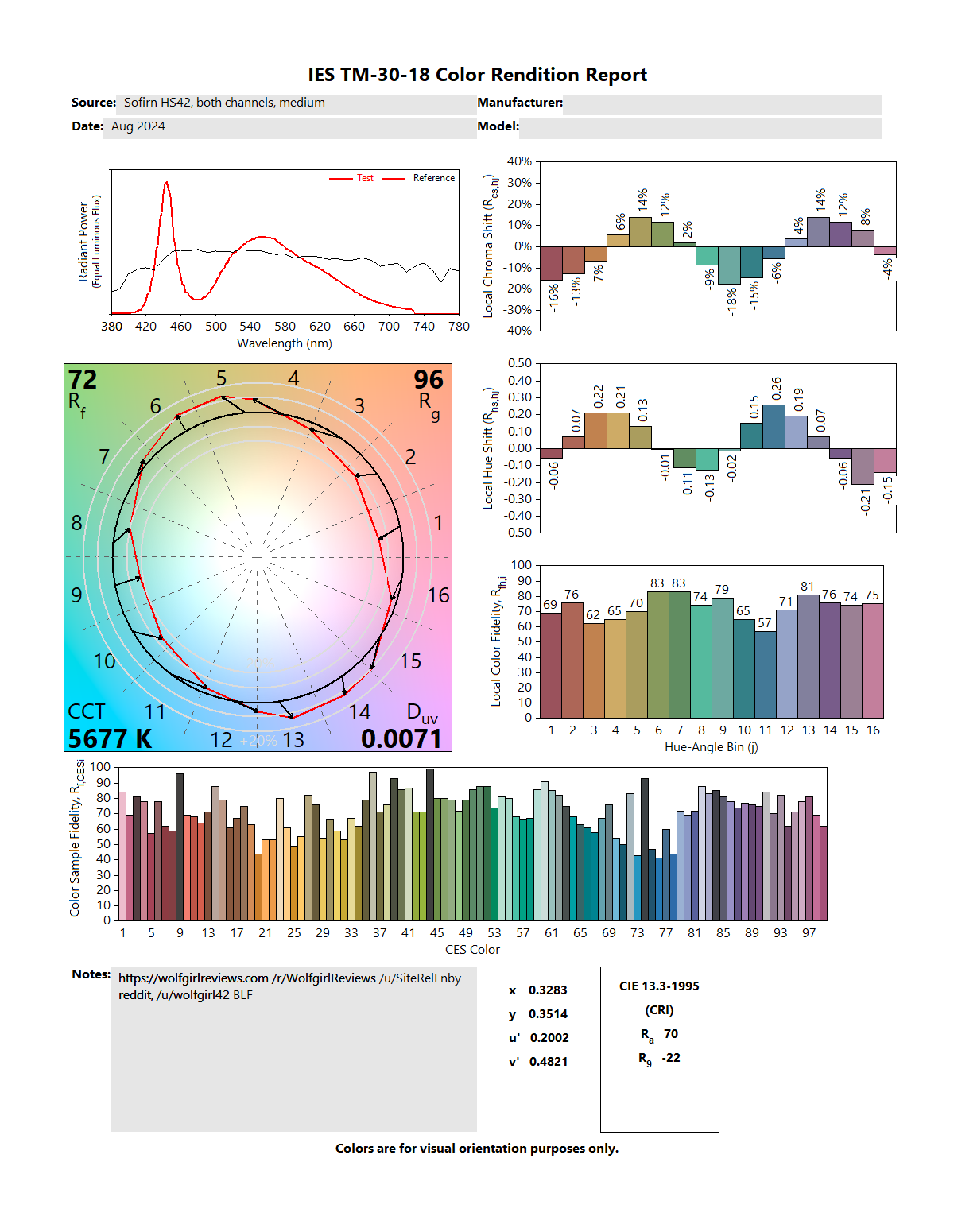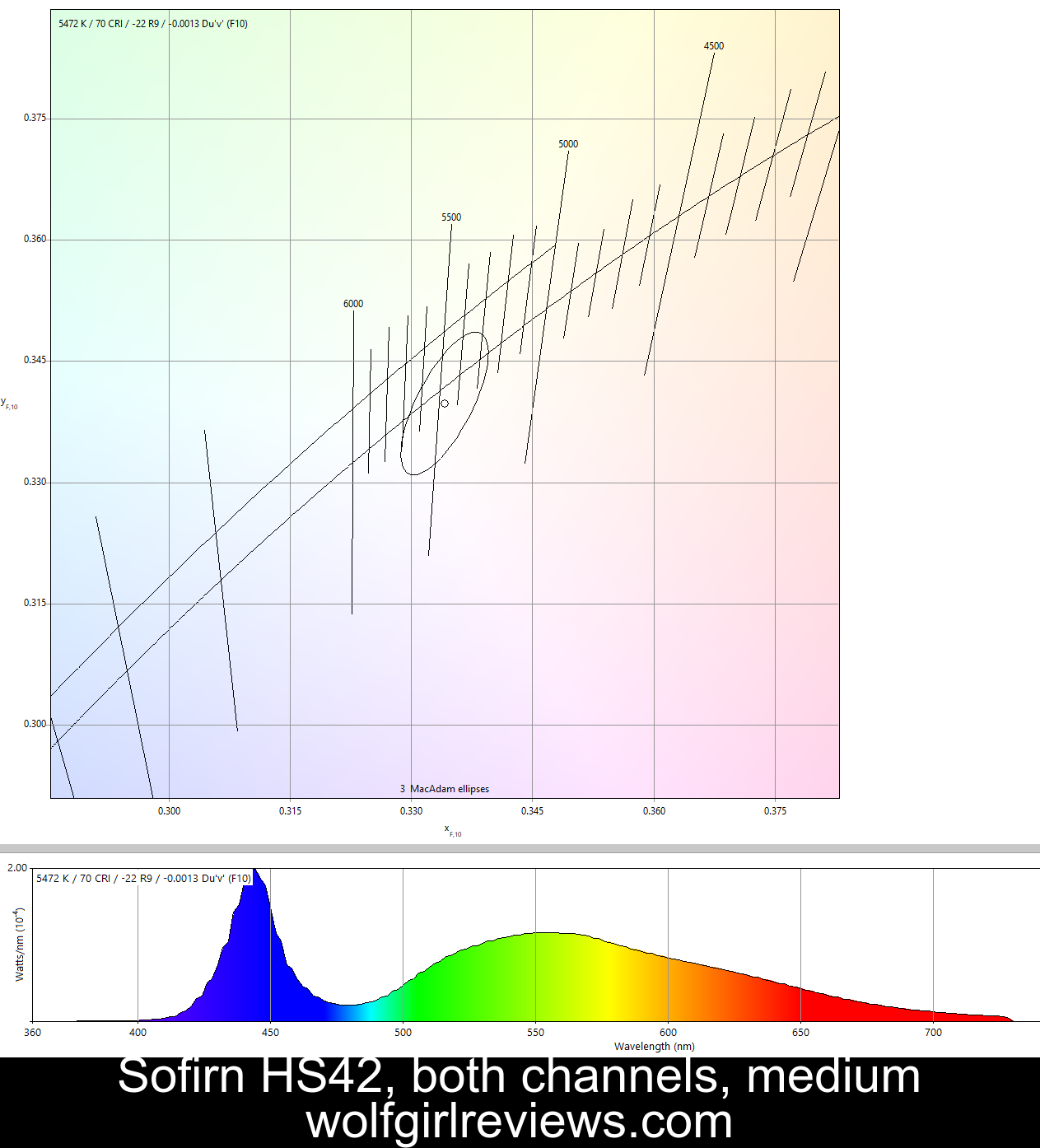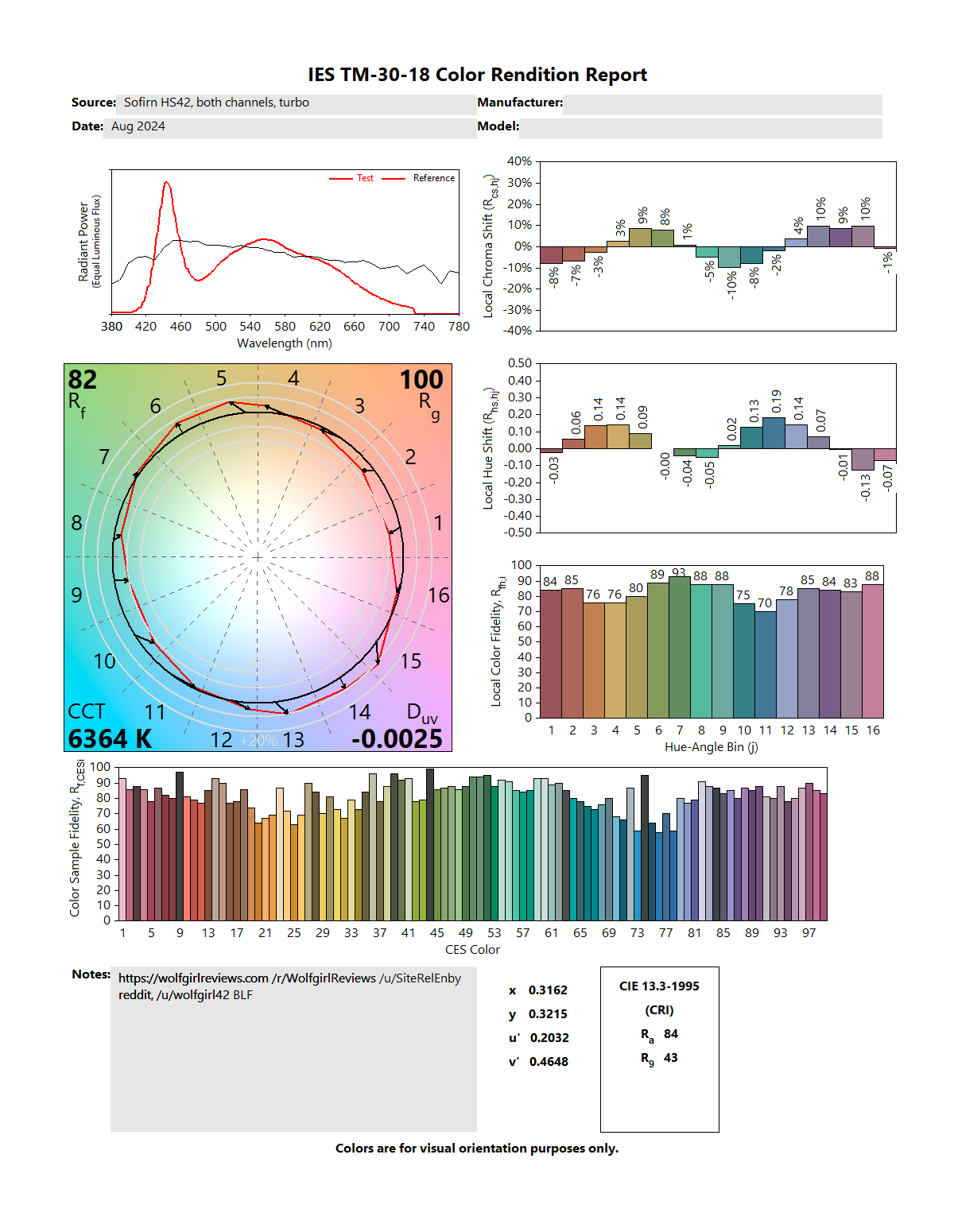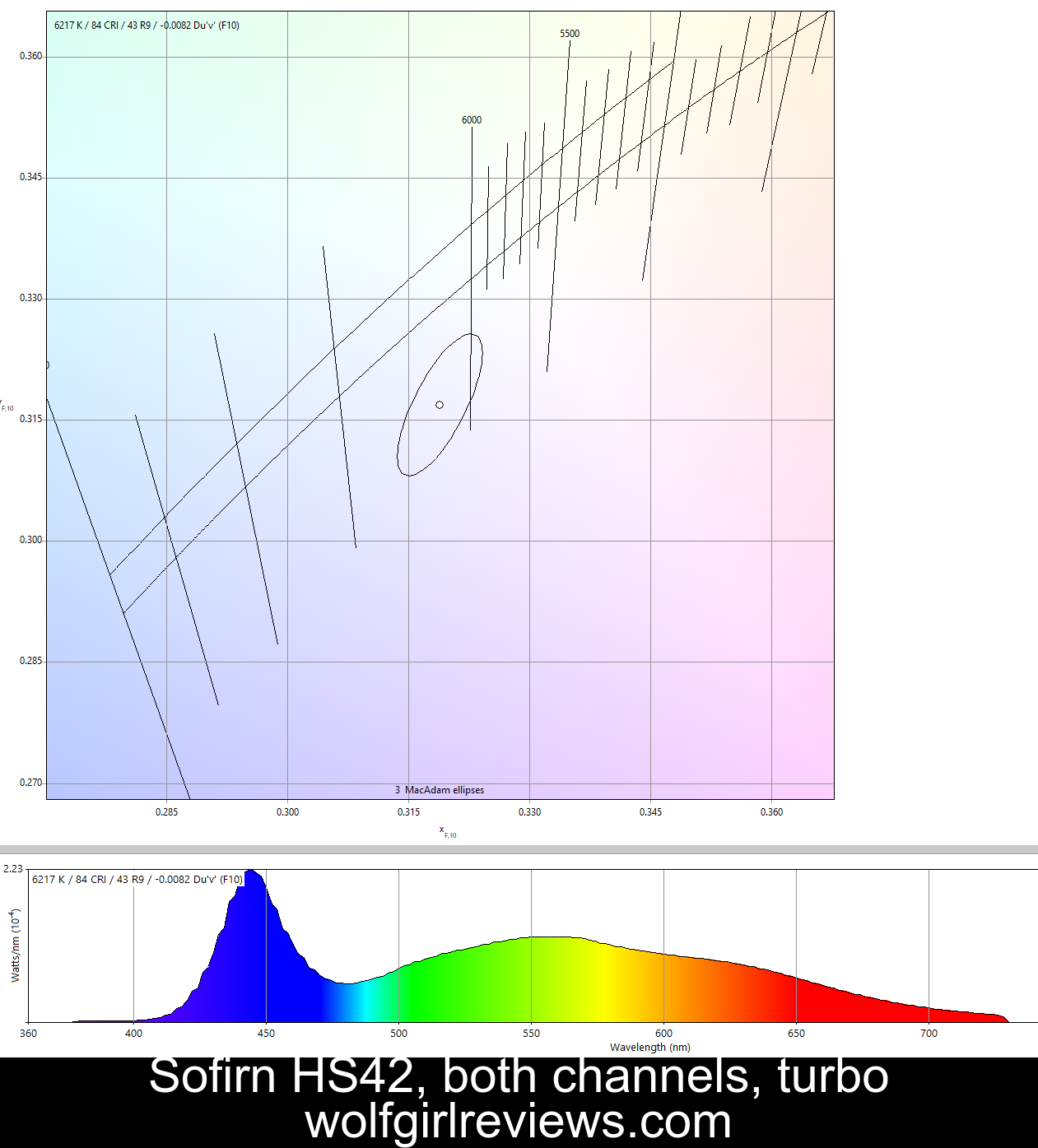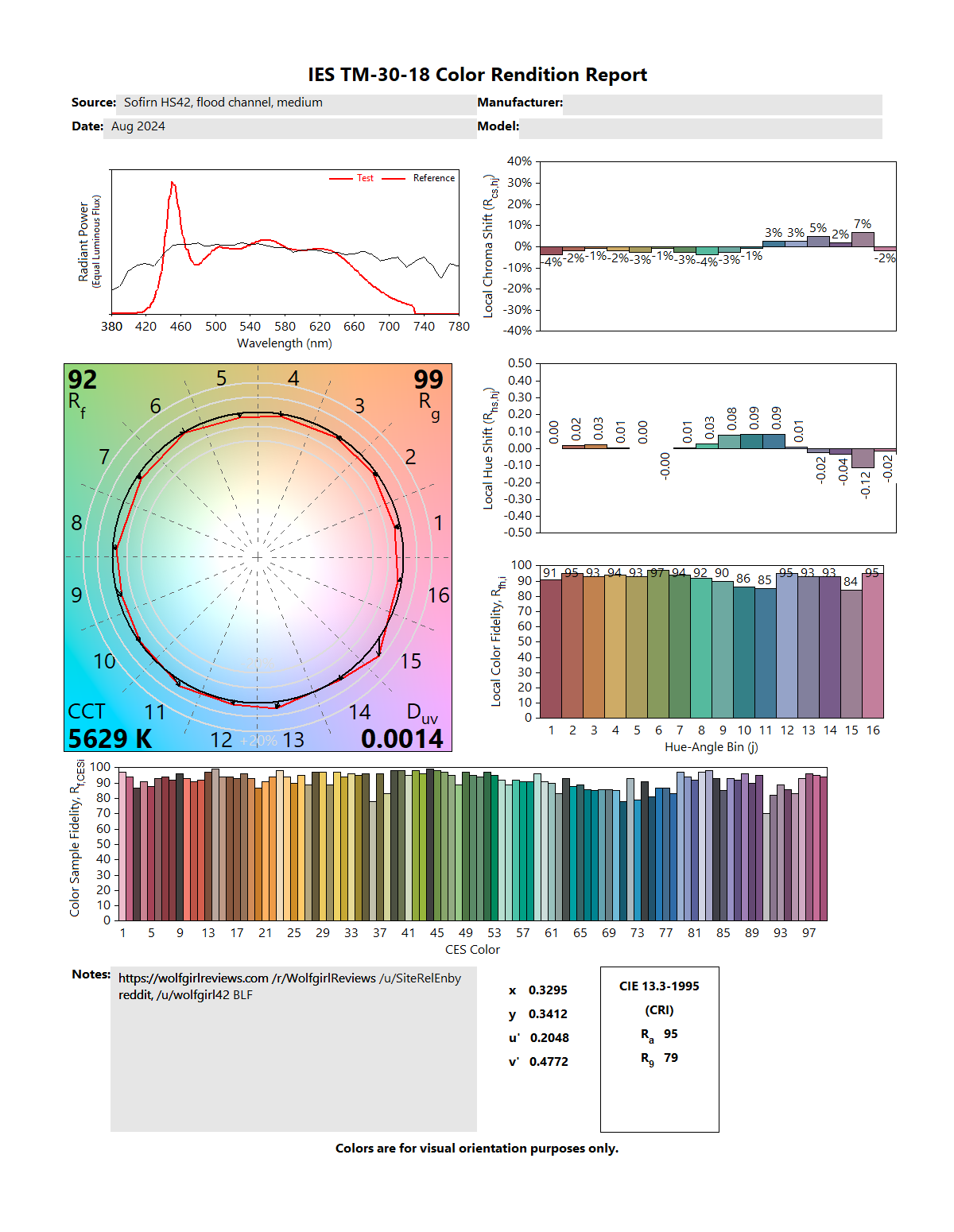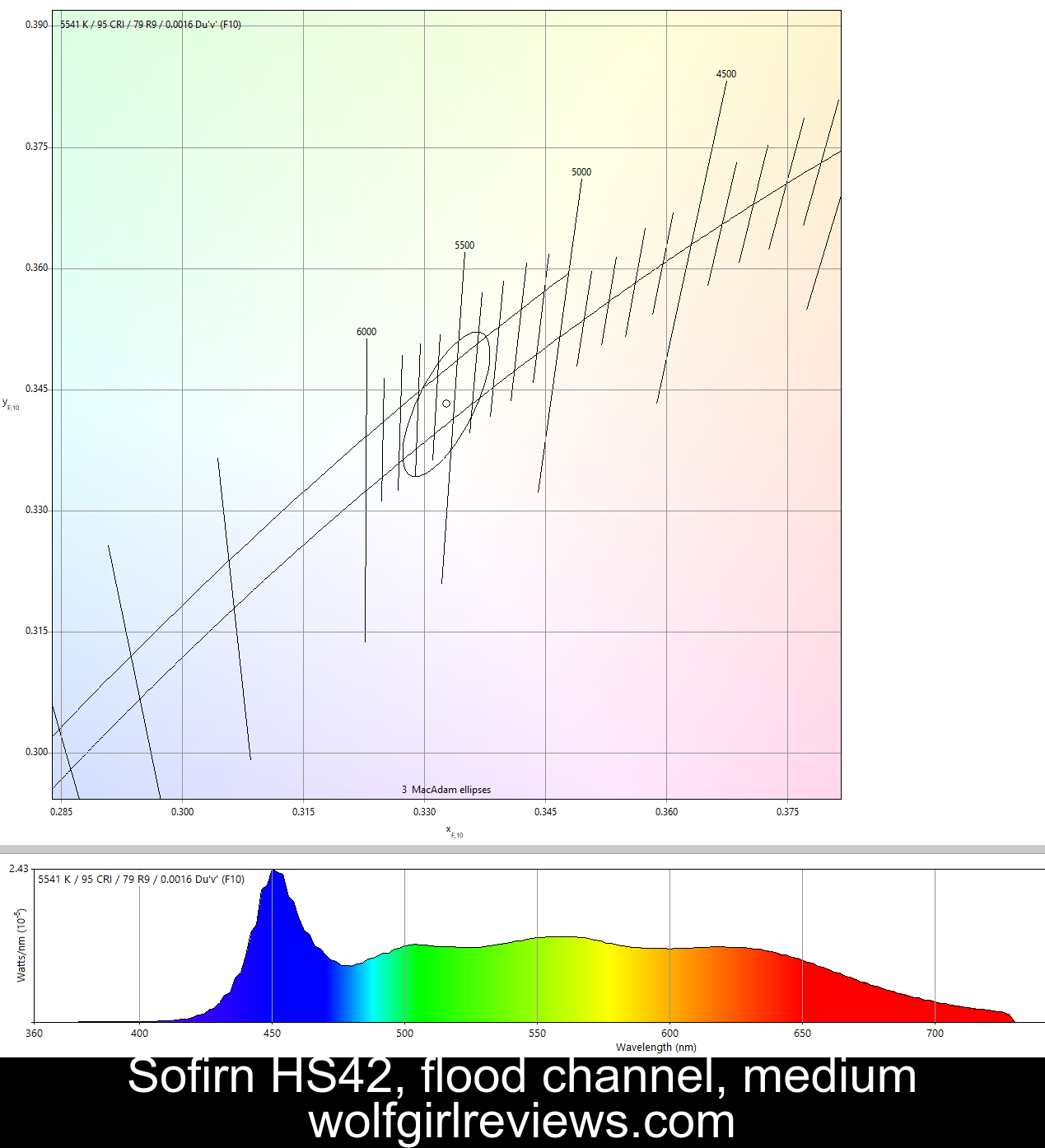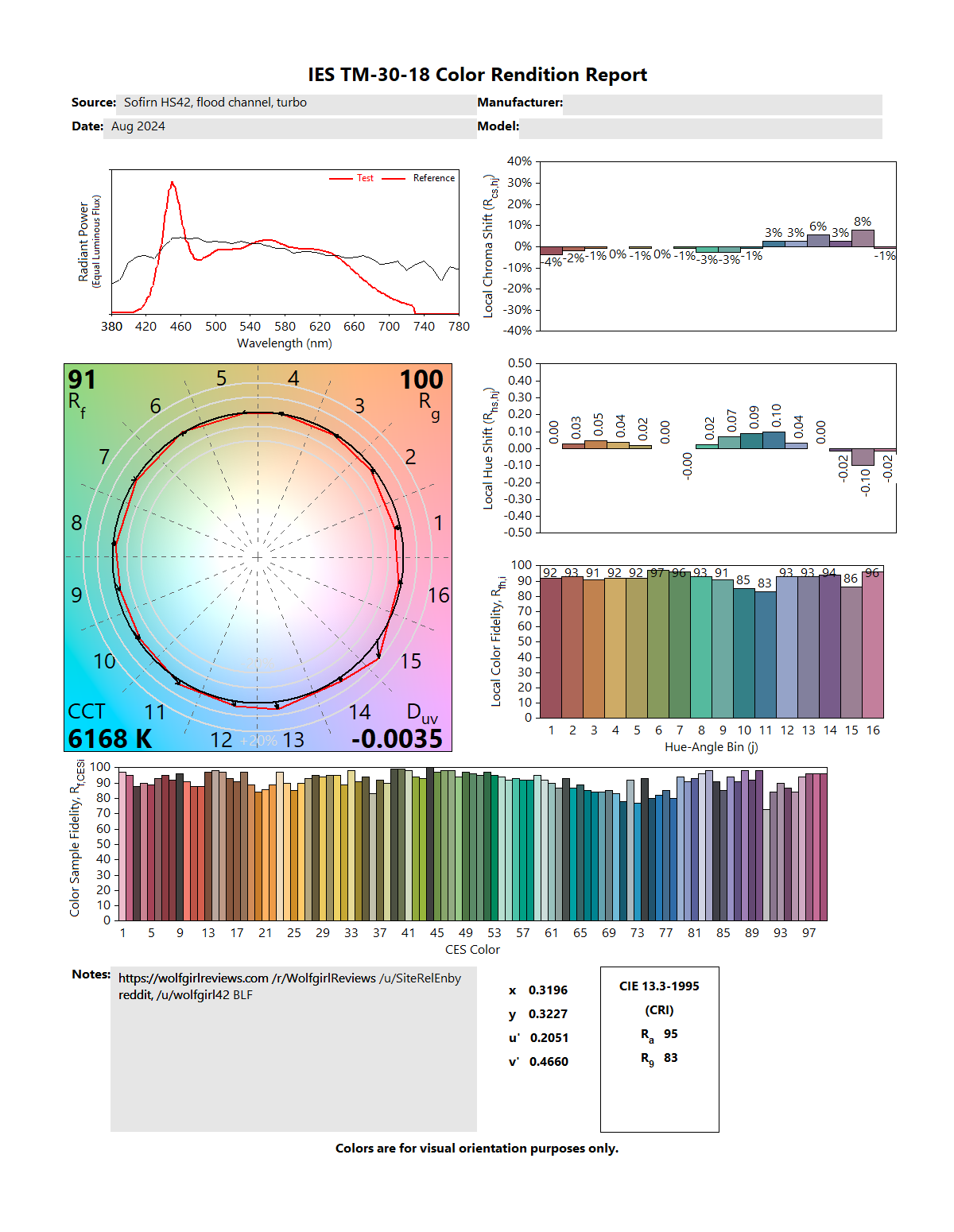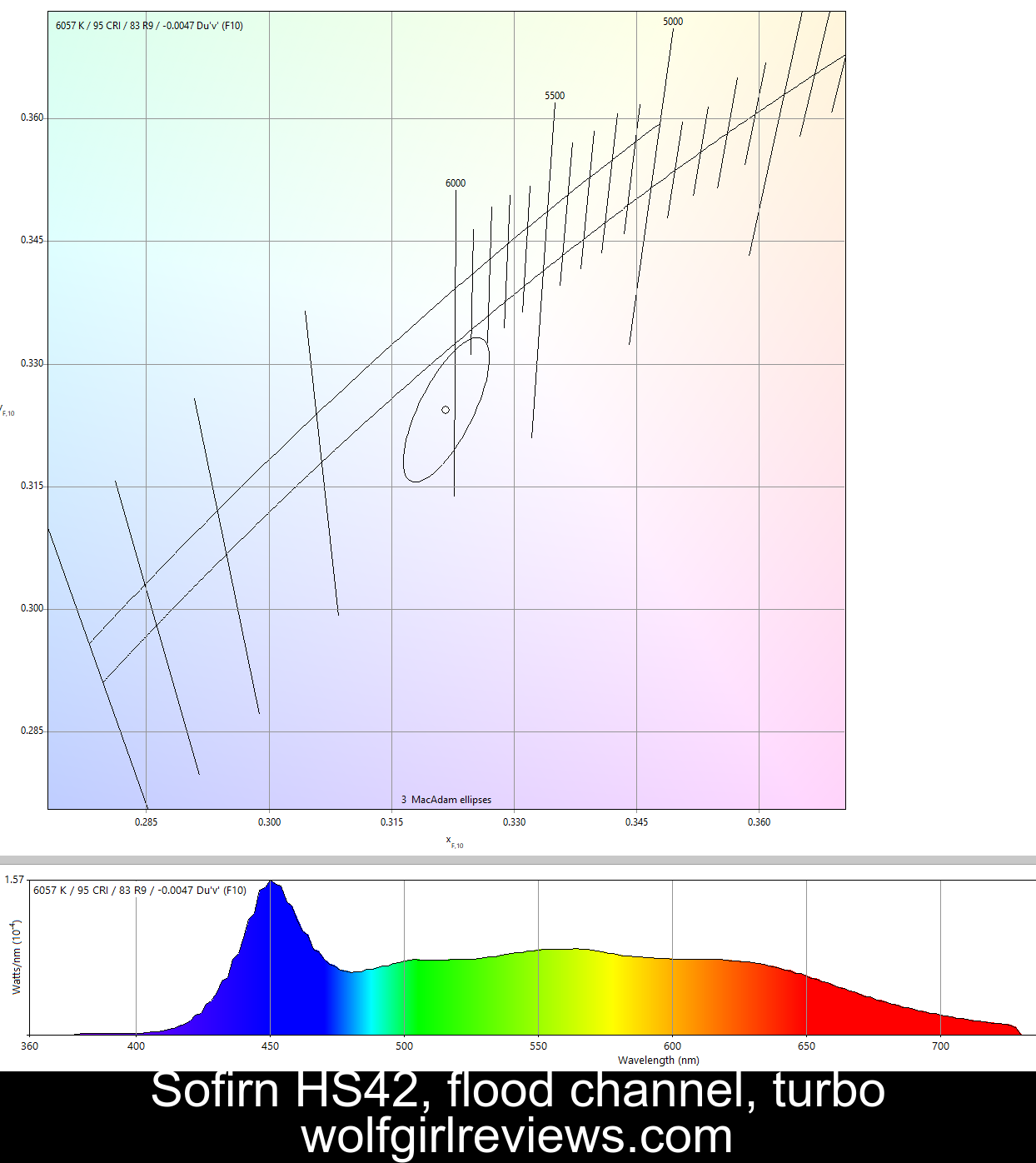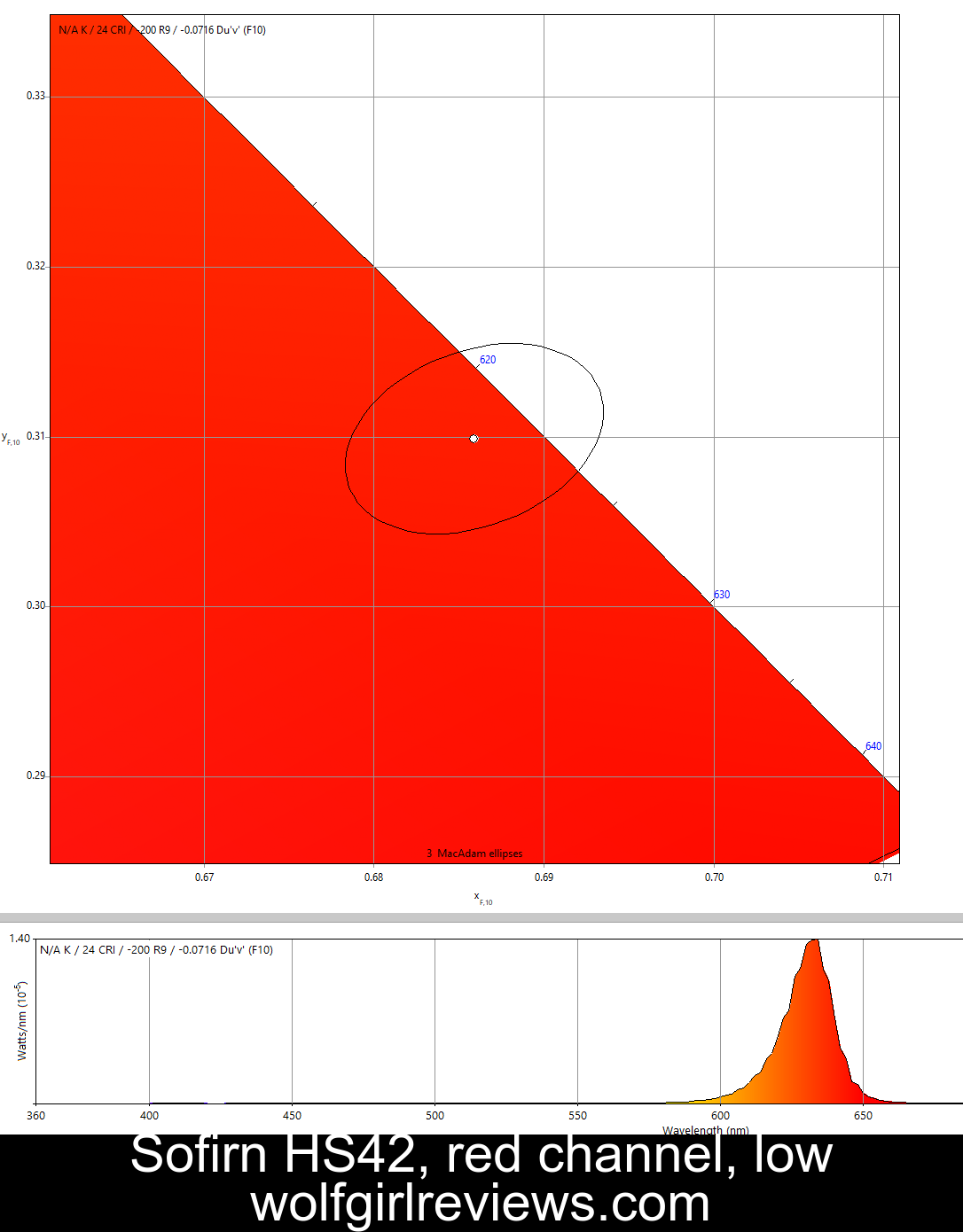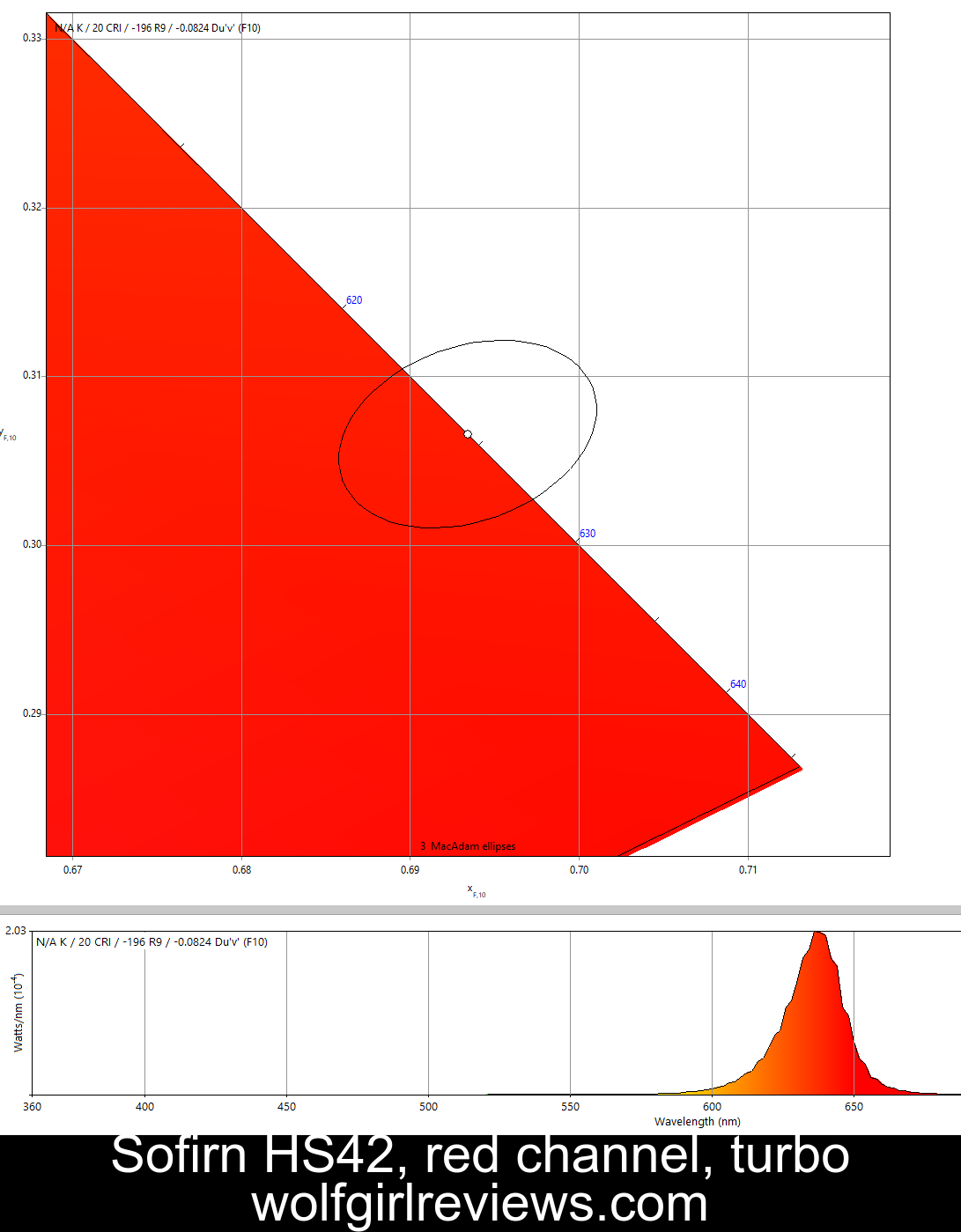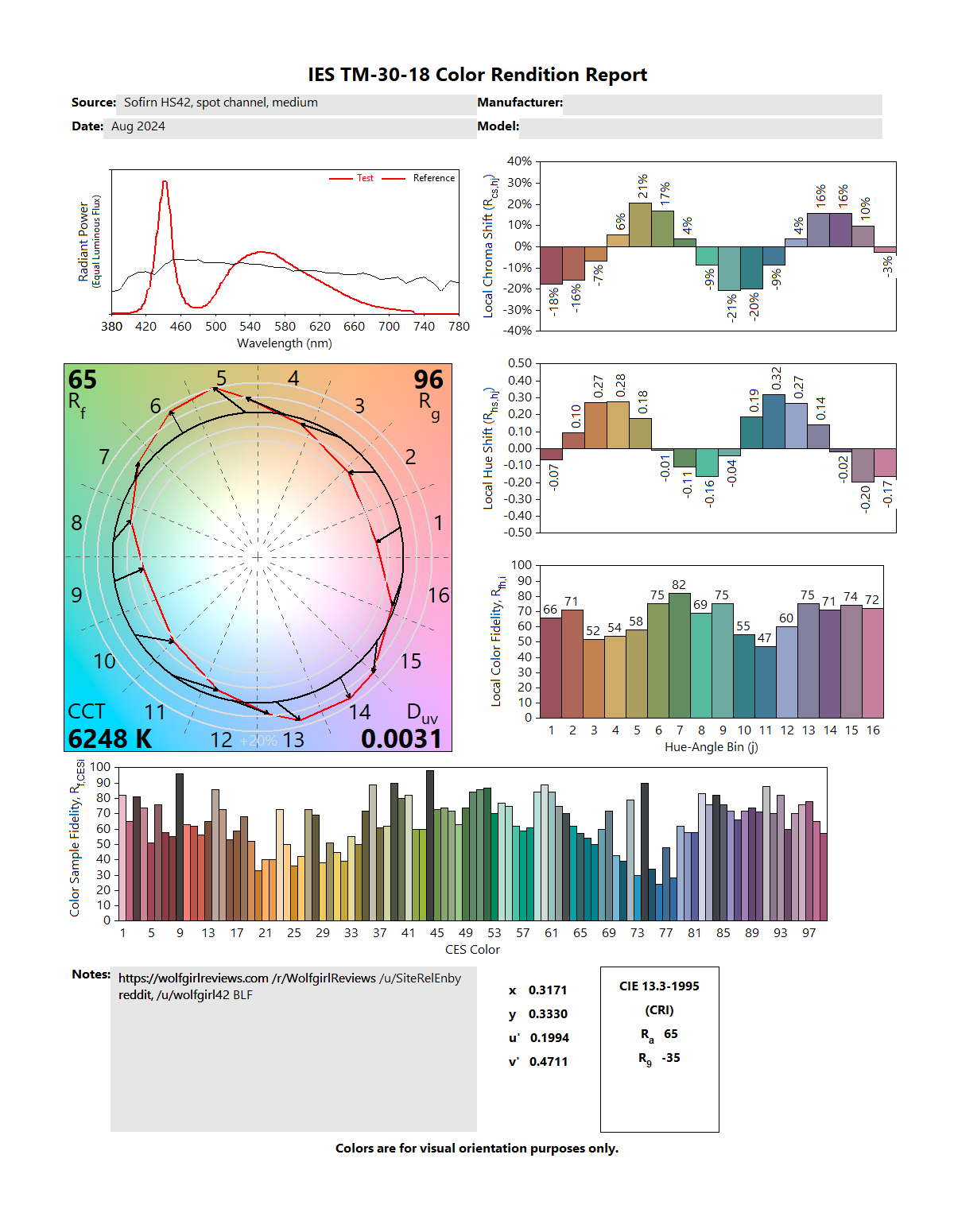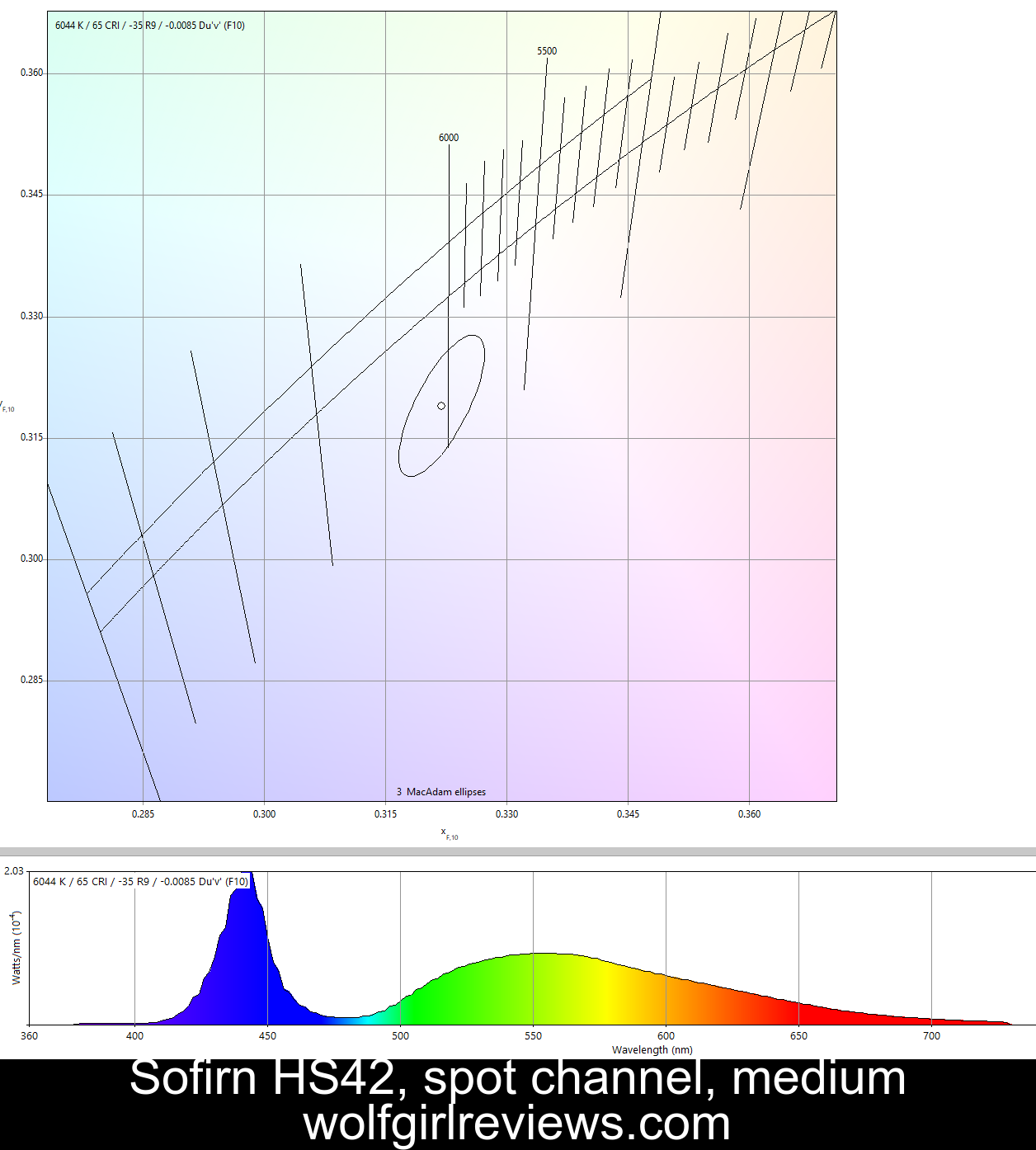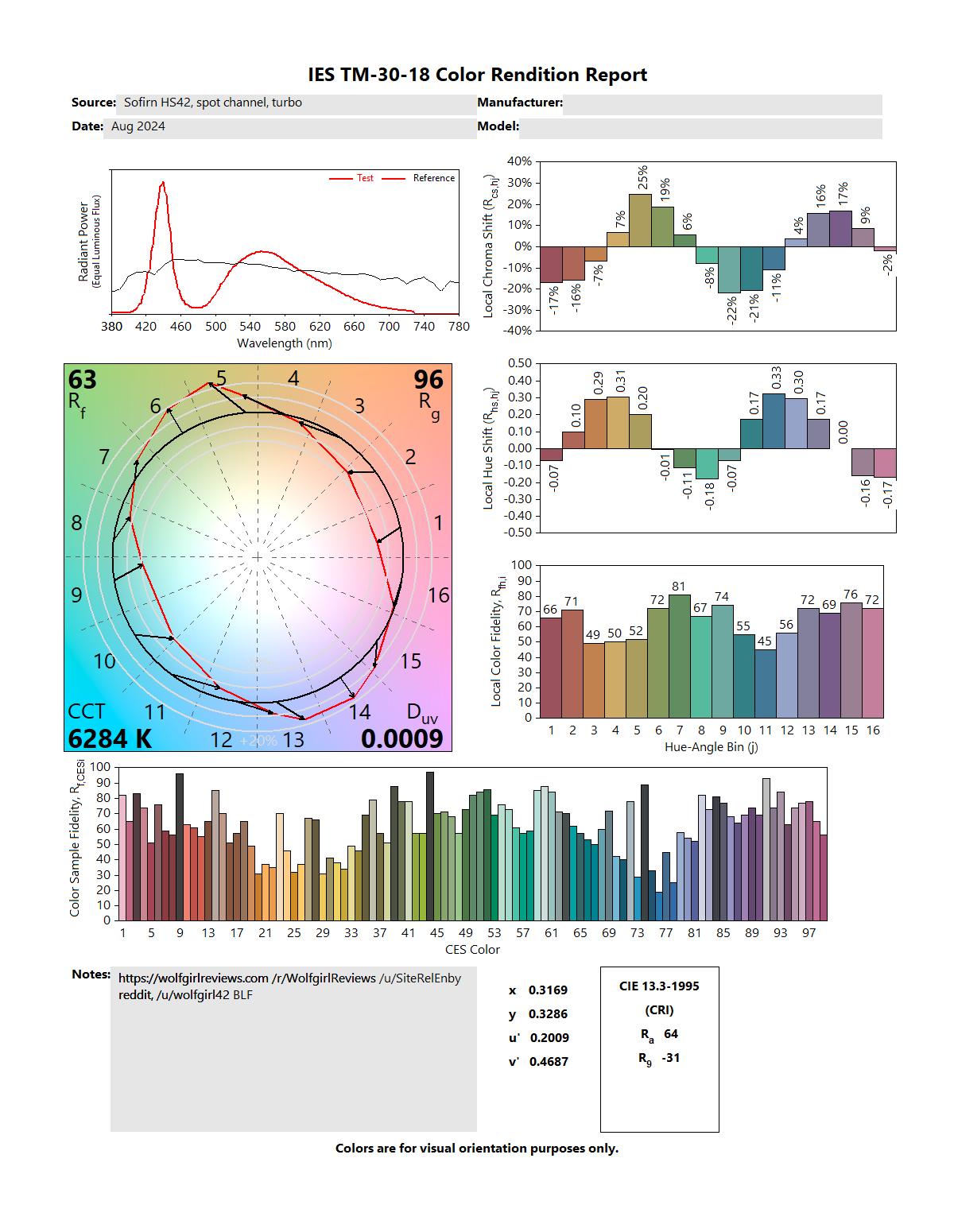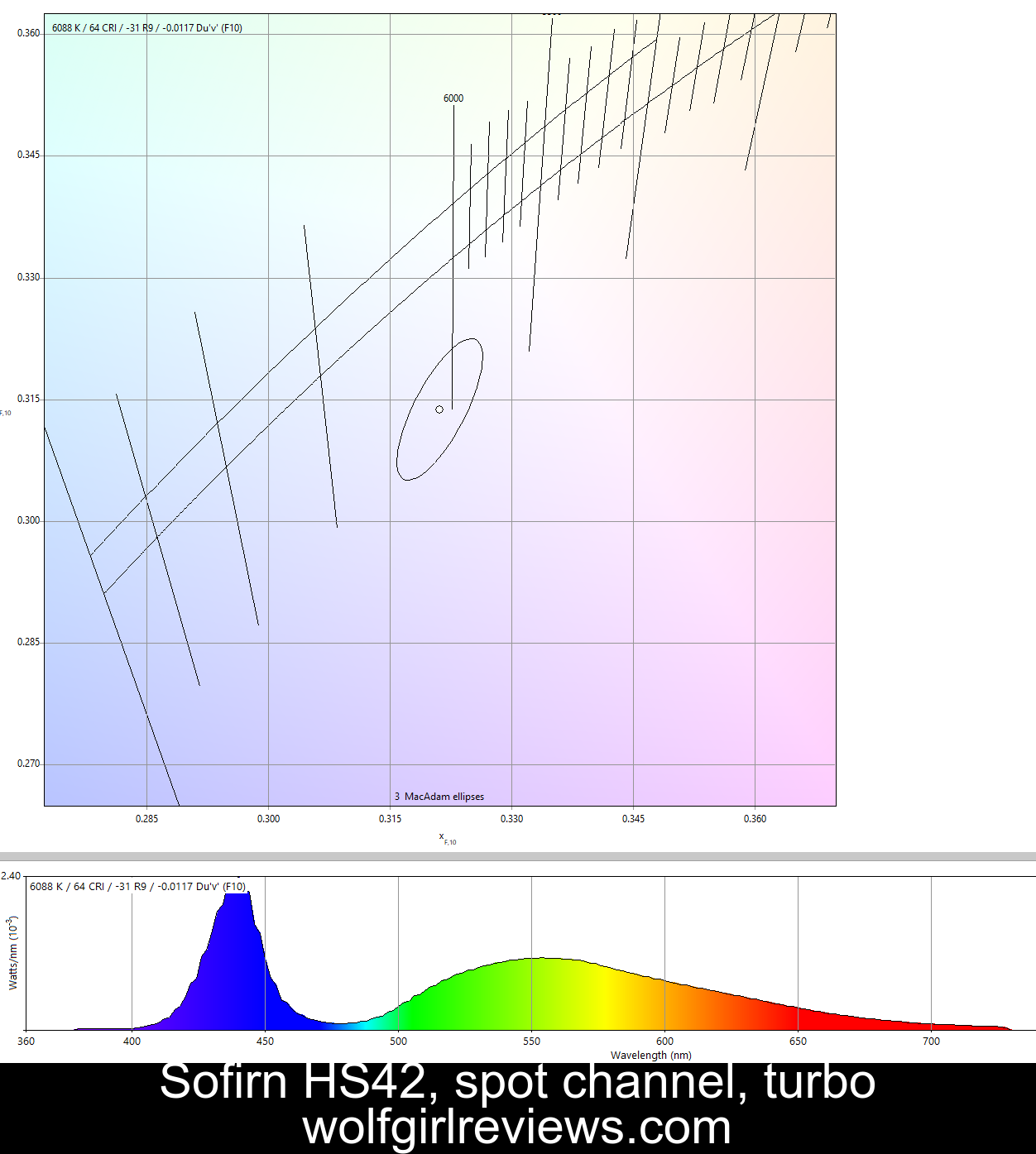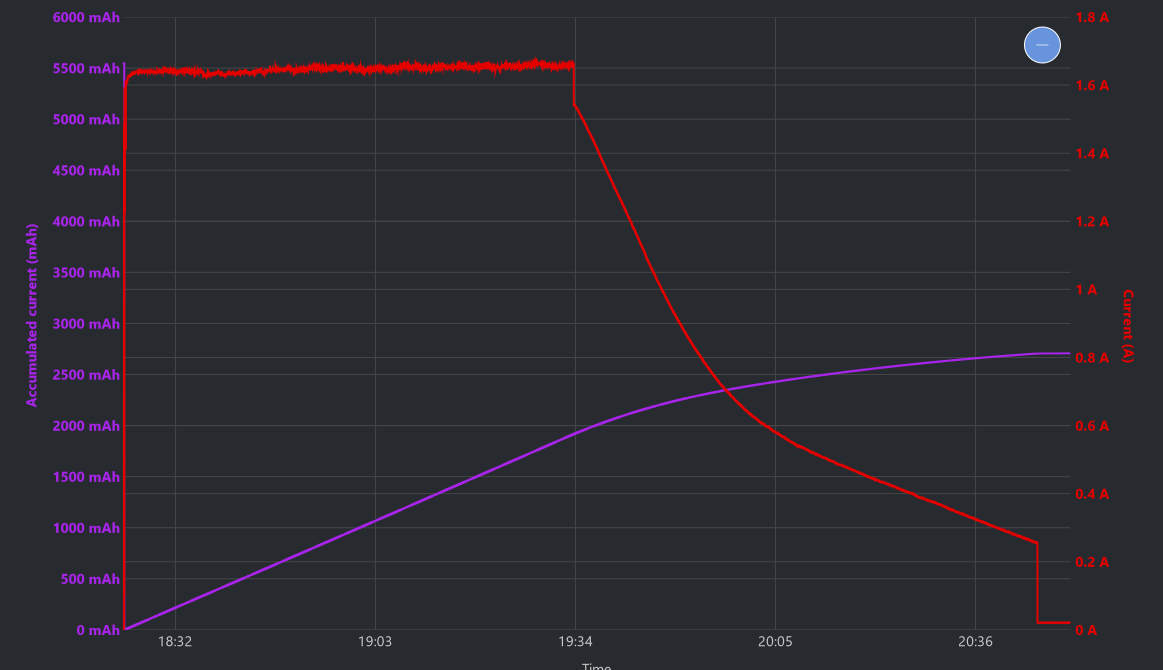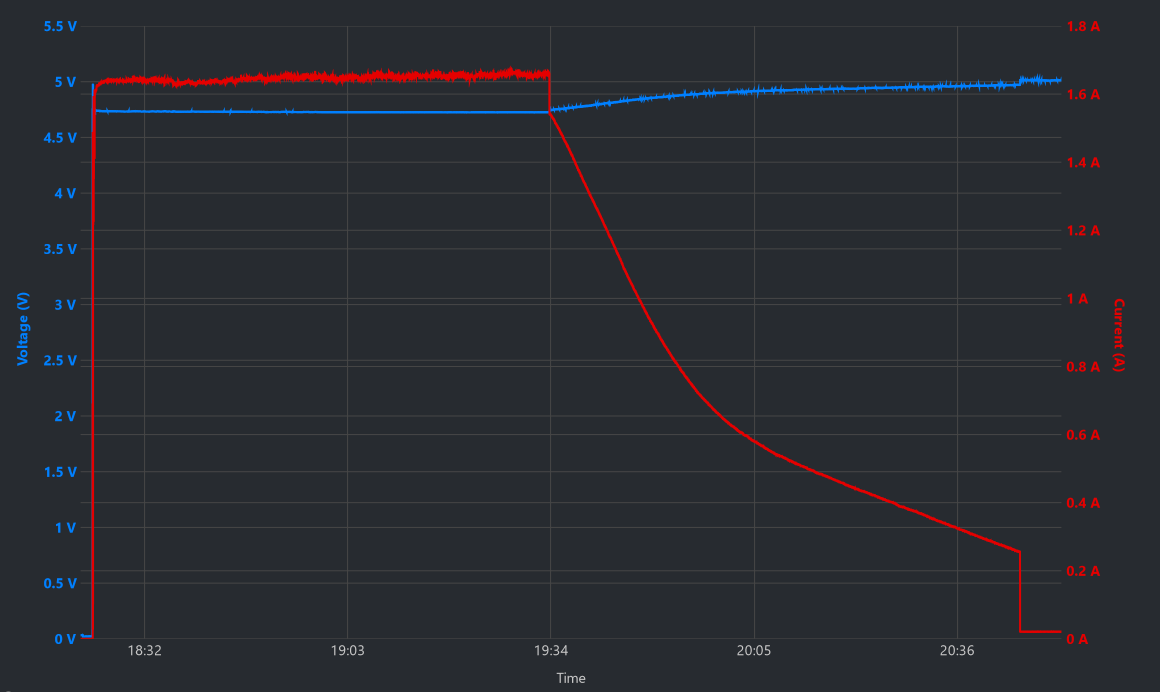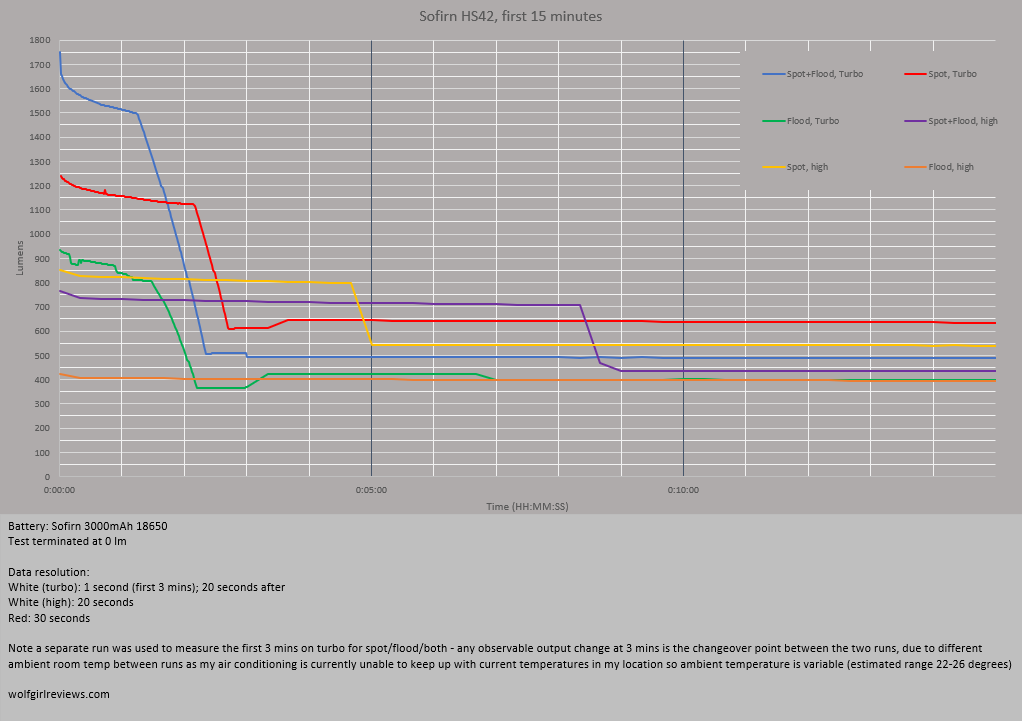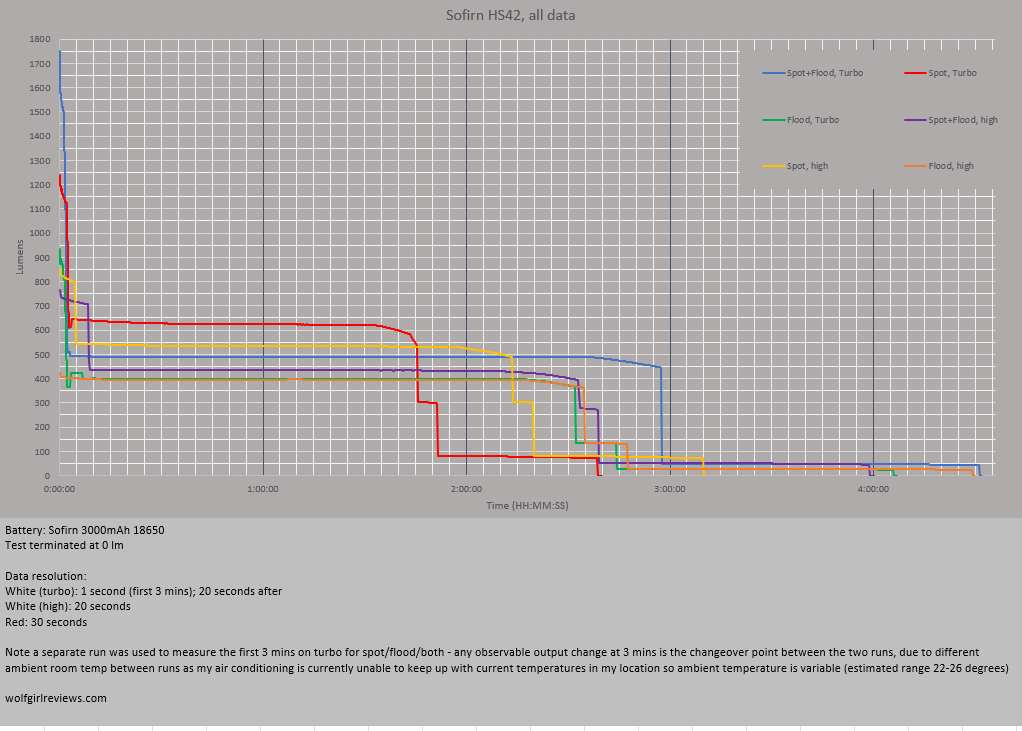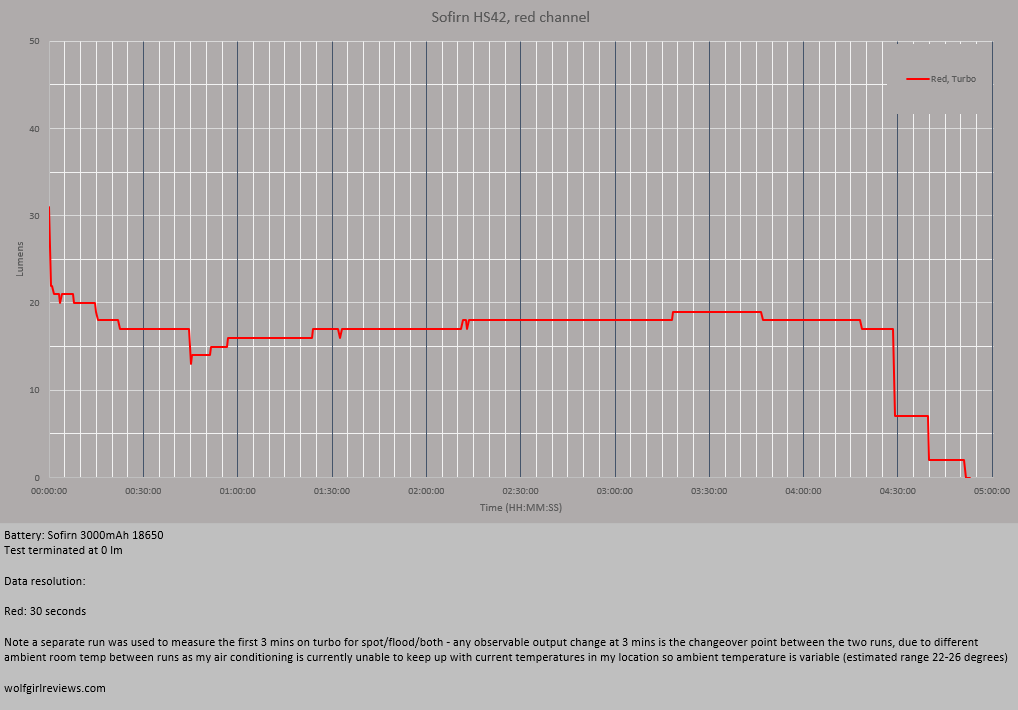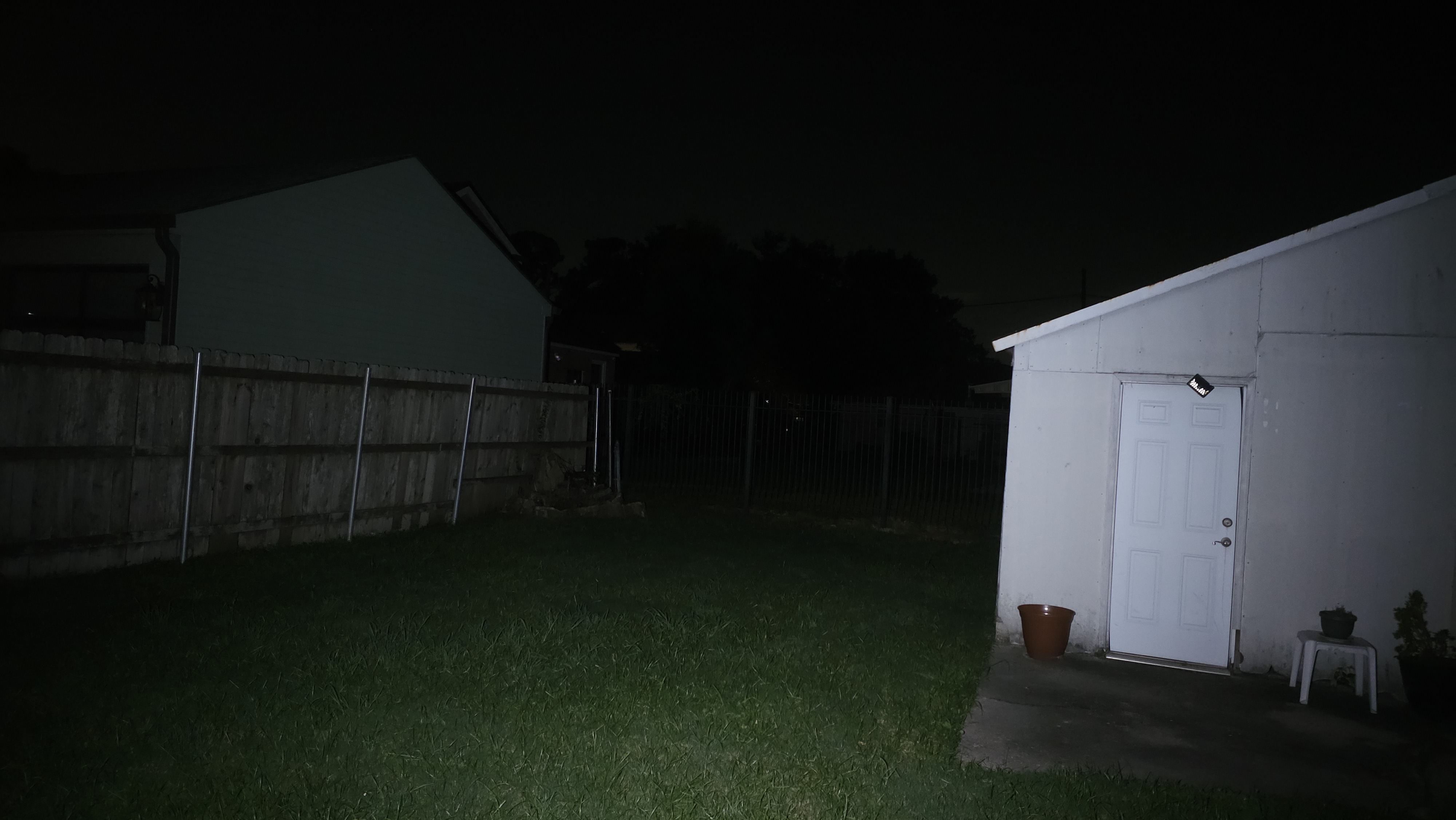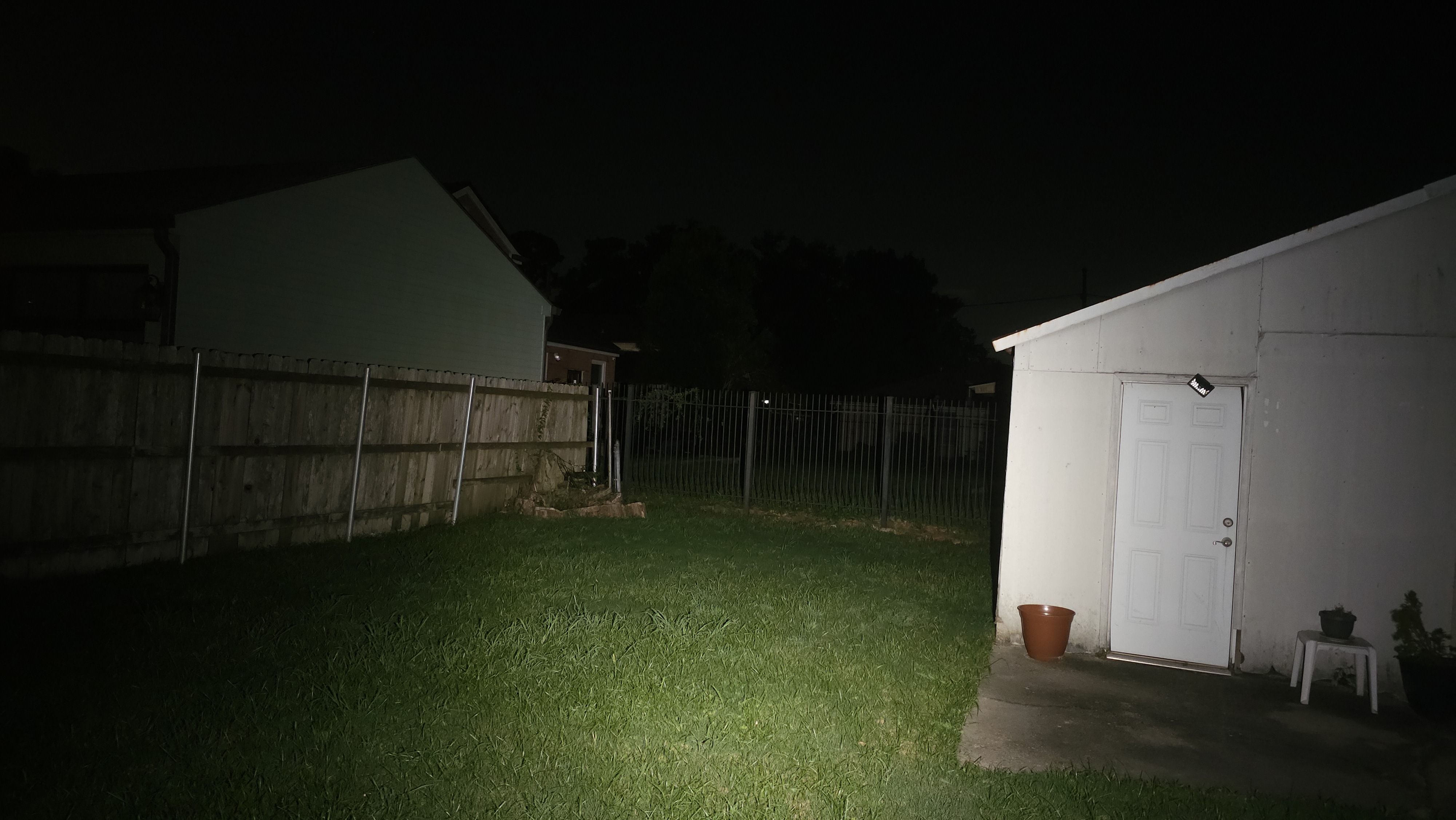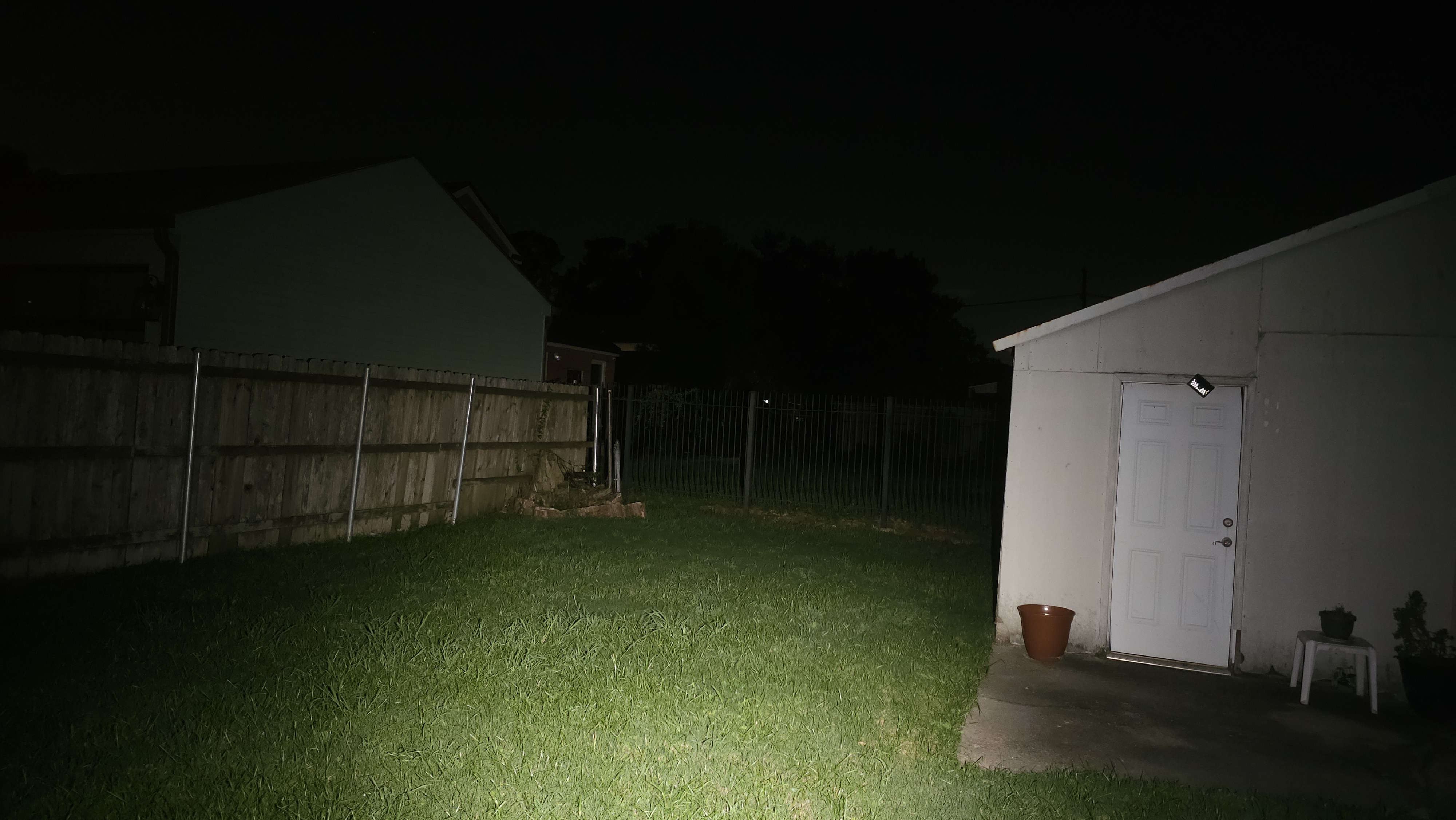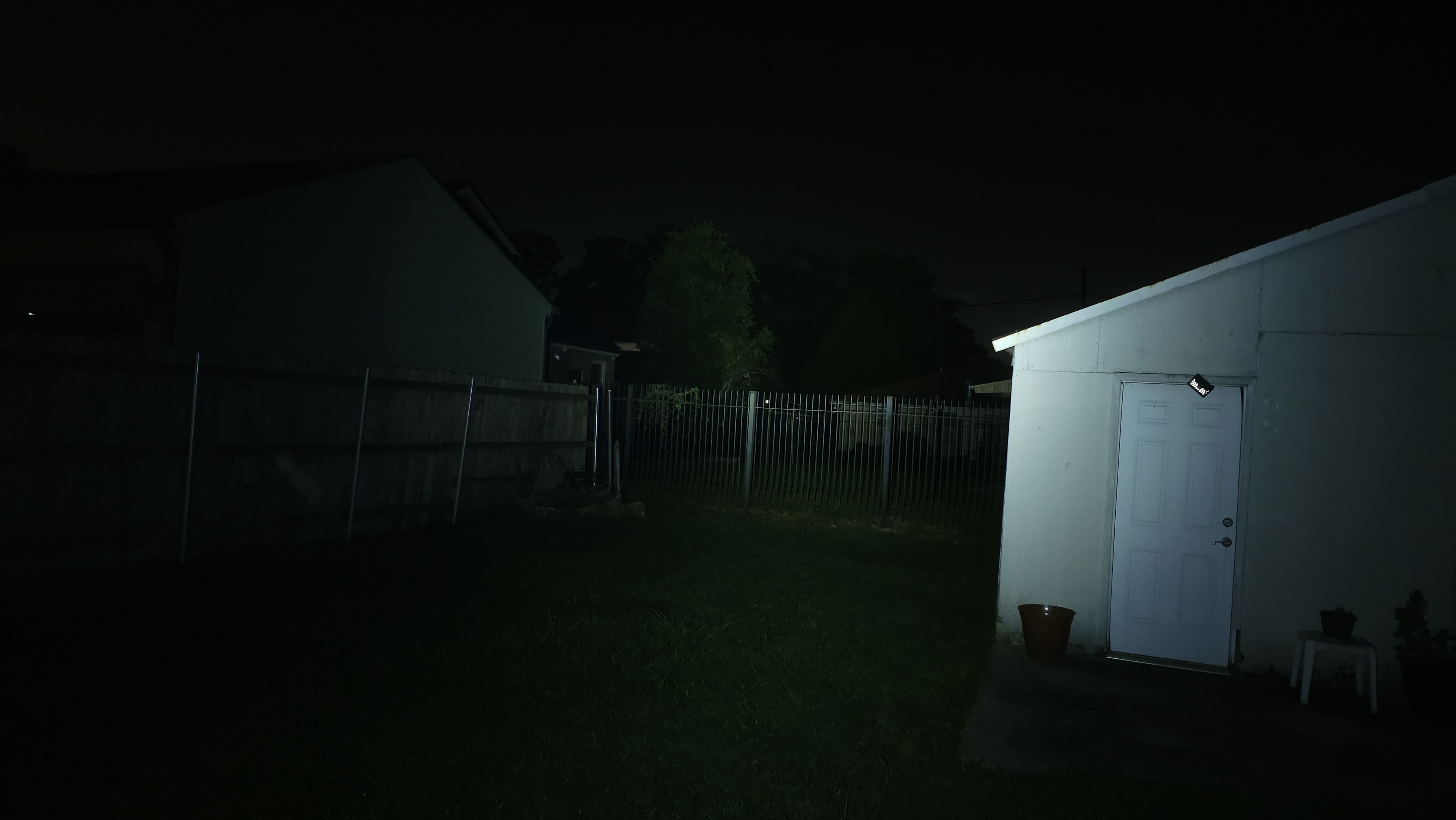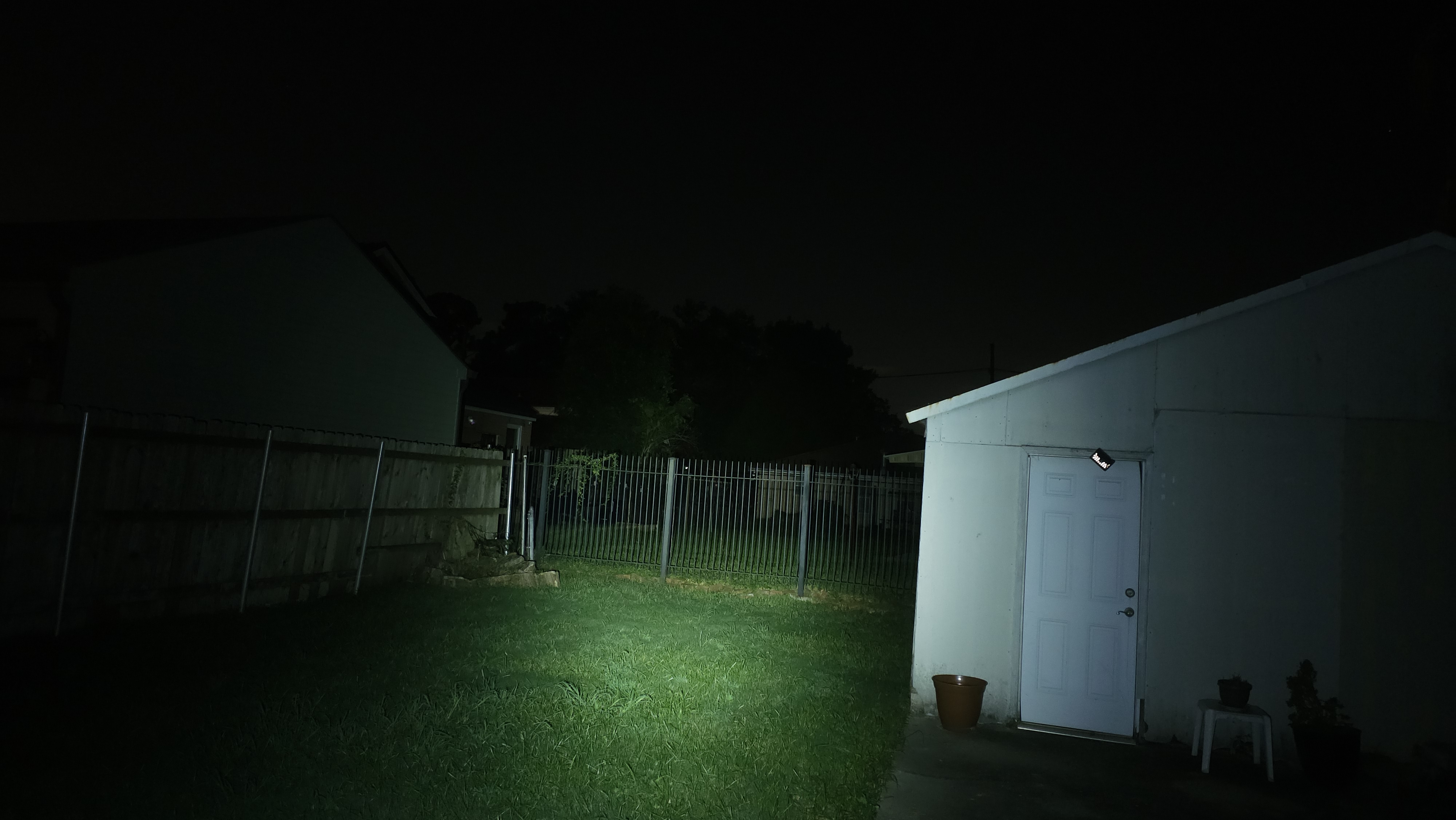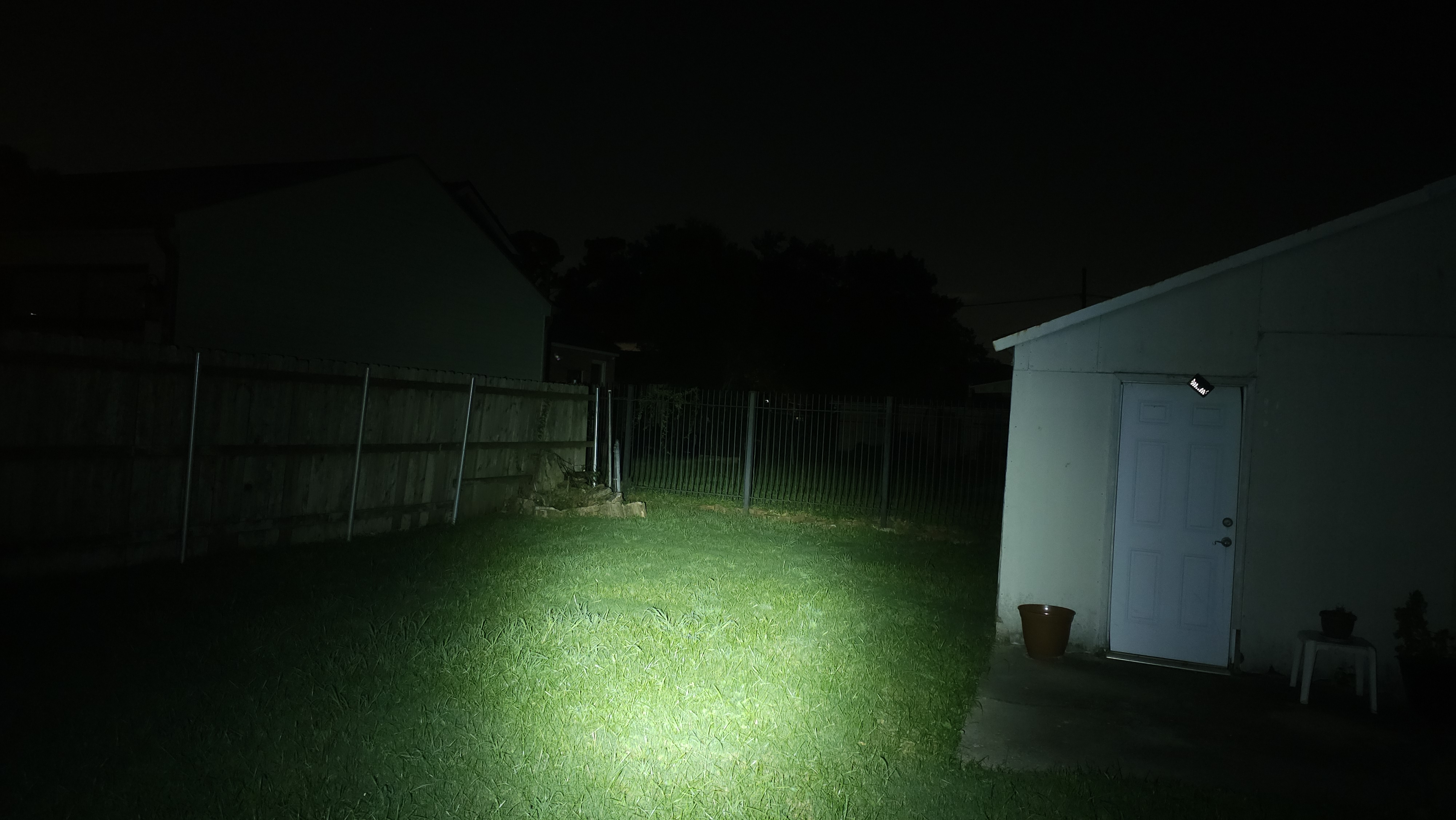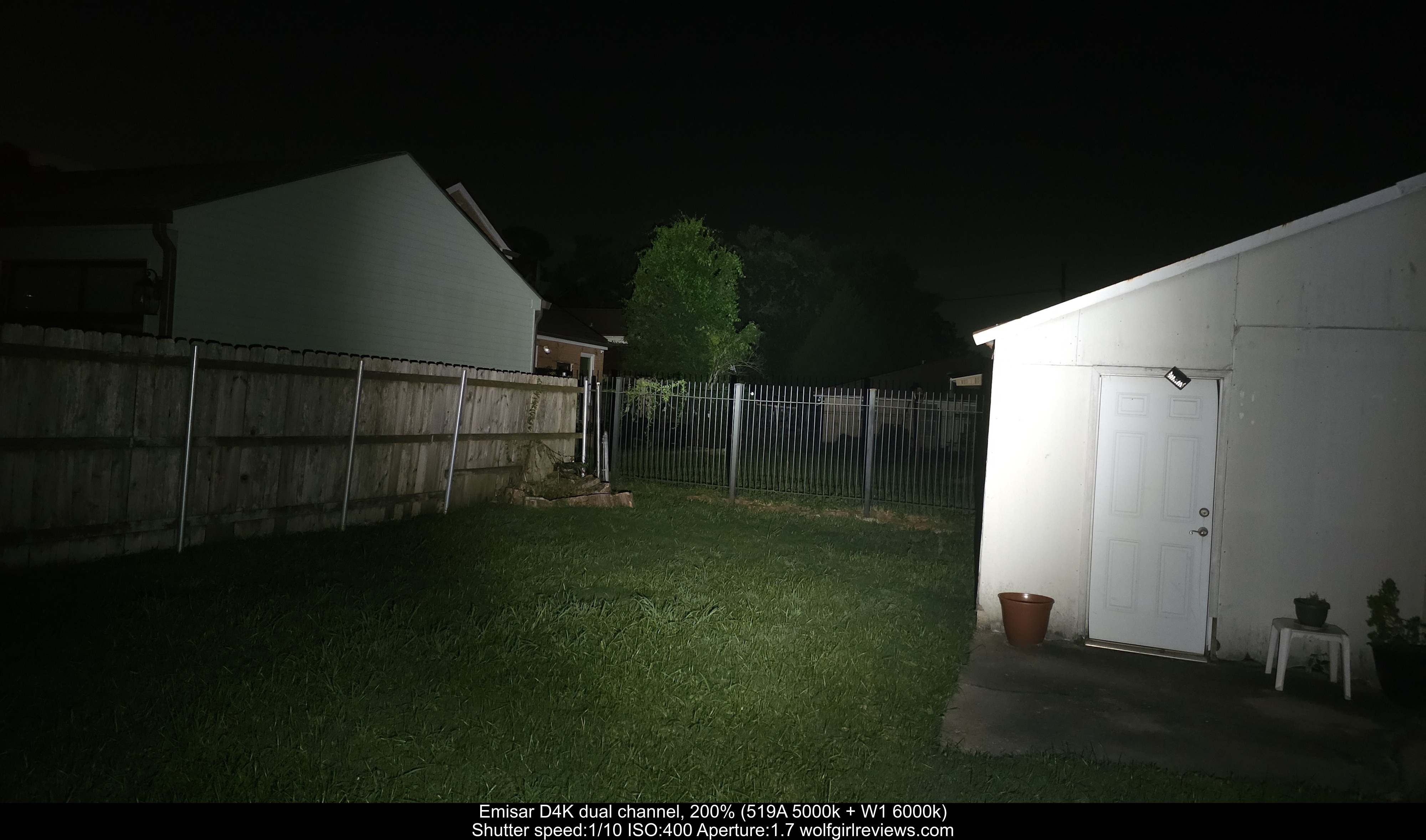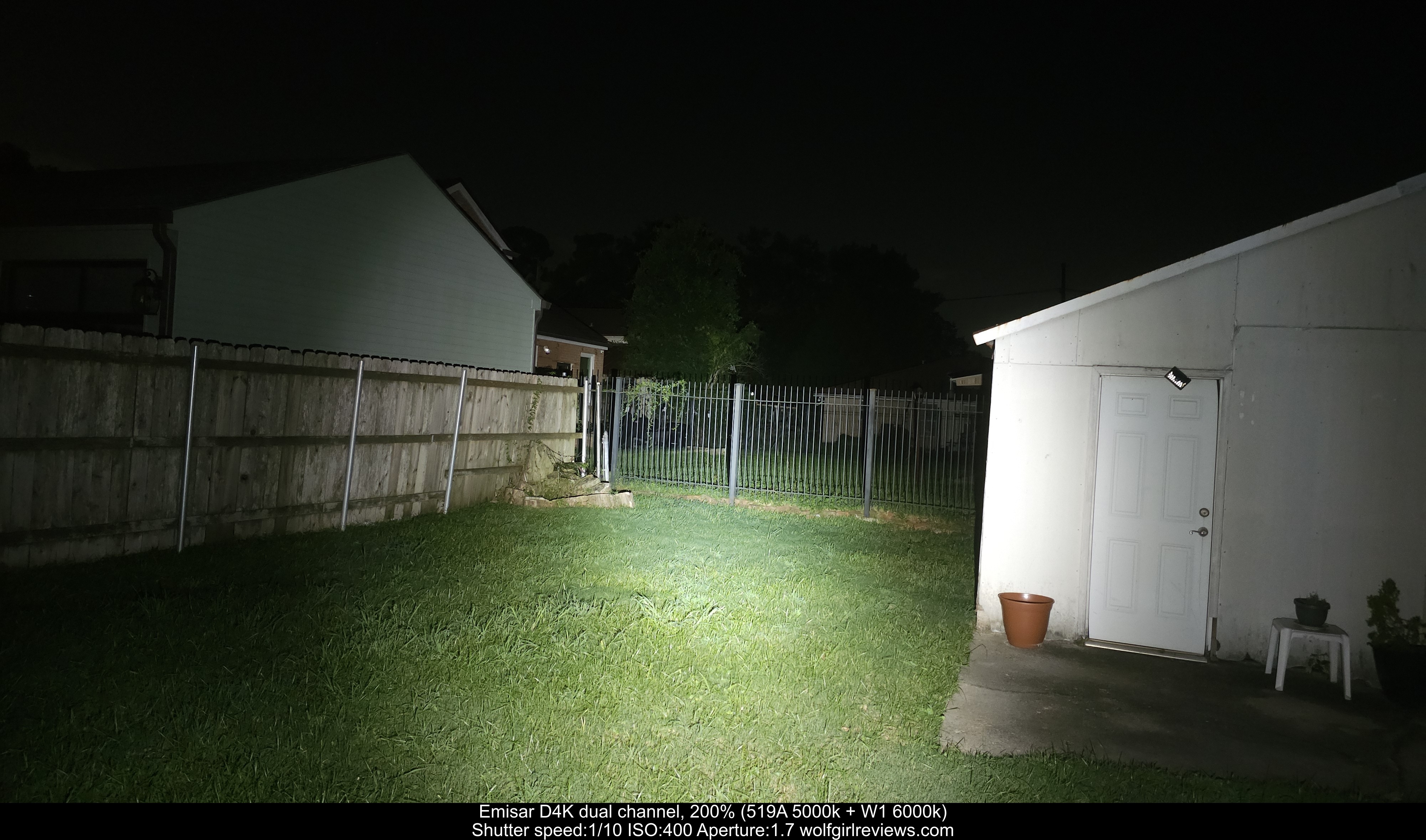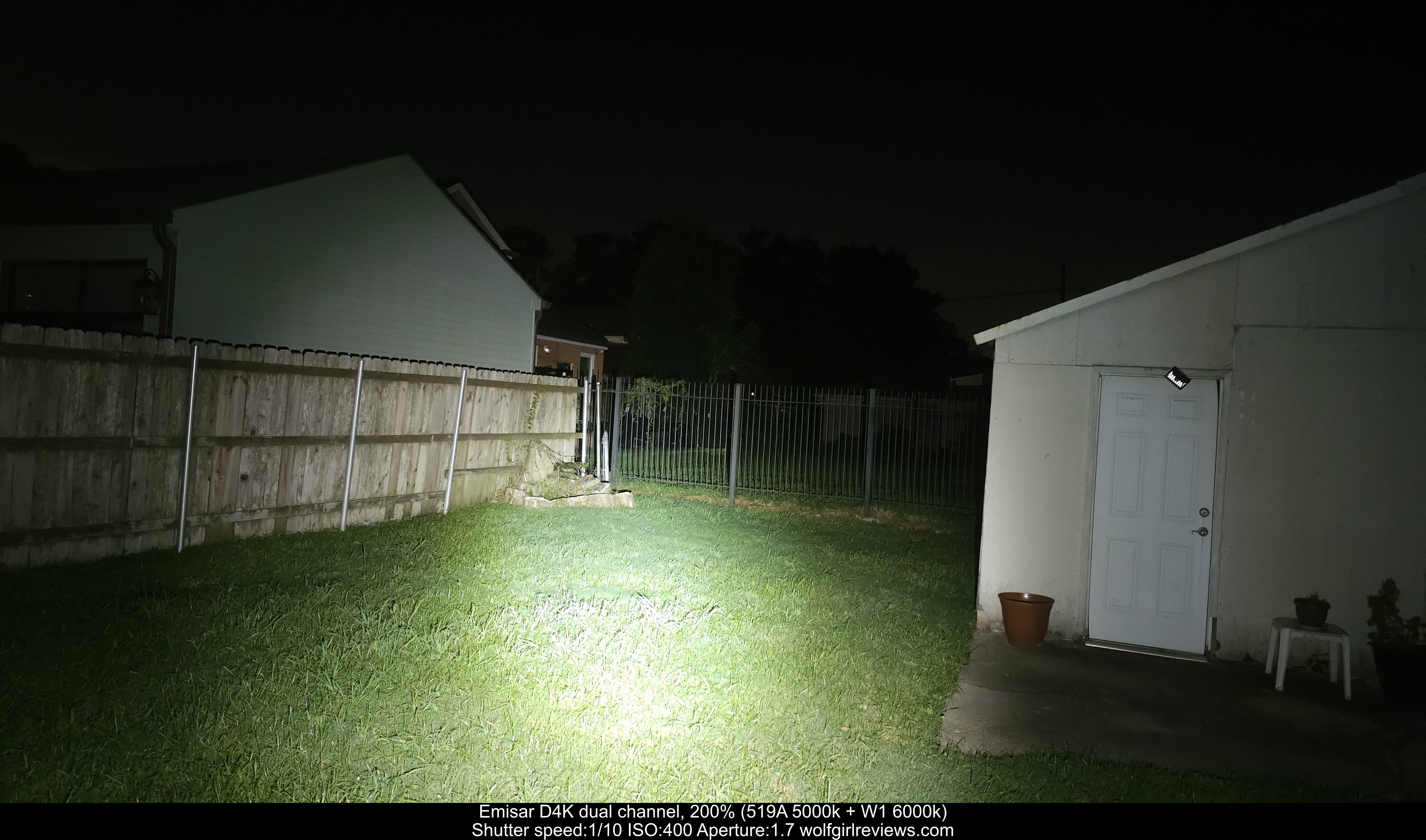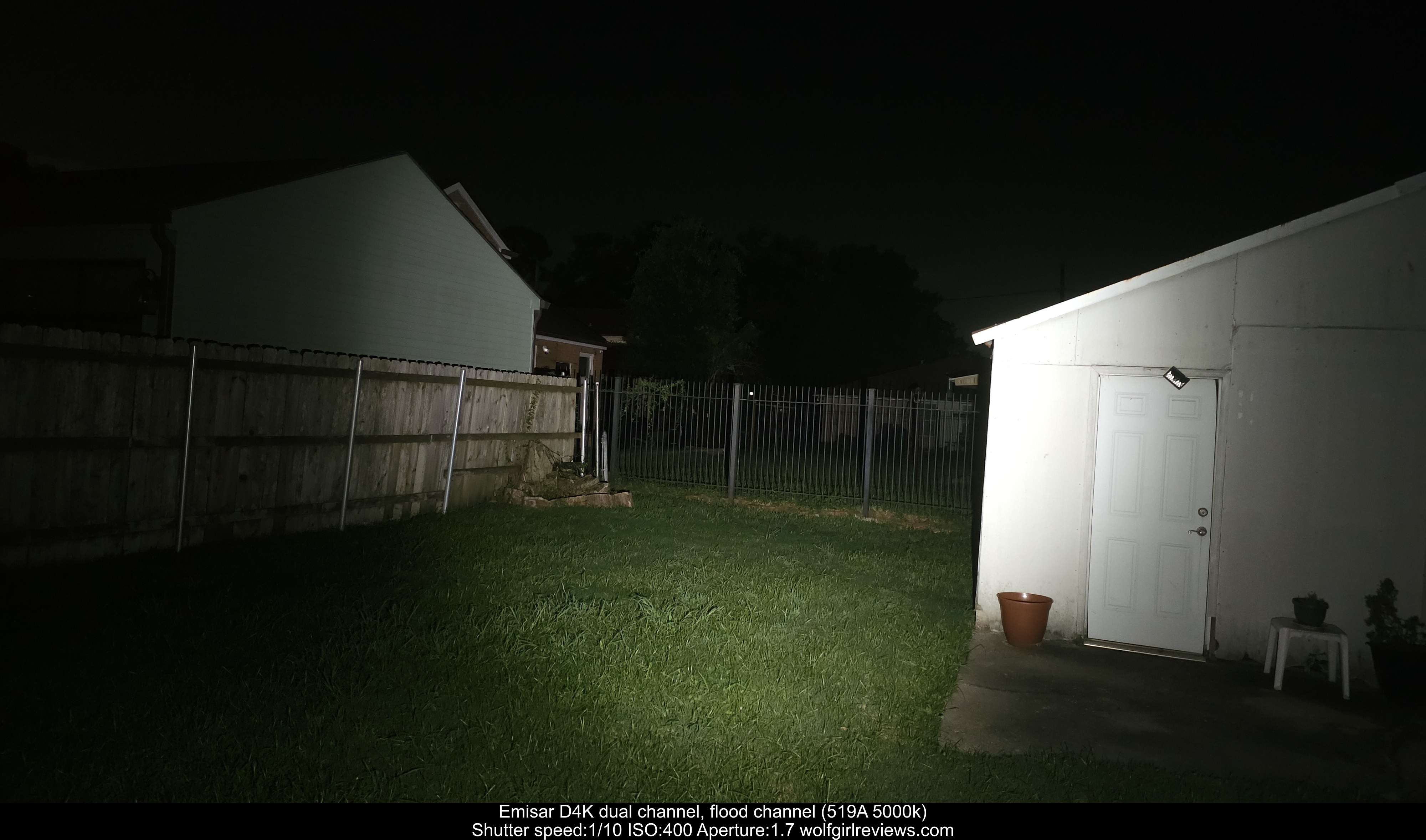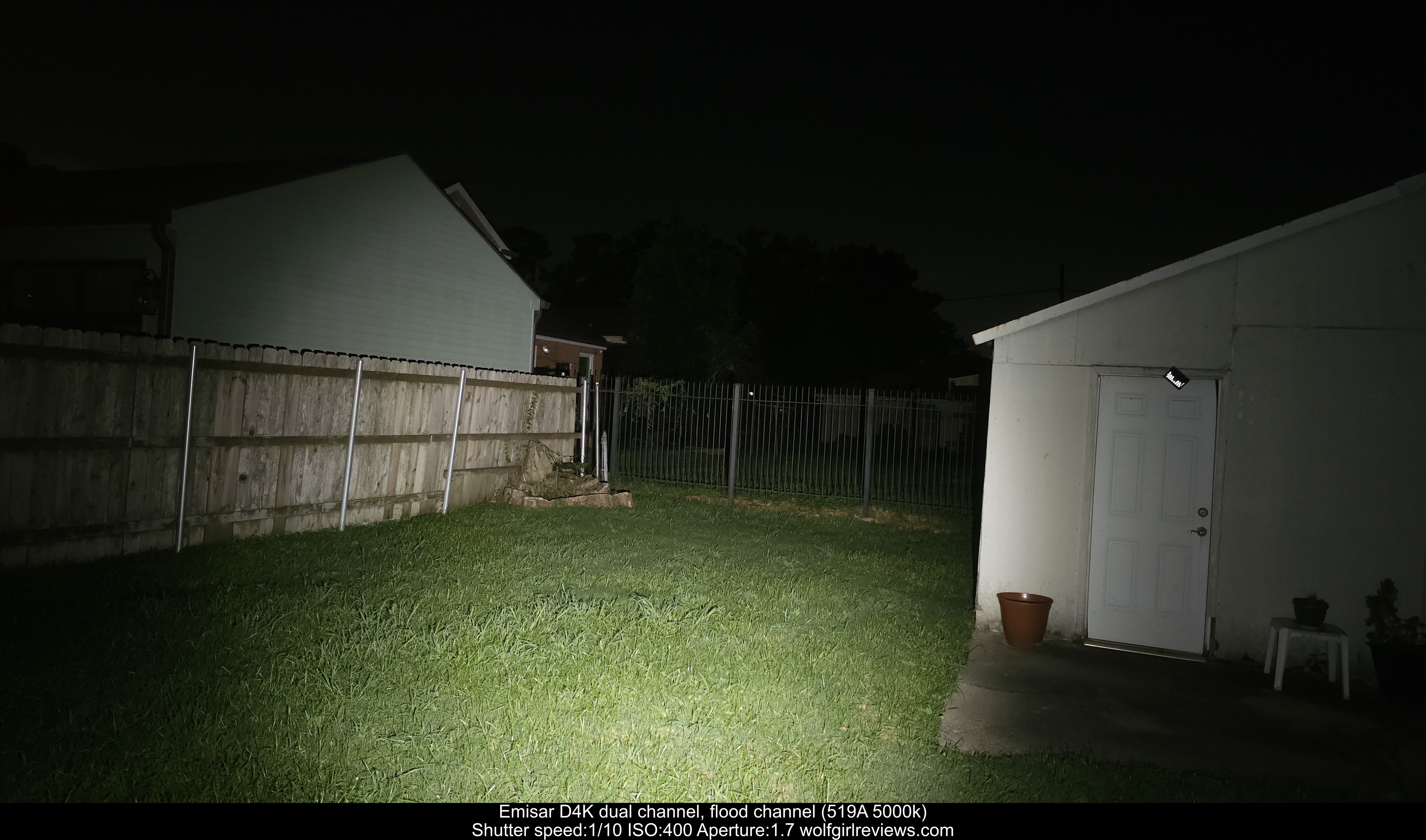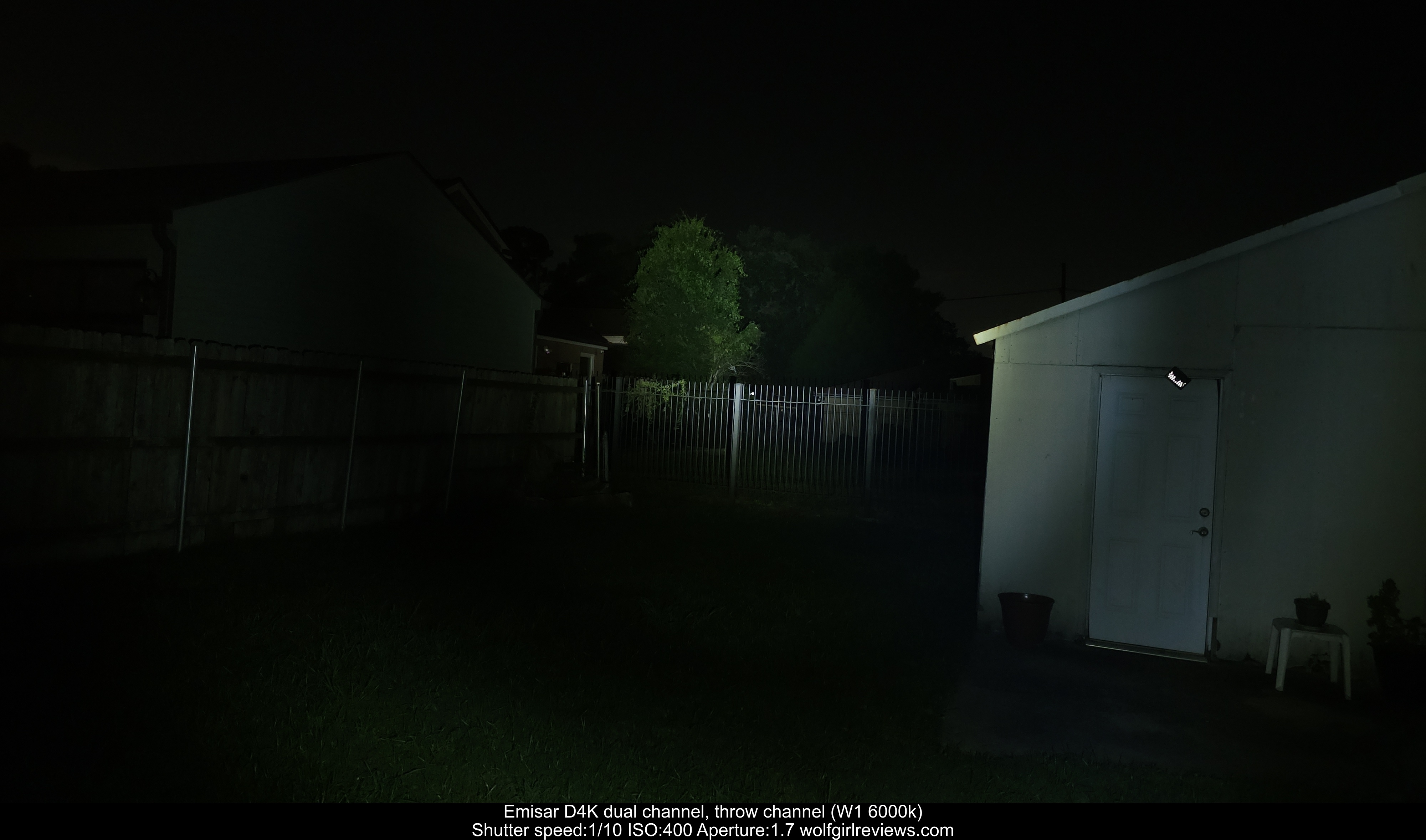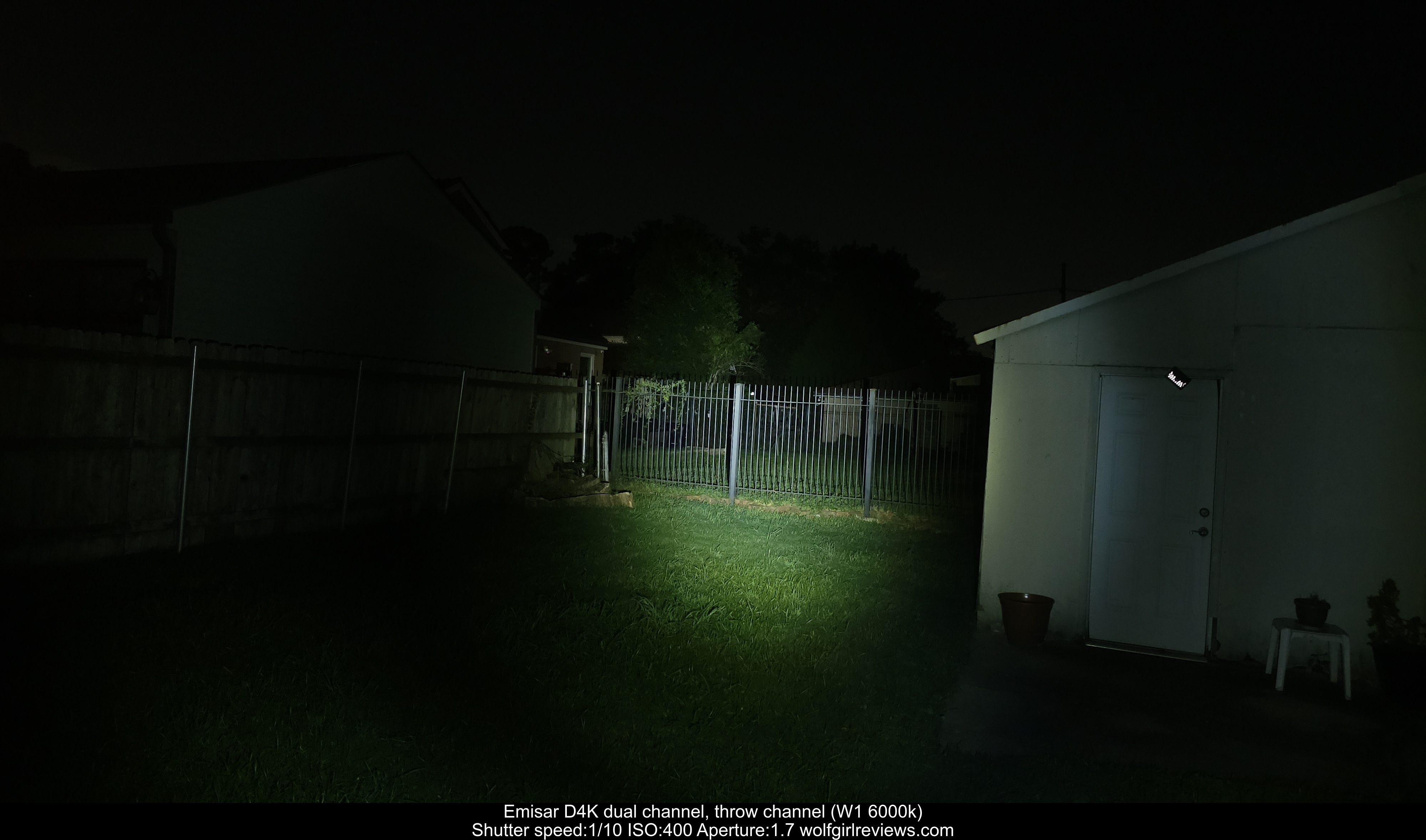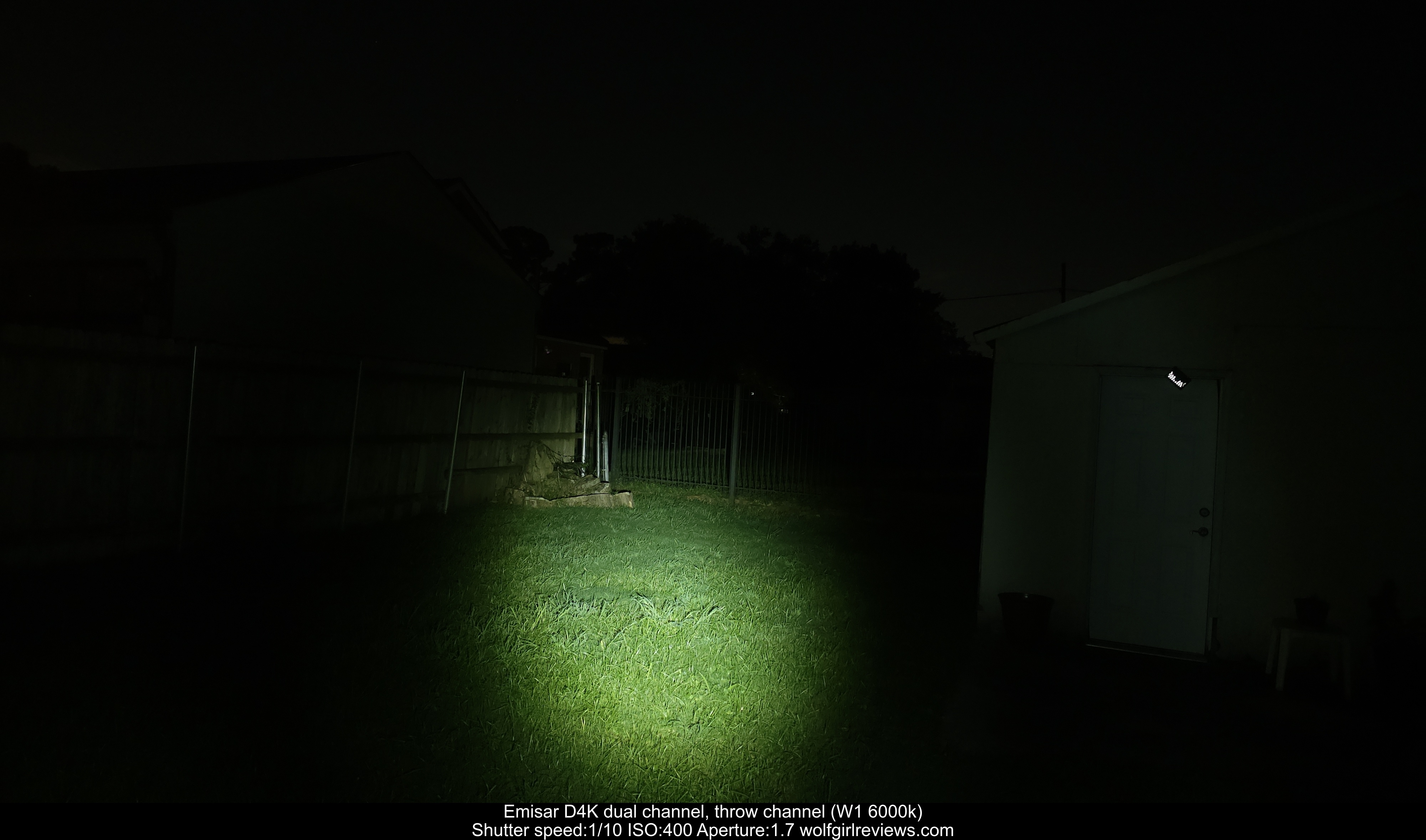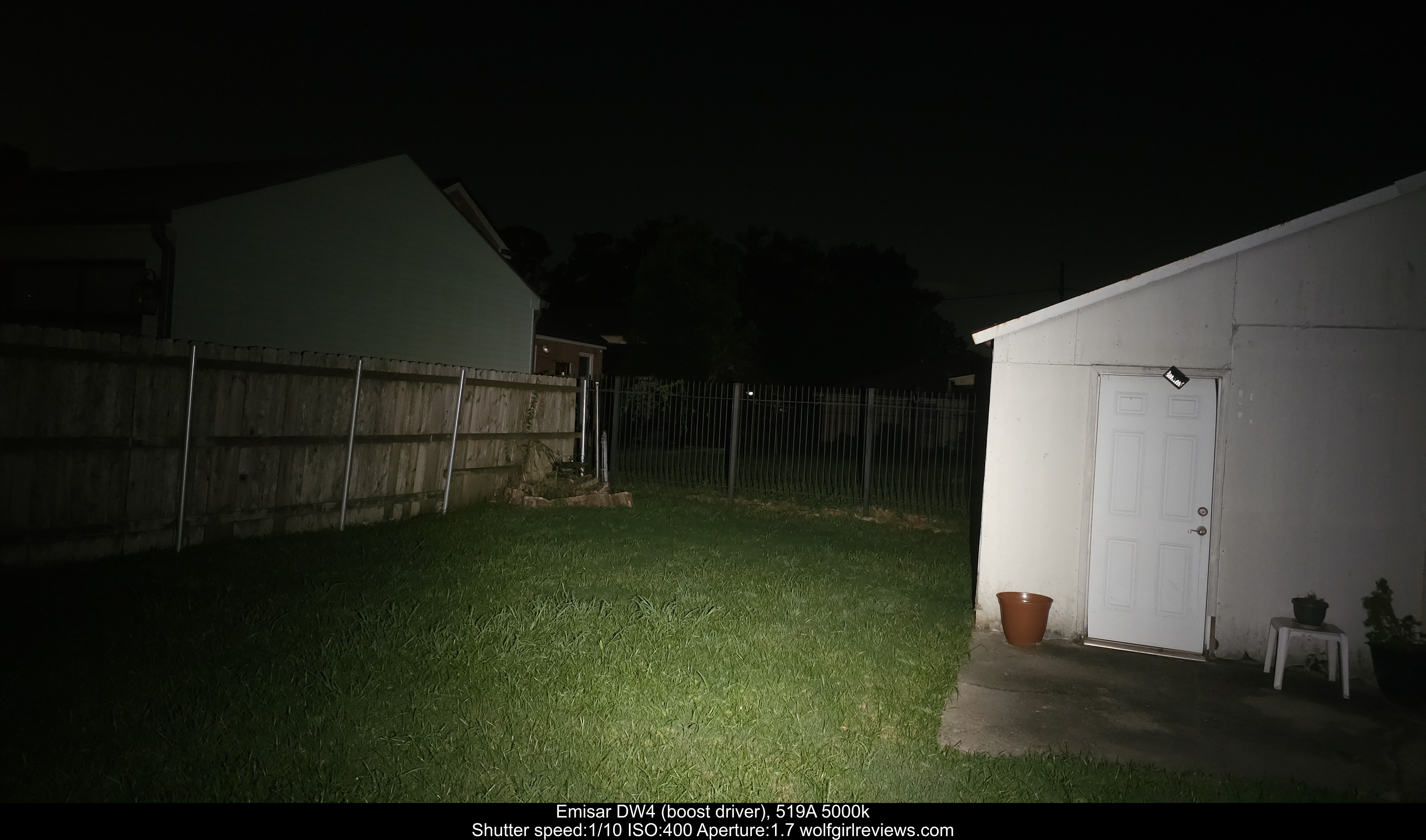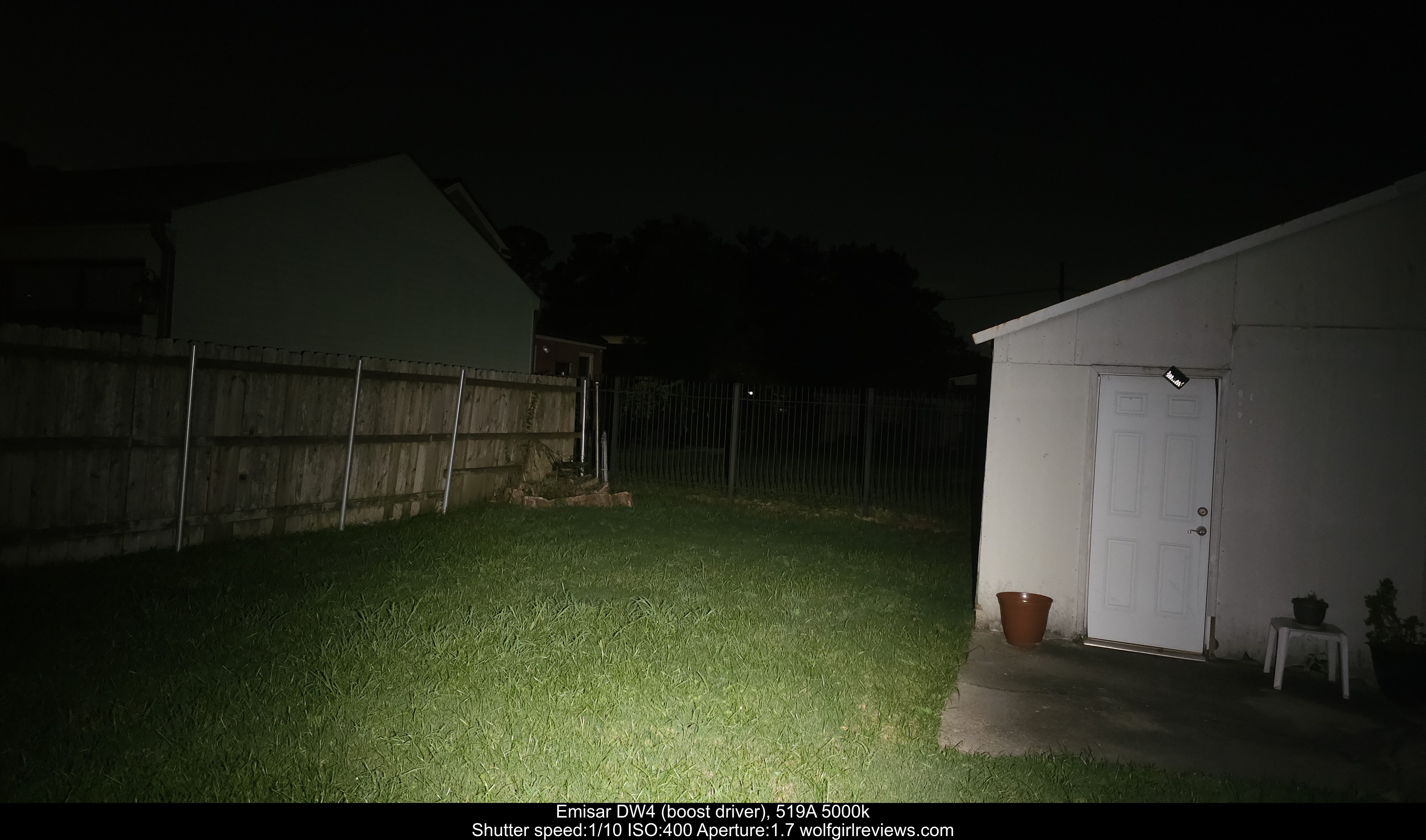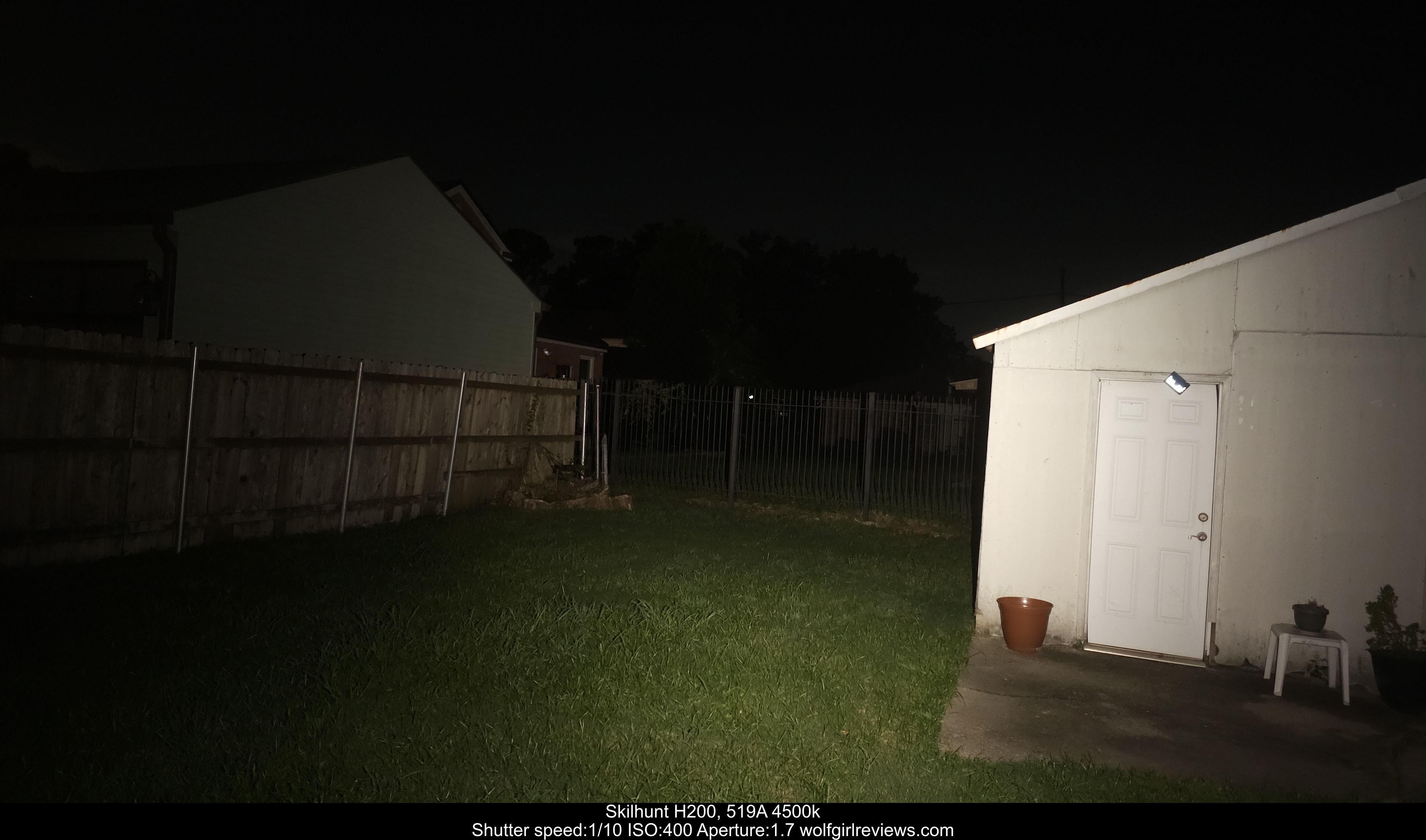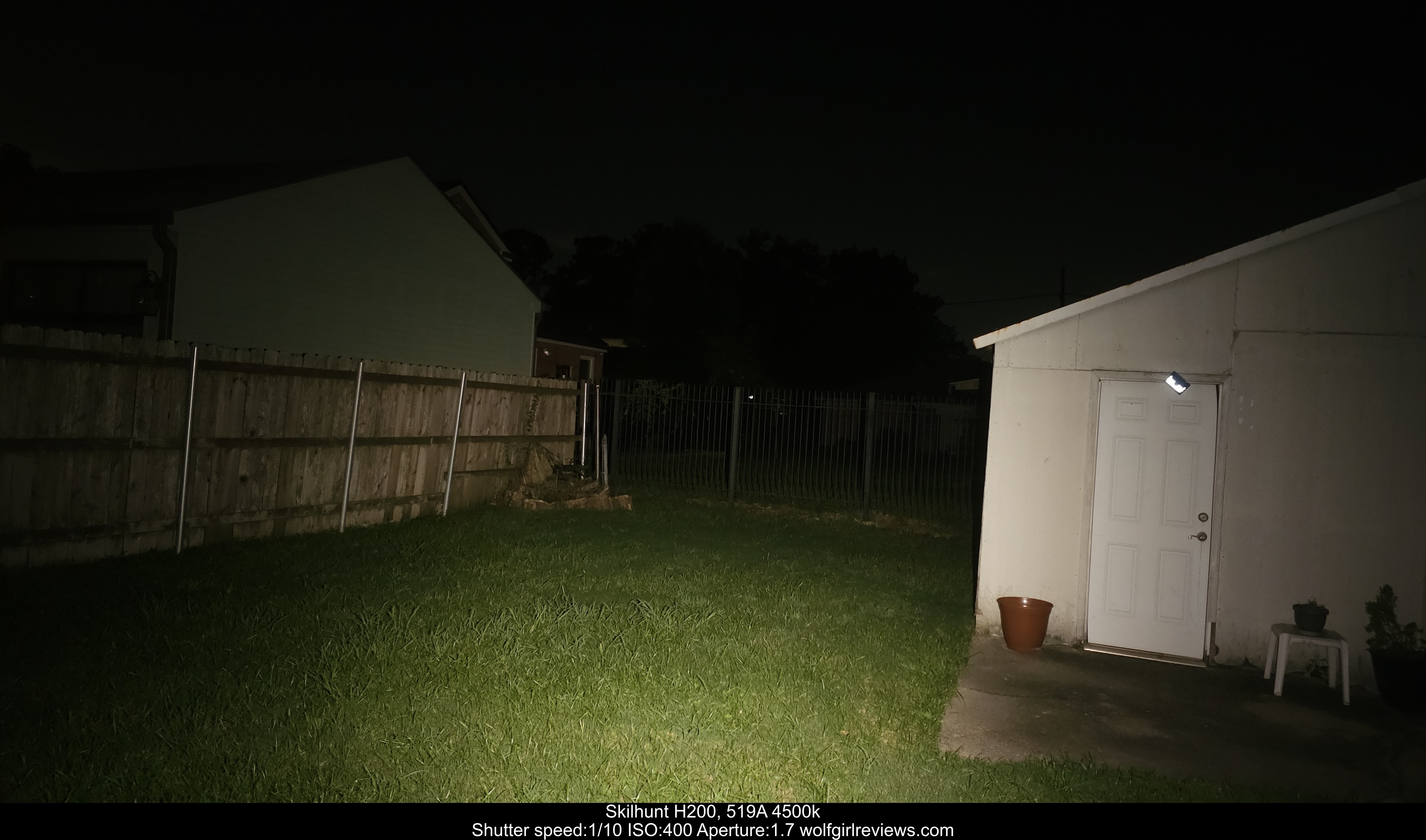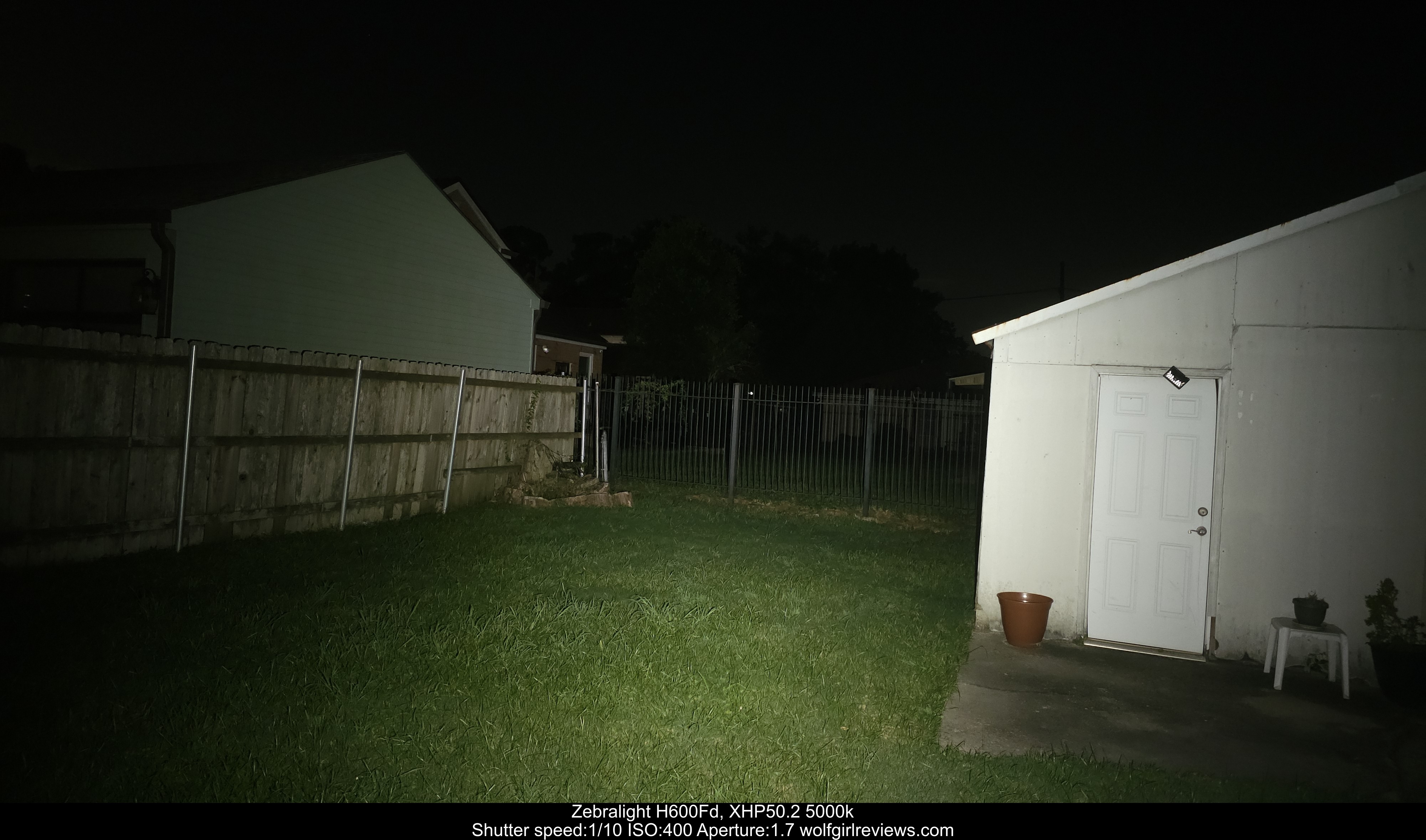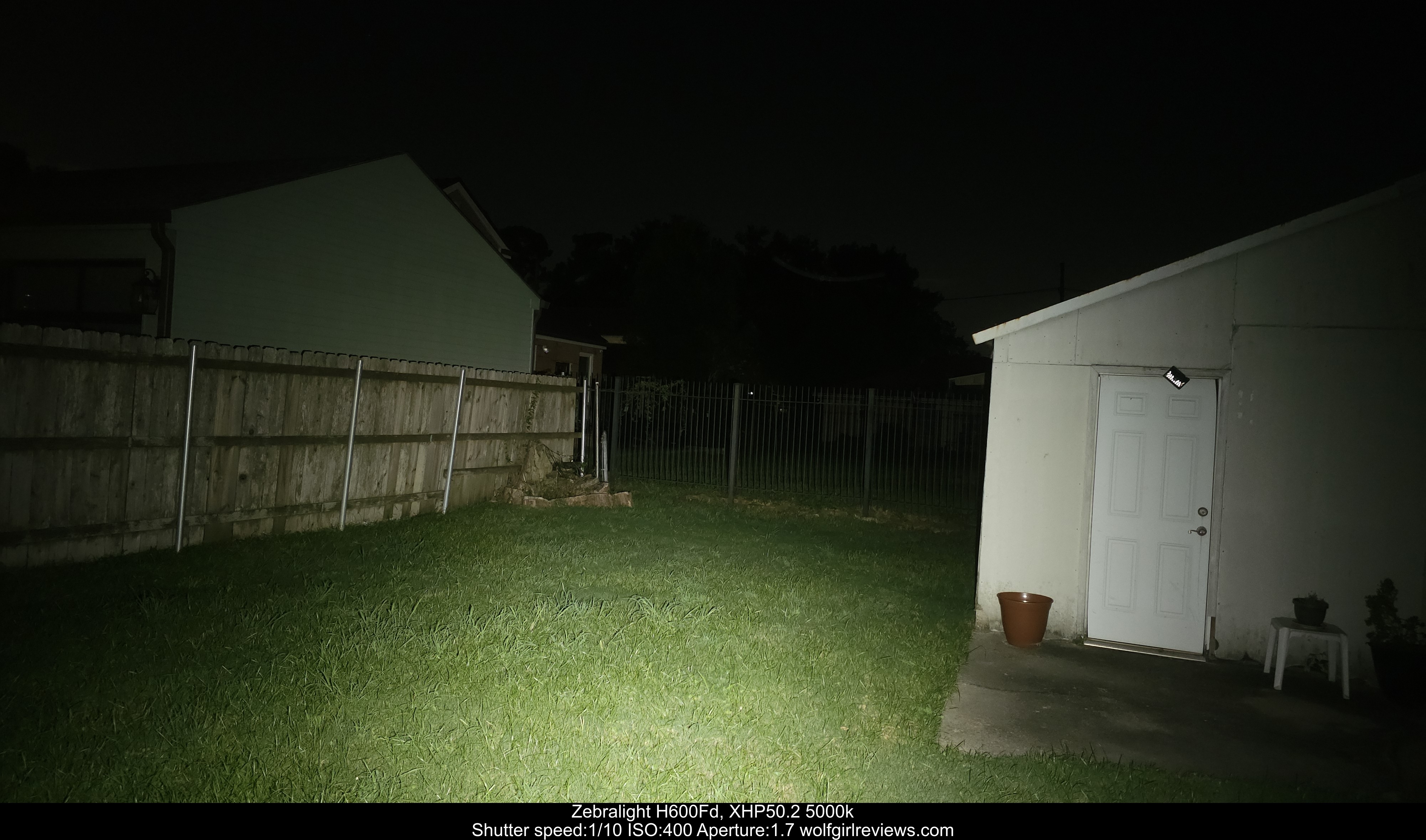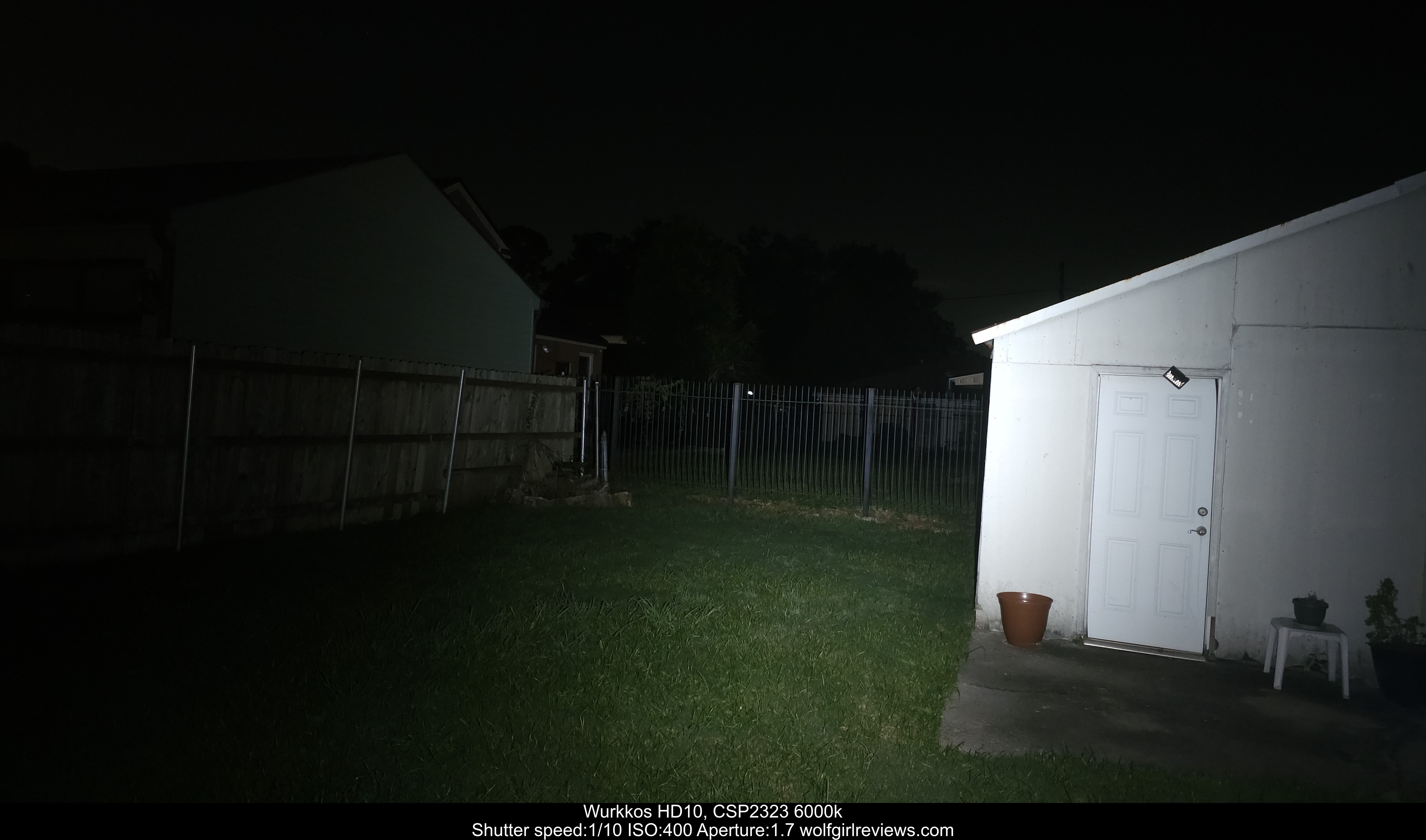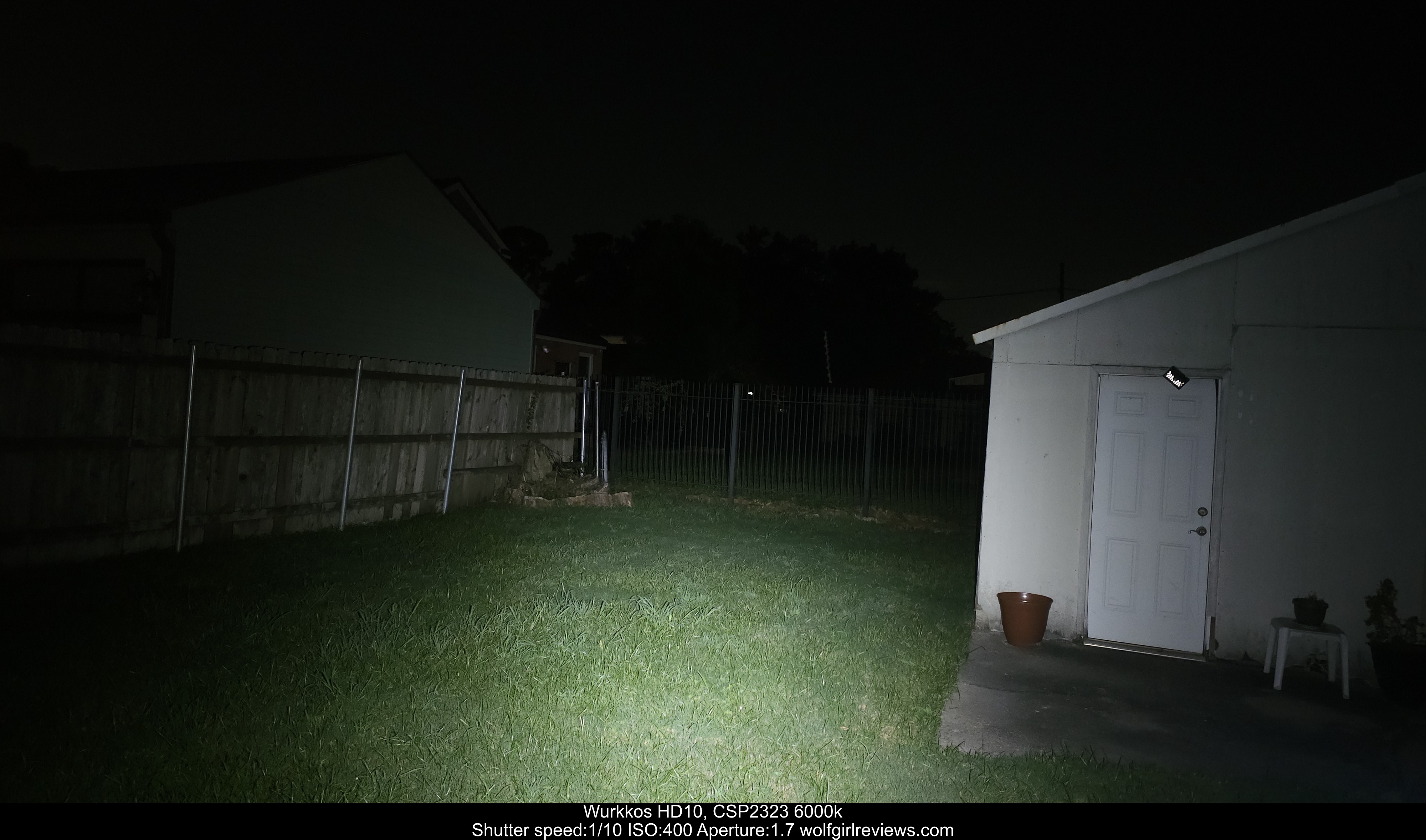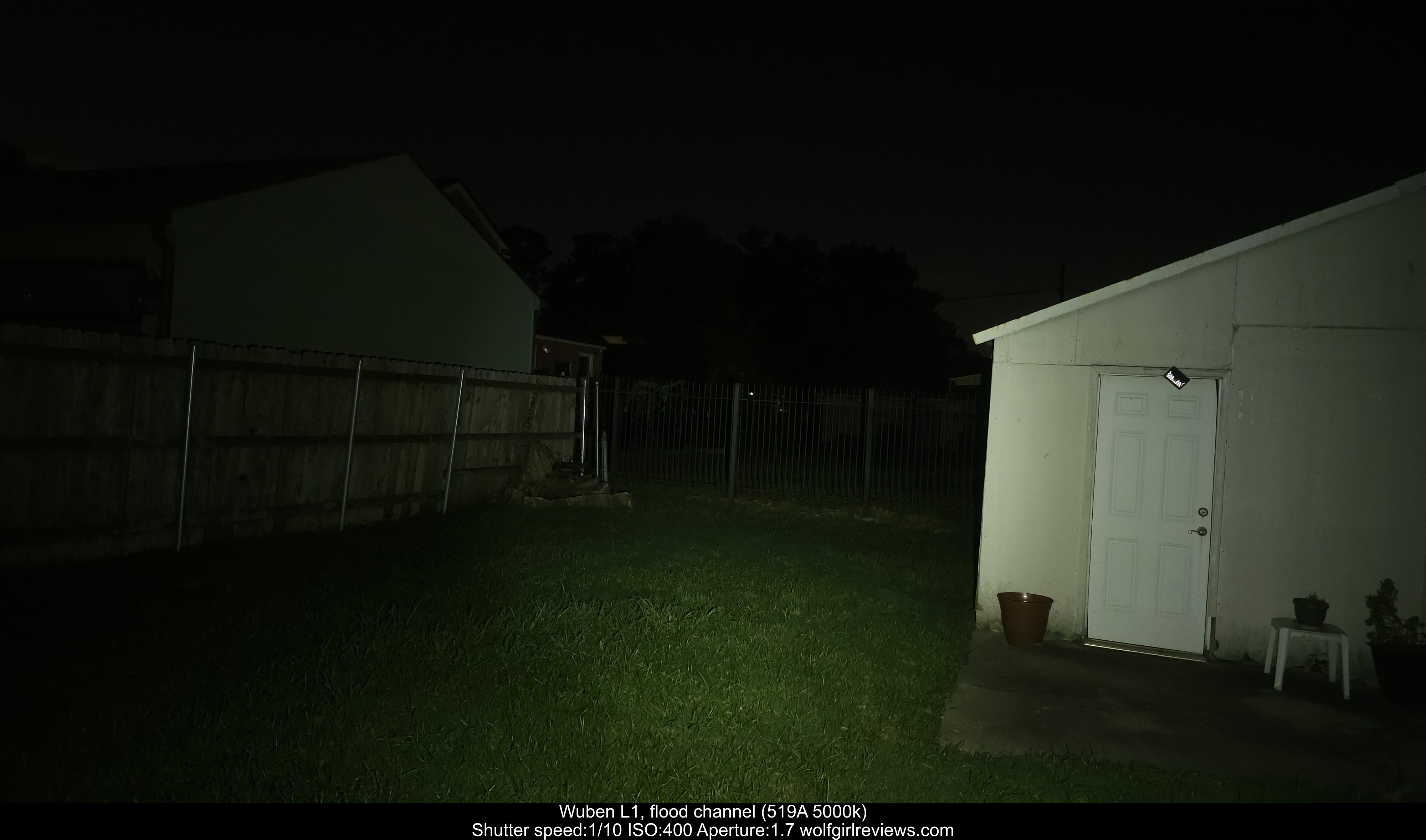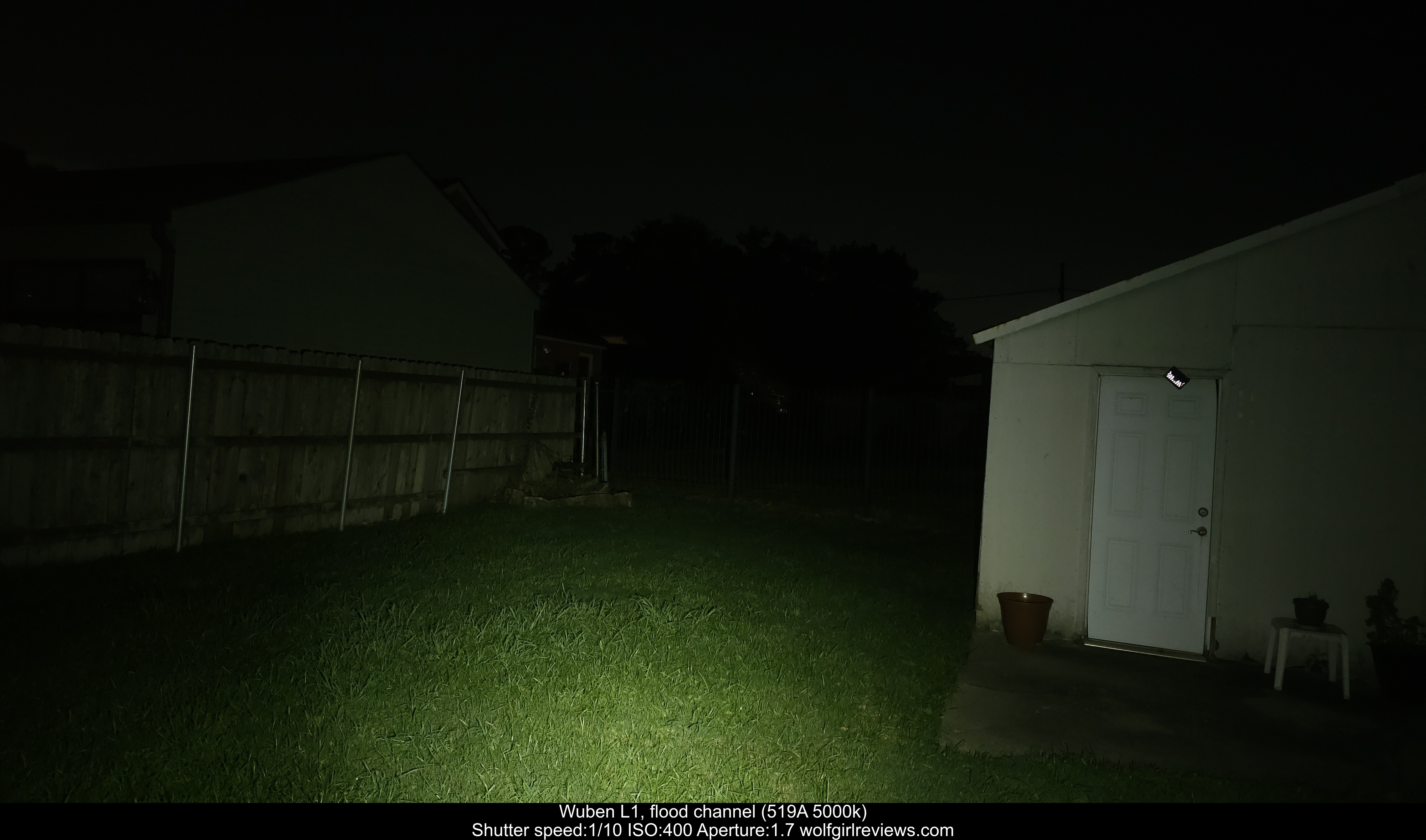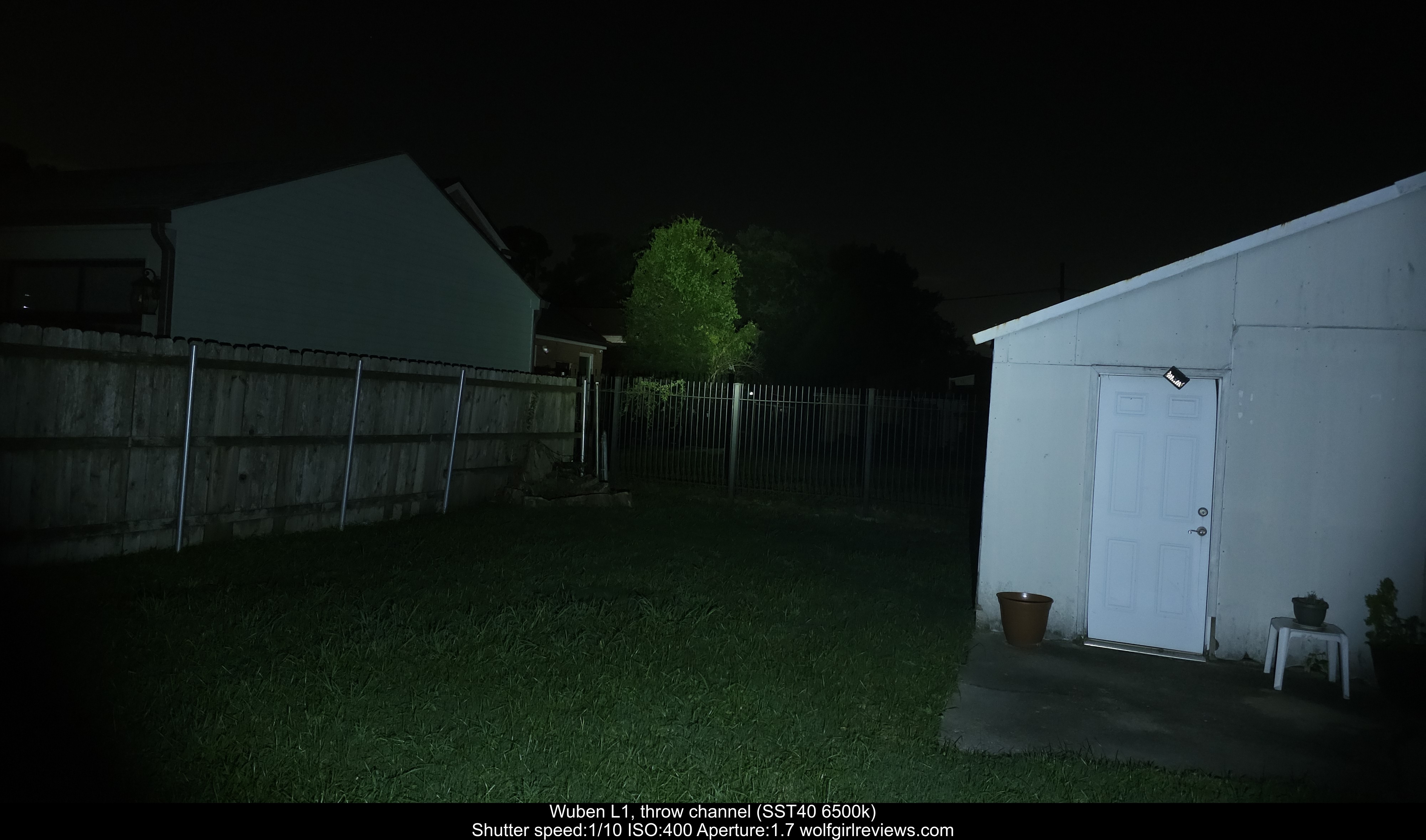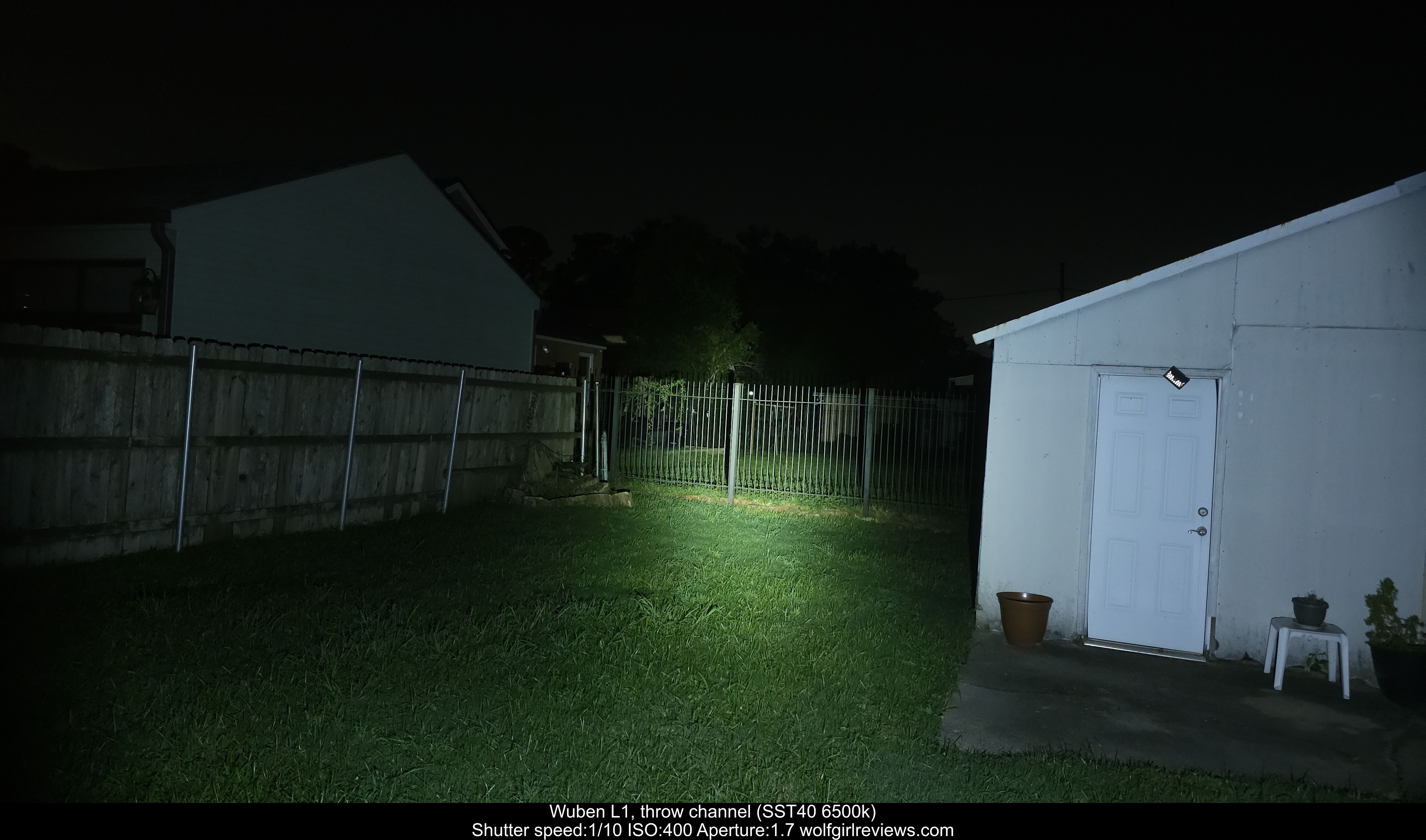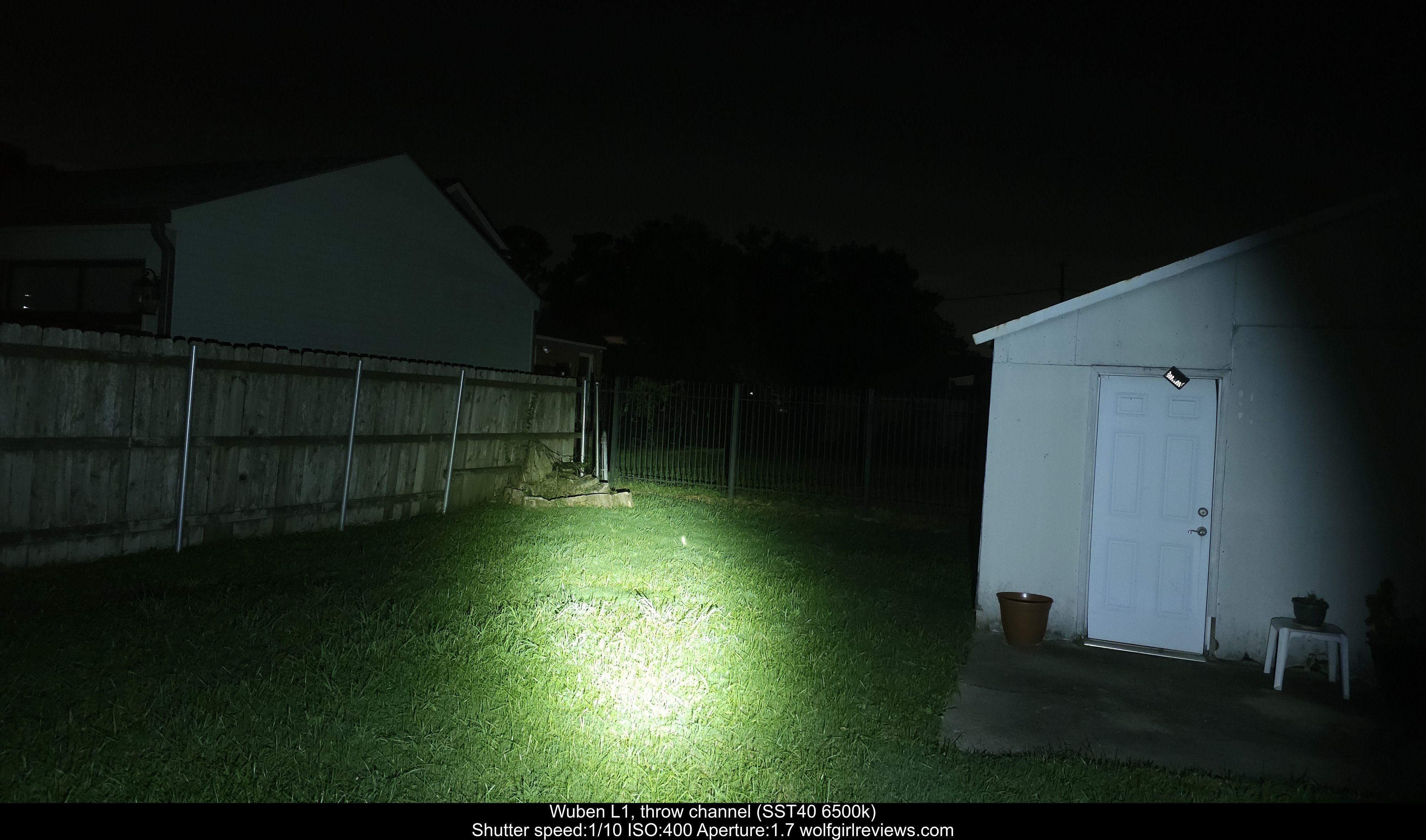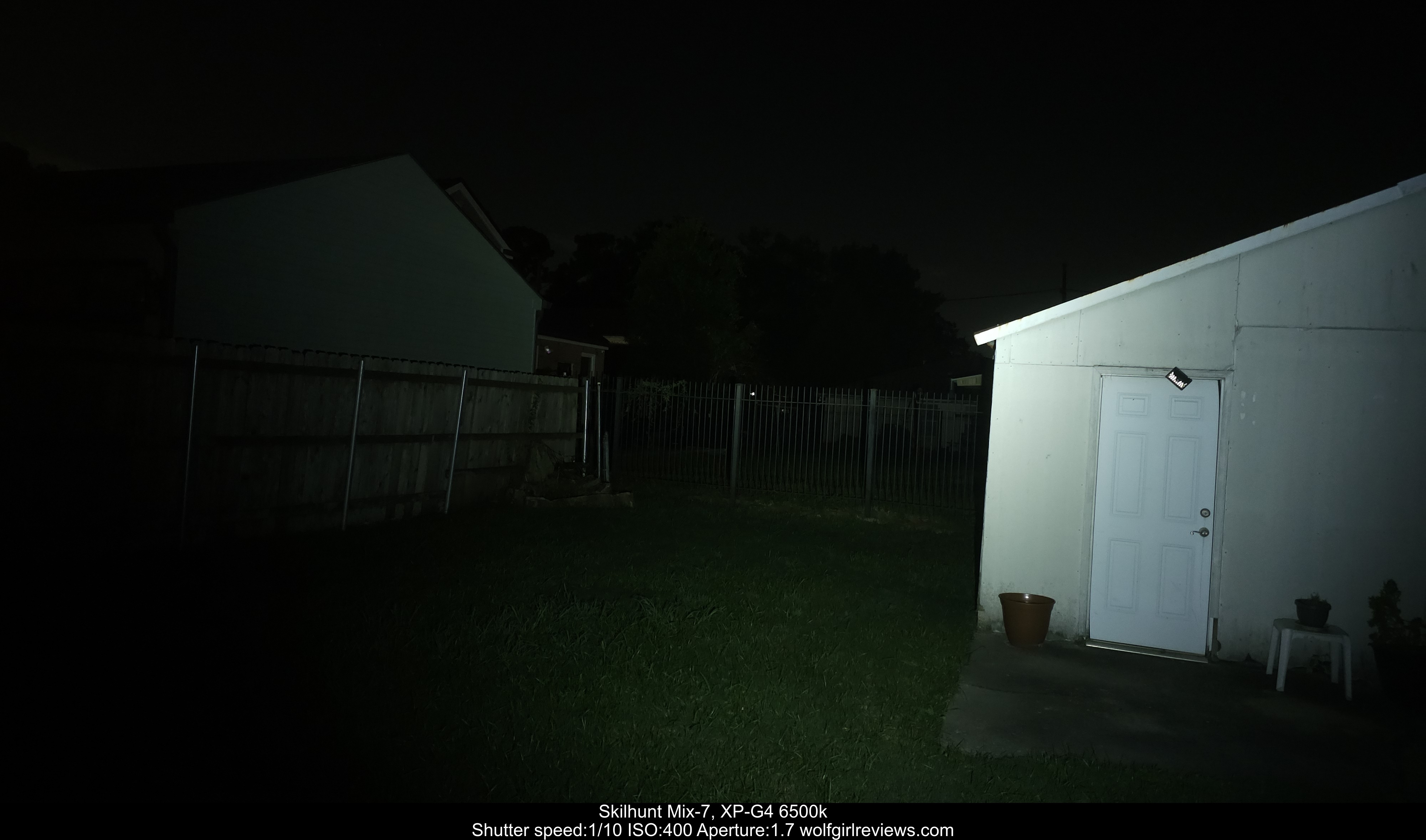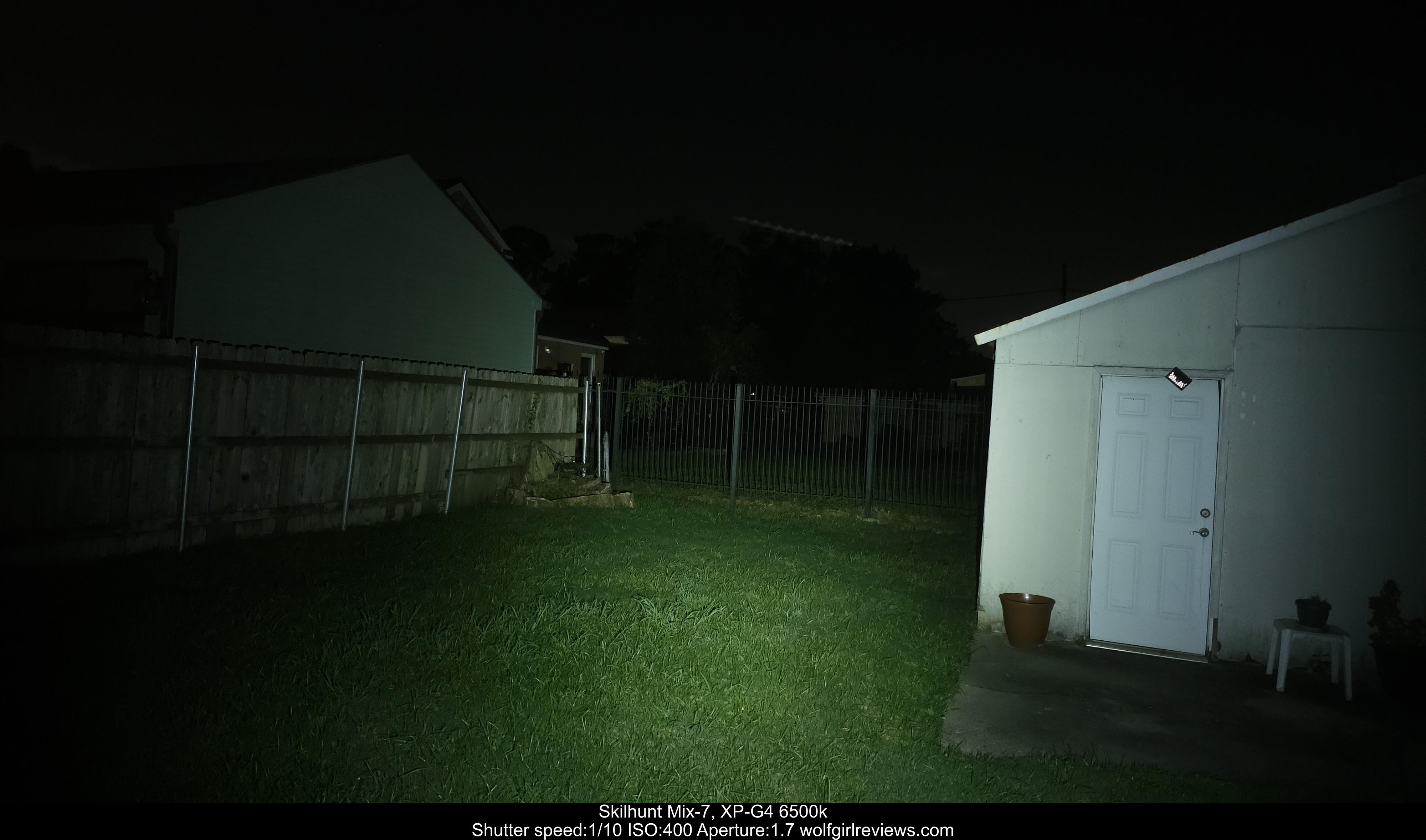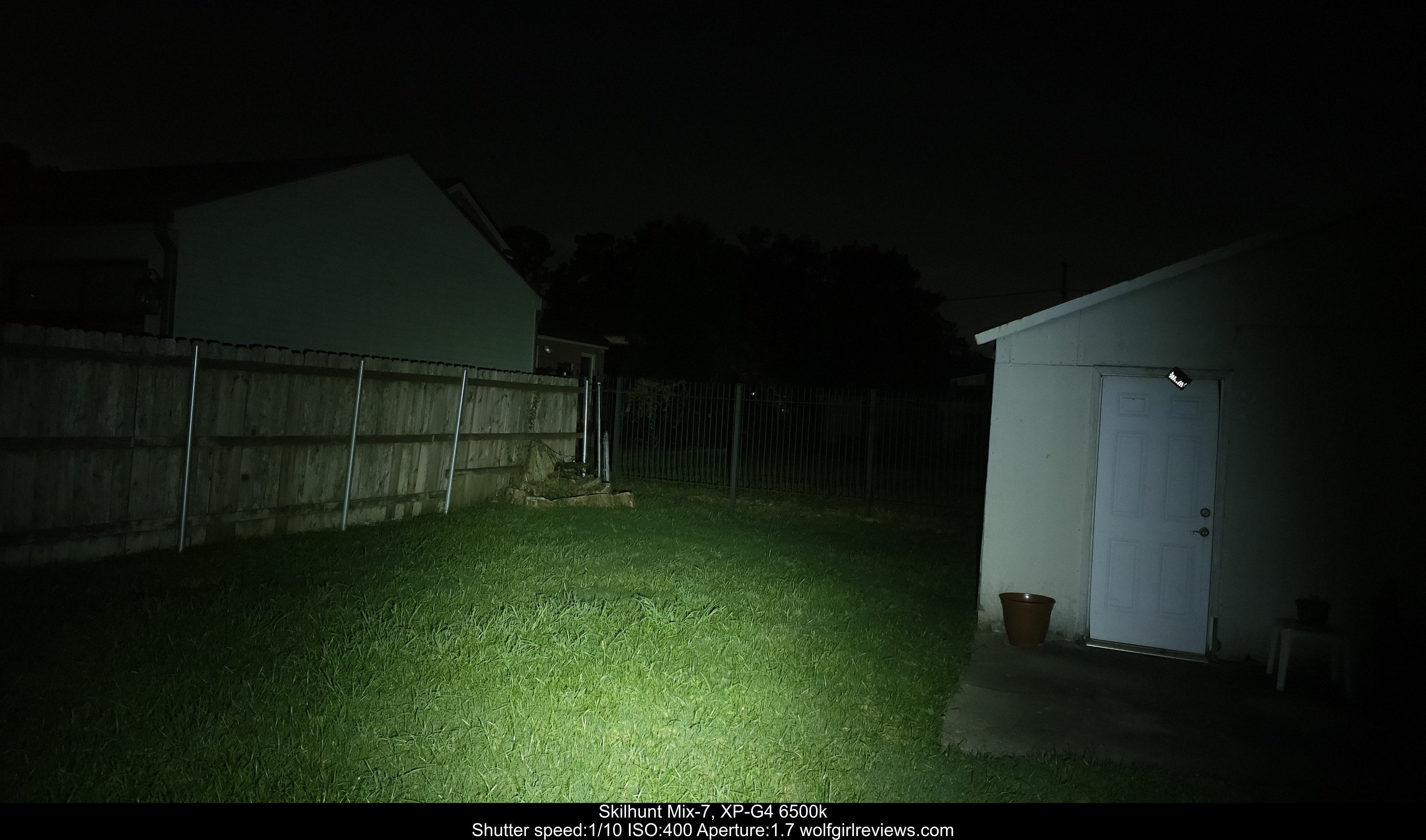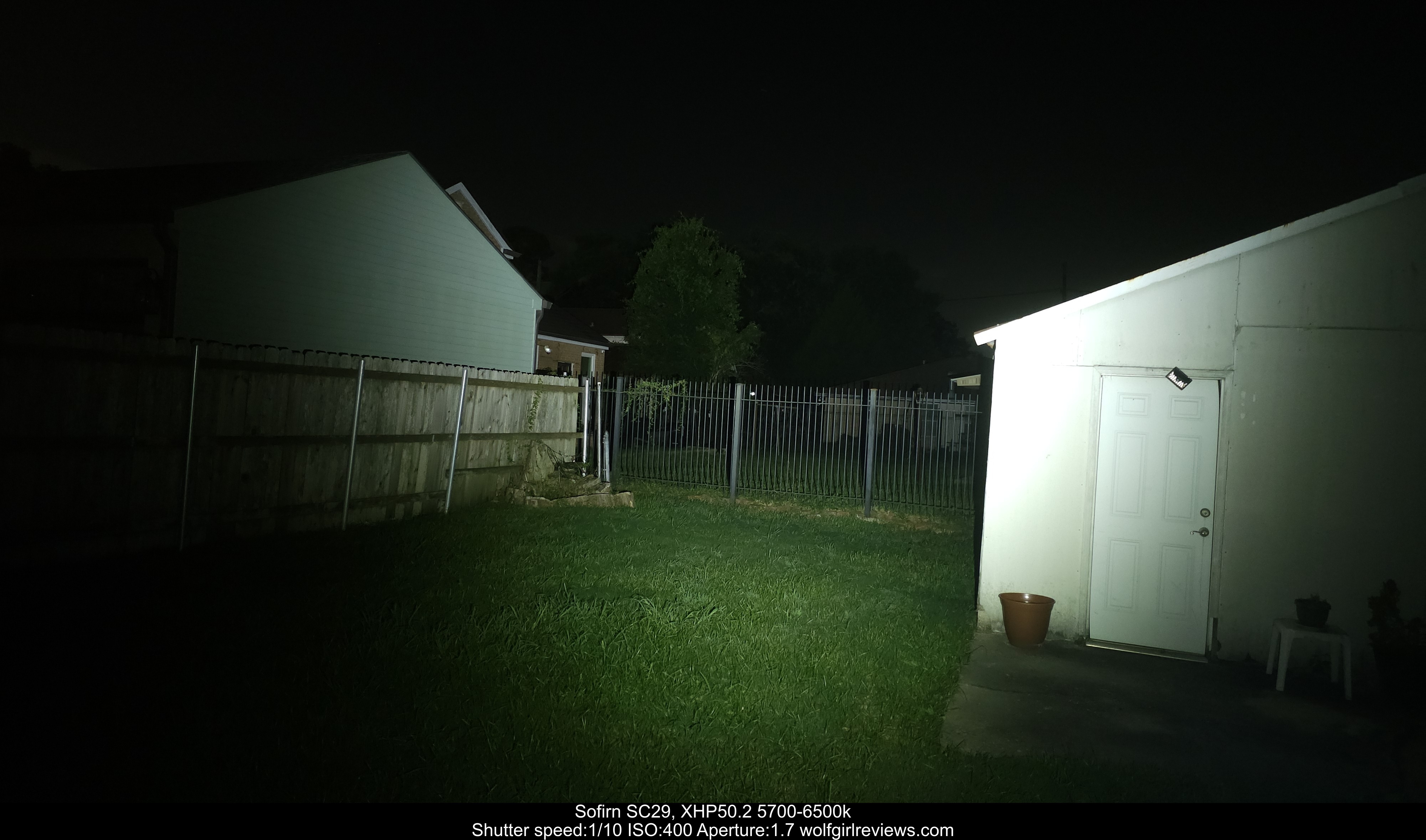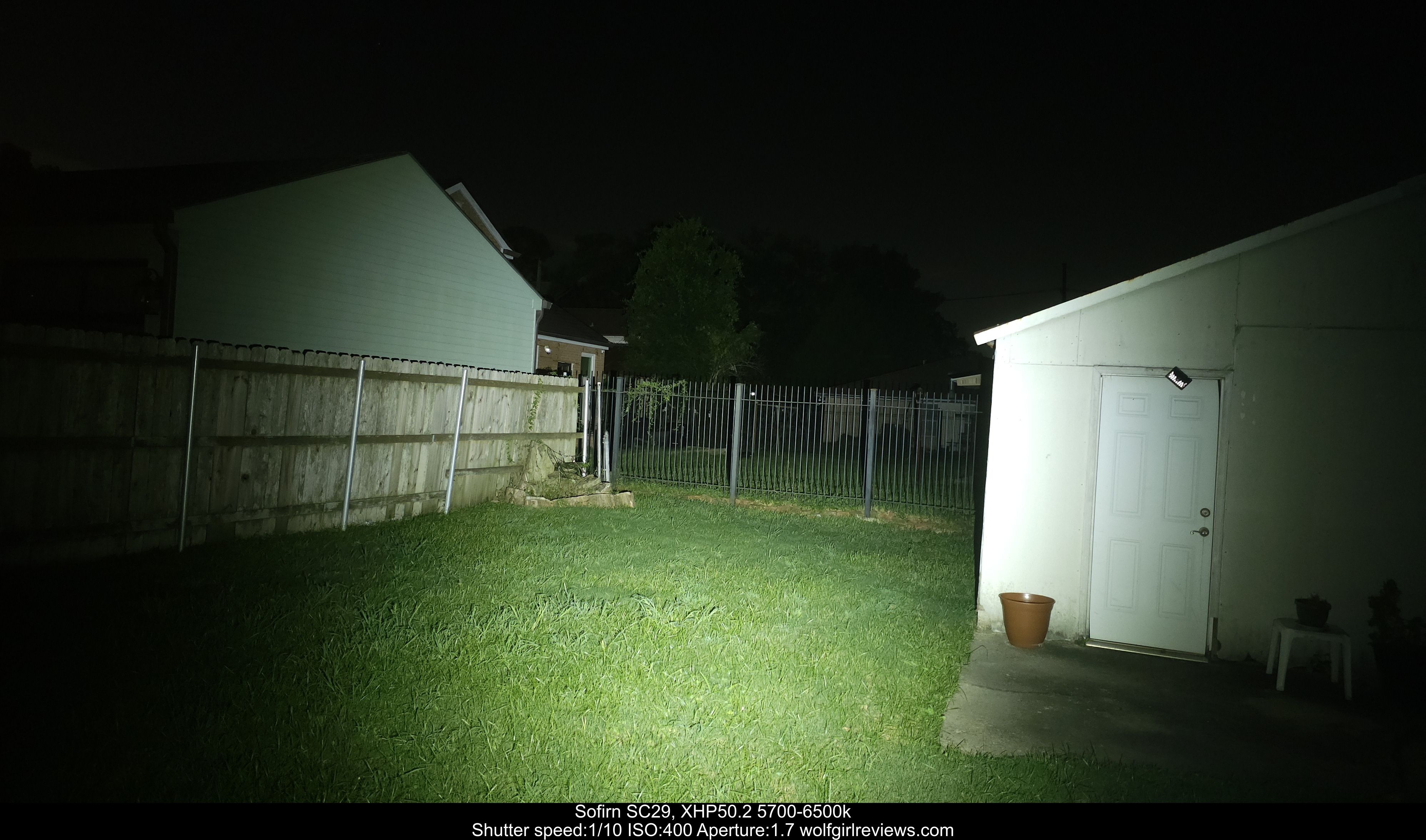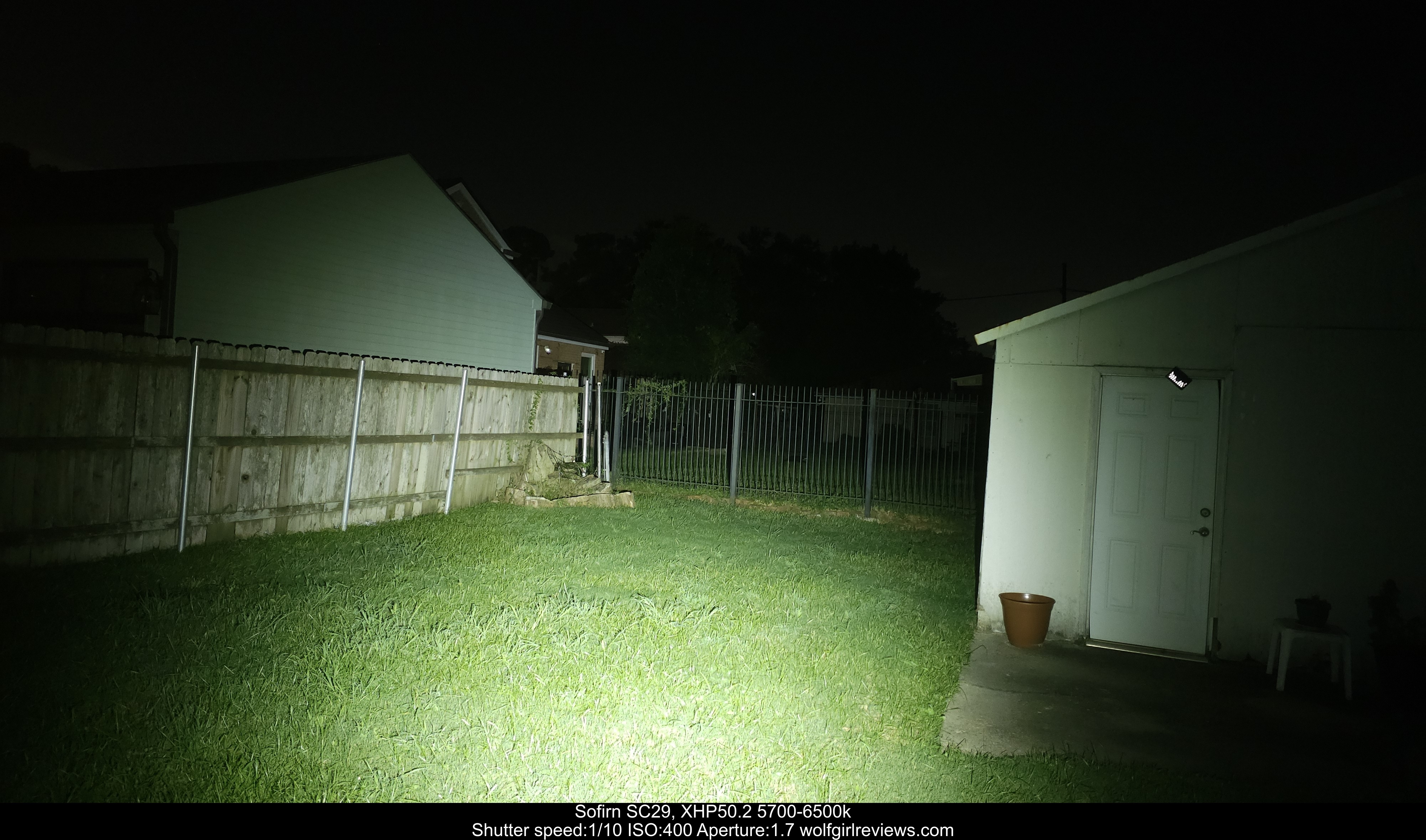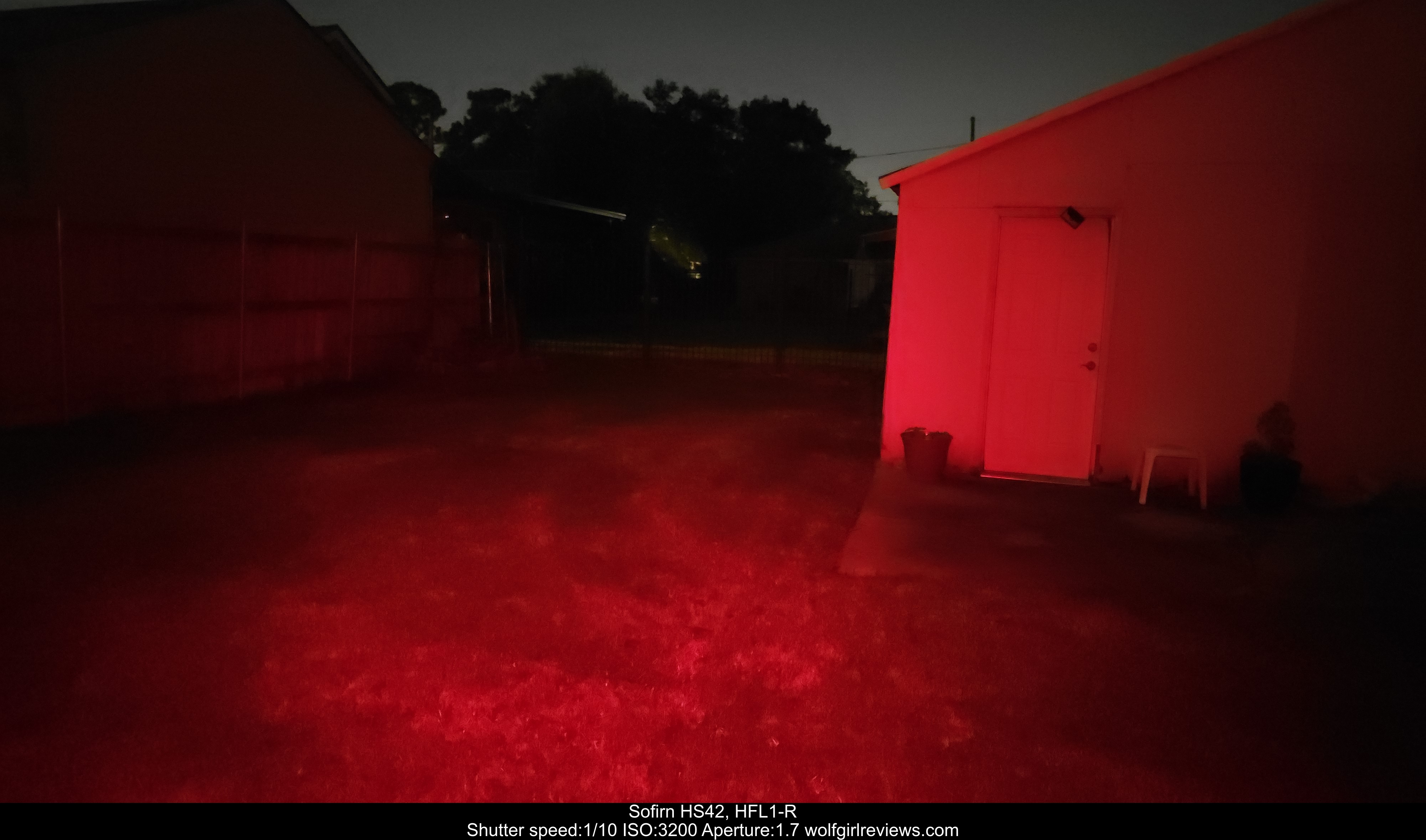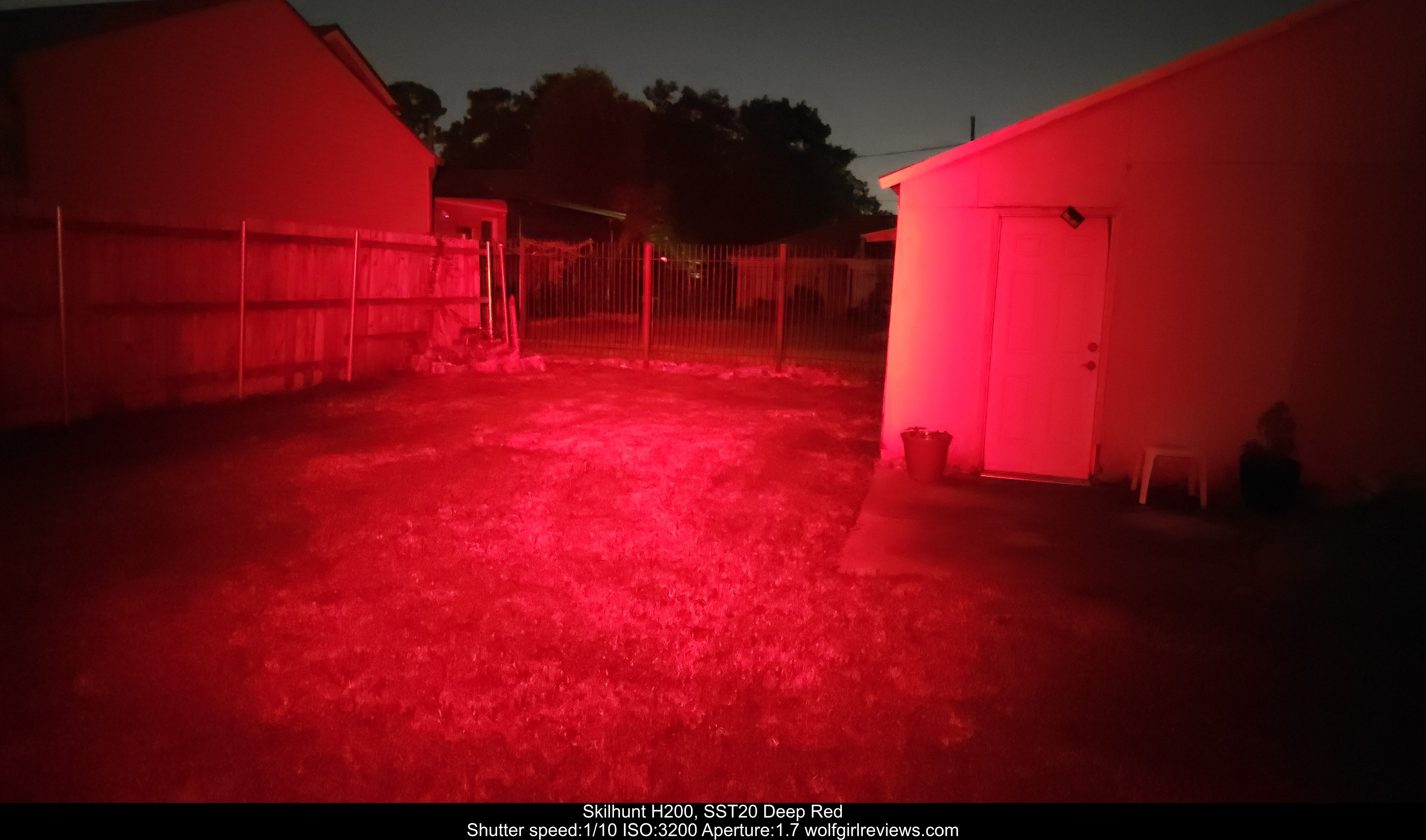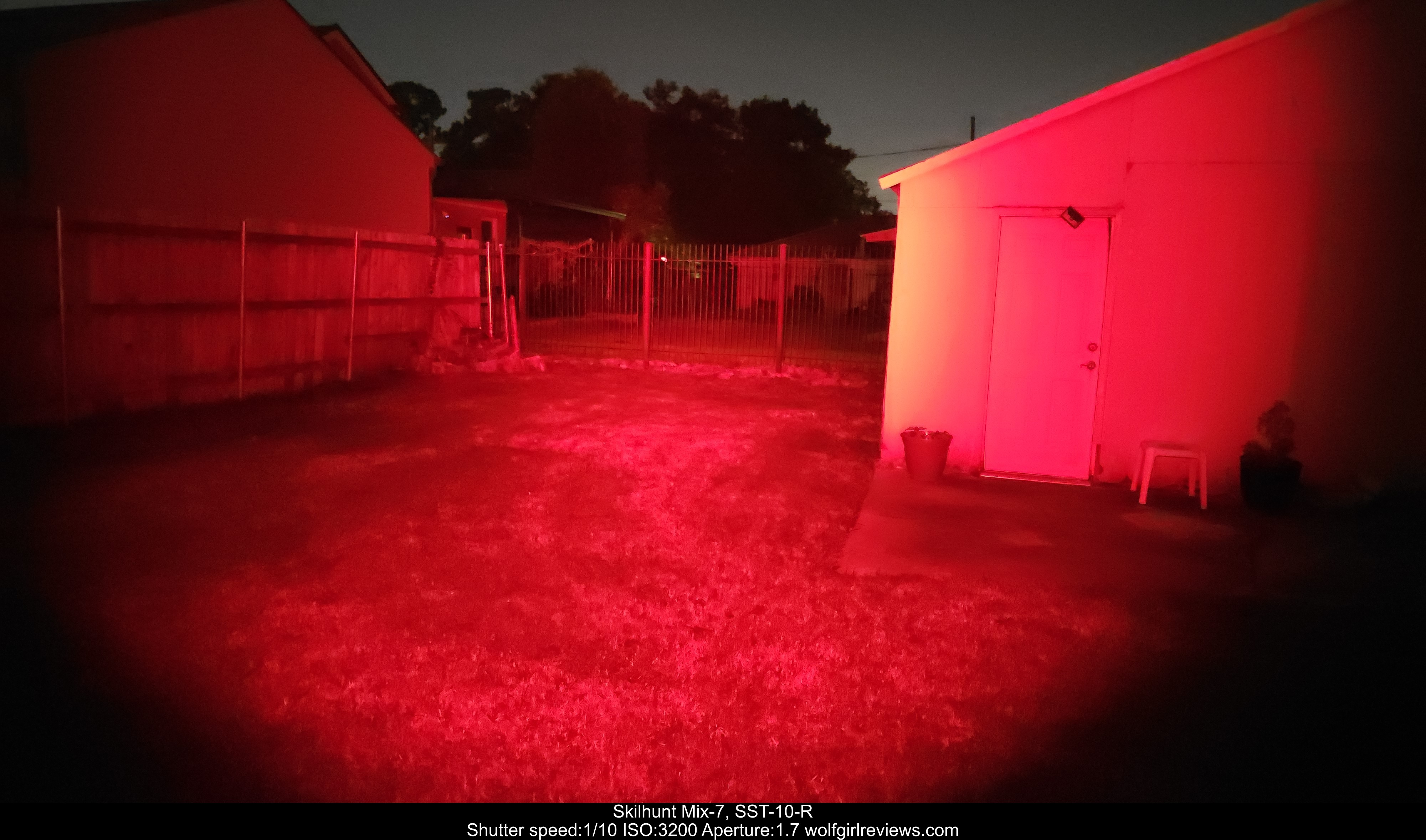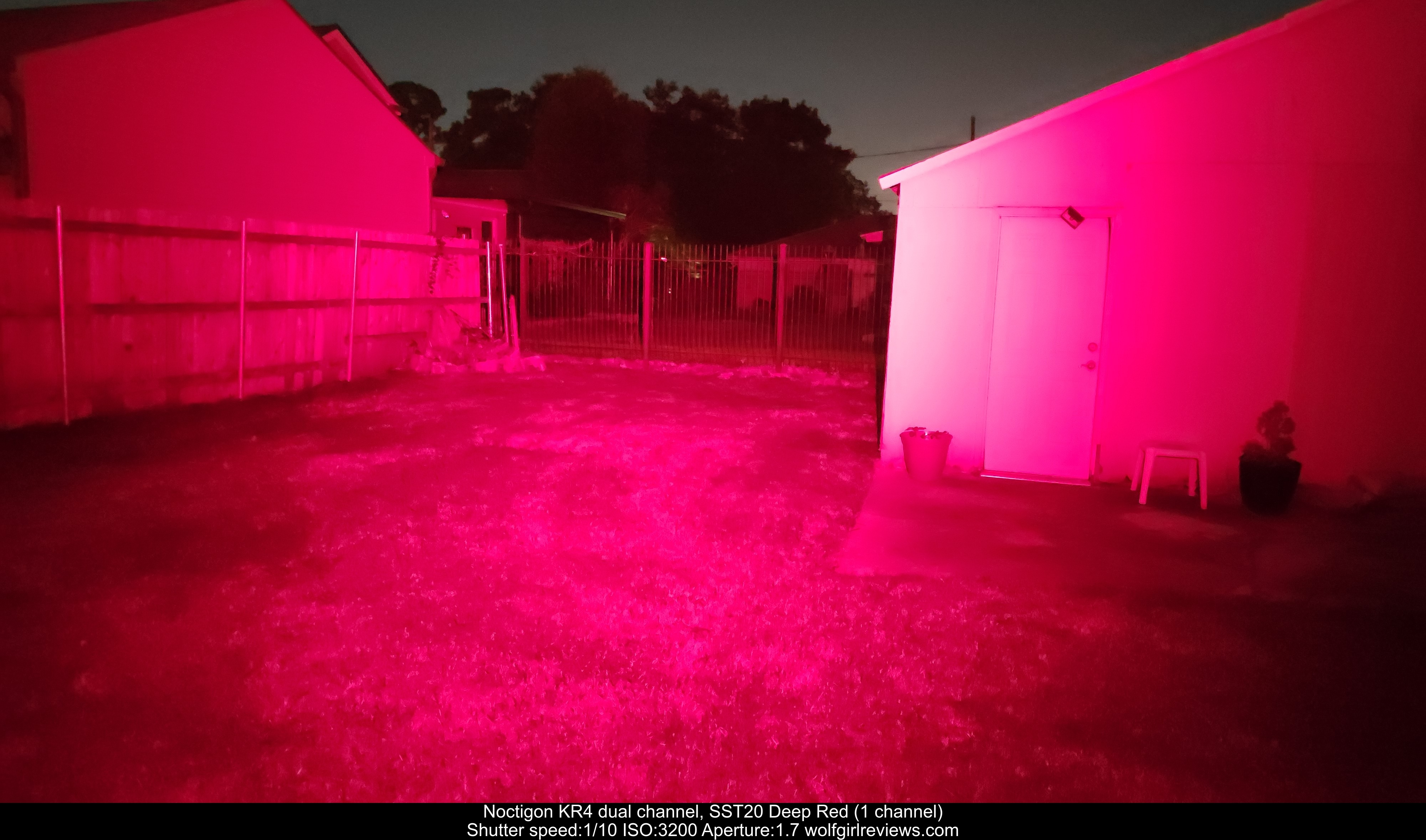"6 LEDs, 3 channels, and only one SST40? Sofirn really did well on this one."
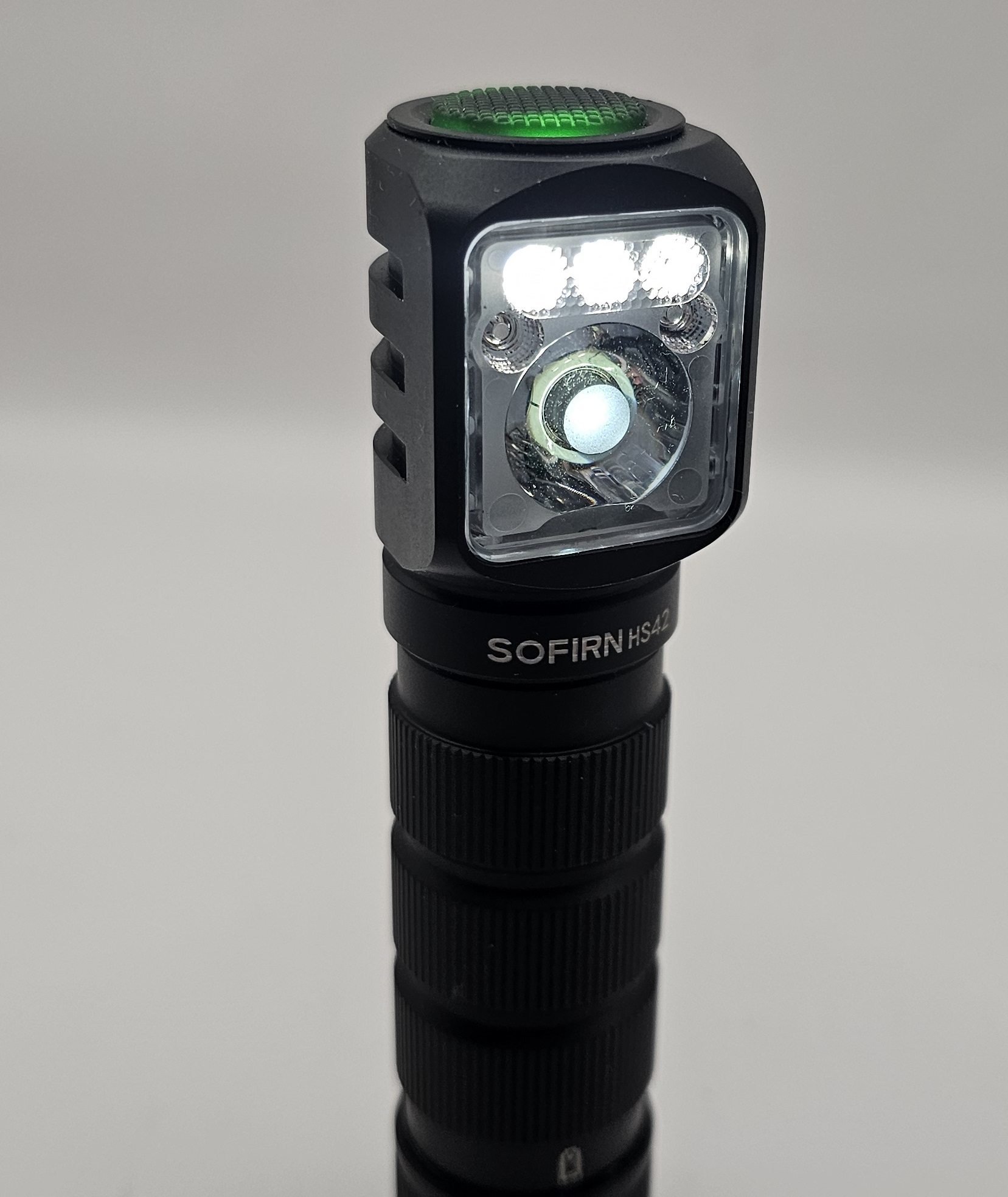 The Sofirn HS42 is a triple channel 18650 headlamp, with flood, throw, and red emitters.
The Sofirn HS42 is a triple channel 18650 headlamp, with flood, throw, and red emitters.
Introduction, Background, and Official Specs
The HS42 is the latest headlamp offering from Sofirn, with a maximum output rating of 2100 lm and a total of 6 LEDs, in three channels; a flood channel, throw channel, and red channel. There have been a few triple channel headlamps recently, and the HS42 is Sofirn's offering in this market space, aimed at a lower price point with a smaller and lighter form factor than competitors such as the Wurkkos HD50 or Acebeam H30, and priced closer to similarly sized headlamps with only two channels.
Official specs and test results:
| Parameter | Official Value | Measured |
|---|---|---|
| Output (Turbo, spot+flood) | 2100 lm | 1750 lm |
| Intensity (Turbo, spot+flood) | 7733 cd (175 m) | 6050 cd (155 m) |
| Output (High, spot+flood) | 900 lm | 764 lm |
| Intensity (High, spot+flood) | 3004 cd (109 m) | |
| Output (Medium, spot+flood) | 350 lm | 312 lm |
| Output (Low, spot+flood) | 50 lm | 56 lm |
| Output (Turbo, flood) | 2100 lm | 935 lm |
| Intensity (Turbo, flood) | 1000 cd (63 m) | 868 cd (58 m) |
| Output (High, flood) | 900 lm | 424 lm |
| Intensity (High, flood) | 426 cd (41 m) | |
| Output (Medium, flood) | 350 lm | 160 lm |
| Output (Low, flood) | 50 lm | 31 lm |
| Output (Turbo, spot) | 2100 lm | 1238 lm |
| Intensity (Turbo, spot) | 11525 cd (214 m) | 9130 cd (191 m) |
| Output (High, spot) | 900 lm | 853 lm |
| Intensity (High, spot) | 6450 cd (160 m) | |
| Output (Medium, spot) | 350 lm | 352 lm |
| Output (Low, spot) | 50 lm | 90 lm |
| Output (Turbo, red) | 65 lm | 31 lm |
| Intensity (Turbo, red) | 59 cd (15 m) | 31 cd (11 m) |
| Output (High, red) | 35 lm | 26 lm |
| Intensity (High, red) | 29 cd (10 m) | |
| Output (Medium, red) | 15 lm | 9 lm |
| Output (Low, red) | 2 lm | 1 lm |
| Output (Moon, red) | 1 lm | <1 lm |
| IP rating | IP66, "not for diving" | |
| Impact resistance | 1 m | |
| Weight (without battery) | 71 g | 76.2 g |
| Weight (with battery) | 122.7 g |
* Some performance figures seem notably off from spec, but see my remarks in Performance for some detail.
Calculated throw distances are using the ANSI FL1 standard and represent the distance at which 0.25 lux illumination is achieved, or the approximate level of light from a full moon - for a real world approximation of usable throw, divide this number by two.
General information:
| Parameter | Value |
|---|---|
| Battery size | 18650 |
| Battery type | Button top unprotected |
| Battery check mode | No |
| Charging | Yes, USB-C in body with rubber flap |
| Emitters | SST40 6000k (spot), CSP2323 5000k 90 CRI* (flood), HFL1-R (red) |
| LVP | Yes |
| MSRP | $56 with battery; $52 without battery |
| Price (at time of publication) | $36 with battery; $34 without battery |
* Emitters were given as 90 CRI in the spec, but I found the CRI to be 95 in my measurements.
For runtime testing, I give two figures when possible. The ANSI FL1 runtime is calculated by when the light drops below 10% of initial output. I also attempt to run the light past this to find the point where it switches off automatically if possible. Many lights will run at 1 lumen of less for an extended time before powering off, and with these lights I note my observations on when the runtime test was terminated, and may terminate tests at this point as my current measuring setup has a minimum of 1 lumen. For testing of output, my acceptable margin of error is between 5% and 10%, with margin increasing with output.
I received this light for free from Sofirn in exchange for a review, and may receive a commission if the discount code featured in this review is used. I am not otherwise compensated for this review, and am giving my honest opinion without holding back on any negative experiences or overstating any positive. I may use affiliate links to Amazon or similar sites for things such as measuring equipment I use, but do not otherwise have any related interest in anything I mention.
First Impressions, Physical Design, and Build Quality
The HS42 is in Sofirn's familiar packaging, with a printed sleeve over a cardboard box. In my opinion, this packaging strikes a good balance between budget-consciousness and unboxing experience, and would look at home in a retail situation. Inside, the HS42 comes with a USB A-C cable, headband, instruction manual, and two spare o-rings.
The HS42's body tube has three raised sections, with medium-depth vertical lines cut into each one, and a small recessed groove between them. Towards the head and tailcap is a larger recess on each end, where the headband's clips attach to the body. The tailcap has matching knurling, with a lanyard hole passing through the base of the tailcap, although a lanyard was not included with the light. This lanyard hole is the same as seen on the SC29 and SC13, and in my opinion a relatively poor design choice as it prevents the light from tailstanding flat with a lanyard attached, although given the nature of a headlamp most people are unlikely to want to use a lanyard with one. The tailcap contains a medium-strength magnet, with a magnet symbol printed on the flat rear surface. This magnet is able to hold the HS42 reasonably well to thick metal surfaces, but does struggle with thinner ones. The tailspring is a circular type that snaps into a groove, so could in theory be removable, but this is likely more difficult than the similar tailspring seen in lights such as the E75.
The head is relatively tall, with "SOFIRN HS42" printed on the base where it meets the body tube, and the various regulatory markings on the back, and a serial number and "HOT" symbol on the side of the head. The front of the head is flat, with a custom multi-emitter TIR optic. At the bottom is the spot LED, which is an SST40 in a large TIR optic. Above this and to each side of the SST40 are the two red LEDs, then the three flood LEDs are in a horizontal line across the top. The flood optic has a frosted texture, while the spot and red parts of the optic are clear. This optic is exposed in the front of the head, with no glass to protect it, so will pick up scratched with use, although even the spot LED overall has a relatively floody beam profile, so this is at least bad than if the LED and optic were throwier. The switch is located on the top of the head with a dark coloured rubber boot with some light grid-pattern texture. Click action is solid-feeling and consistent, with a medium amount of travel, and the switch overall is large, making it easy to operate with gloves on. The switch has two red/green LEDs that shine through the boot, and is unlit when the light is off, and lights up in green or red when the light is on or charging to show battery/charge status. The user manual indicates that the button LED will light up green when first switched on if the battery is over 70%, red if at 30-70%, and flashing red for <30%, as well as flashing red while the light is on for 5 seconds when below 3.15V, and constantly when below 3.0V.
On the back of the head, a rubber flap covers a relatively deep recess for the USB-C port for the built-in charging. This flap has a reasonably tight fit, although does take a bit of effort to get pressed all the way into the recess. When the flap is pressed all the way in, I would trust it for heavy rain or brief dips into shallow water, but not for any significant immersion, so Sofirn's specification of an IP66 rating seems appropriate.
Sofirn's warranty is described on their website, and covers repair or replacement within 1 year of purchase, and 6 months for batteries.
Size Comparison
I took comparison photos of the HS42 with a range of headlamps and other medium lights for points of comparison.
- Emisar DW4
- Wurkkos HD10
- Fireflylite PL47g2
- Zebralight H600Fd
- Skilhunt H200
- Wuben L1
- Sofirn SC29
- Emisar D4K
- Noctigon KR4
- Fireflylite E07X Cannon
- Convoy S2+
User Interface
Actions are given in Anduril-style notation. 1C means click once, 1H means click once and hold the switch. 2C means click twice in a row quickly, while 2H means click twice quickly, holding the second click.
| State | Action | Effect |
|---|---|---|
| Off | 1C | On (mode memory) |
| Off | 1H | Moon |
| Off | 2C | Turbo |
| Off | 3C | Strobe/SOS* |
| Off | 4C | Lockout |
| On | 1C | Off |
| On | 1H | Cycle brightness |
| On | 2C | Turbo |
| On | 3C | Switch channel |
| Lockout | 1C | (blinks twice) |
| Lockout | 2C | Unlock to on (mode memory)) |
| On | 4C | Lockout |
| Lockout | 1C | Blink twice |
| Lockout | 1H | Momentary moon |
| Lockout | 2/3/4C | Unlock to on (mode memory) |
| Turbo | 1C | Return |
| Turbo | 2C | Strobe/SOS* |
| Strobe/SOS* | 2C | Cycle channel |
| Strobe/SOS* | 1C | Return |
* Strobe/SOS mode is a strobe mode for the flood, spot, and both channels, and an SOS mode for the red channel. The pattern changes when switching between channels -
| What it gets right | What it gets wrong |
|---|---|
| Sensible base UI - 1C on/off, 1H to change brightness, 2C turbo, 4C lockout | 1C returns from turbo to previous mode instead of switching directly off, which I would prefer on 2C, which instead activates strobe |
| 3C cycles through channel modes when the light is on, instead of activating strobe mode | Two different combinations to exit lockout mode, both of which do the same thing, and 2C is way too easy to do accidentally in a pocket or bag. |
| Lockout mode is on 4C to enter, and includes a momentary moon mode | 3/4/5C all unlock directly to on; no separate way to unlock the light while it remains off. 2C to unlock directly to on in particular makes lockout mode almost useless. |
The HS42 has a reasonably well thought out interface, where switching channels is easy to access. Enthusiasts will appreciate the channel switch being on 3C, matching other UIs such as Anduril. In addition, lockout mode is on 4C. Strobe mode is hidden when the light is already on, being accessed by 2C from turbo mode - this may cause some muscle memory issues with people used to UIs where 2C will return from turbo to the previous mode, but I overall find this strongly preferable to 3C activating strobe while the light is on, and having channel switching on 3C synergises well with muscle memory for anyone who has used a multichannel anduril light. However, when the light is off, 3C directly activates strobe, making unintentional activation easy when attempting to access lockout mode if one click is missed or fails to register, although overall the HS42's switch is good quality and I did not encounter any issues with clicks not registering.
Lockout is selected with 4C while the light is off, although for some reason, 2C, 3C, and 4C all unlock the light directly to on. Since I consider 2C easy to accidentally do in a bag or pocket, this makes lockout mode all but useless, and this is definitely a light I would recommend mechanically locking out at the tailcap. I would have much preferred 3C to unlock and remain off, and 4C to unlock to on. When locked, 1C causes the light to blink slowly twice, but there is a momentary moon mode on 1H. There is no way to change channels while locked, so if you plan to use it directly from lock, you need to select the correct channel first.
The lack of a proper battery check mode is disappointing, although the indicator LED thresholds on the switch are relatively reasonably spaced. The actual modes themselves are also well spaced, and cycling through them is about the right speed.
Using the Light
While the HS42 is first and foremost intended as a headlamp, it is also perfectly usable in the hand as a standard right-angle type light, and the magnetic tailcap is of acceptable strength that it also doubles as a capable work light.
When pocket carrying, the large switch and its relatively low actuation pressure mean this is definitely a light that I would want to lock out while carrying. The threads on both the head and tailcap are smooth and fully anodised, so mechanical lockout is possible at either end as well as electronic, although the threads were unlubricated - for most users this likely does not matter as they are only likely to open the light to remove the battery, but I would definitely recommend adding some Nyogel if mechanical lockout is to be frequently used. In terms of overall carryability, the HS42 is what I would consider a medium size, with comparable dimensions to an Emisar DW4, and fits easily into most pockets. The tailcap magnet is not easily removable, which may potentially be an issue depending on what else it is carried with. Sofirn did not provide a pocket clip, and there is no obvious place that one could be attached. There is a lanyard hole in the tailcap, but this will prevent the HS42 from standing flat on tis tailcap as the lanyard needs to come through the bottom surface, and no lanyard is provided either.
The headband is a similar design to the Skilhunt HB3, with an optional top strap that can also be removed, and made of a similar material in terms of feel and stretchiness, although there is no rubber strip on the inside for grip like the HB3, and the material feels slightly thinner, although not thin enough that I had any concerns about its durability. Overall, I found it comfortable to wear, and while the HS42 is not the lightest 18650 headlamp on the market, it is also not the heaviest, and overall I found it more than reasonable for walking or doing tasks around the house, although it may be too heavy for extended strenuous activity such as running for some people. An Emisar DW4 fits into the holders on the HS42's headband, and the overall body diameter is the same, so the HS42 is likely able to use some of the third-party accessories developed for the DW4 such as those designed by Spicy 3D Prints. The HS42 also fits into the Skilhunt HB3 from the H200, although the knurling on the body tube does make it somewhat difficult to adjust the angle when it is in the clip.
The spot mode is not particularly throwy, being more comparable to higher power dedicated flooders in candela, but does have some application when walking if you only want to see a relatively narrow area in front of you, and has sufficient throw to avoid obstacles. The flood mode is too floody to be of much use on its own while walking, but works very well as a work light, and if more flood is desired than just the spot mode, with both channels on the combination is perfectly usable as a general purpose headlamp, with a reasonable balance of illumination towards the centre.
Driver and Emitters
The spot emitter is an SST40, with a listed CCT of 6000-6500k. While many people would likely prefer the SFT40, the optic is very shallow so even the spot channel does not have a lot of throw (possibly why it is described as "spot" instead of "throw"), and while I can not speak for every example, my sample did at least have a reasonable tint for an SST40. The flood LEDs are CSP2323, best known for their use in the Wurkkos TS10/HD10, in 5000k. Interestingly, my sample tested at 95 CRI, compared to the 90 CRI typically found with these CSP2323 emitters. The red LEDs are listed as being HFL1-R, which are made by LatticePower and have a unique footprint. These emitters are 615-625nm with a spectral peak at 620nm, so not deep red, but my spectral data shows that they are a reasonably pure red, with only a small amount of <600nm light produced on the shorter (non-red) wavelength side.
The HS42's driver type is not definitively known, and there has been some speculation about whether it uses a linear or a buck driver, but it shows stable regulation even on high combined with respectable runtimes, although with output coming in below spec and in general below average for an 18650 light, this is within the possibility of a linear driver.
I measured the HS42's CCT and CRI with a Colormunki Photo and ArgyllCMS.
CRI and tint
Power and Charging
The HS42 has USB-C charging built into the back of the head, covered by a rubber flap. When collecting my charging data, the port was set deeply enough that my USB datalogger was not able to be inserted into the port, so I had to use a USB-C extension, although I tried a number of USB cables and did not experience the same problem with any of those, but USB cables with a particularly thick surround may not fit. Charging works correctly with both A-C and C-C cables, and maxes out at 1.6A, which is a little on the high side for long-term health of an 18650 battery but well within a safe range.
The included battery is an unprotected button top type, rated at 3000mAh. Flat top batteries also work, with no problems maintaining contact due to the dual spring design.
Charging data was collected using rd-usb with an RDTech TC66C (info, Amazon (US)).
Moddability and Repairability
The HS42's head is relatively tightly sealed. The main obvious point of entry is the switch, which has indentations where the retaining ring could be undone. The design inside the head is likely very tightly integrated with the LEDs up close to the optic. The driver may be glued in place and removal is probably required to access the LEDs.
The tailcap incorporates the magnet behind the spring, but this spring is not the type that can be easily removed with pliers - removal may be possible as it does not appear to be glued, but this may damage the spring, and I was not able to determine if the magnet was glued in place or not.
Performance
All lumen and candela measurements taken using a TKLamp TK2303D. This is a project that I initially contacted TKLamp about creating the datalogging version, and I received mine at a discounted rate as part of a BLF/Reddit group buy of the initial production run. I calibrate my TK2303D using a calibration lamp designed by TKLamp for the purpose. Candela measurements were performed indoors at a distance of 1.5m.
The shape of the HS42's head did complicate my measurements, as it did not fit perfectly within the smaller opening of my sphere, so it took some finessing to get it to sit as closely as I could get it to level with the upper surface of the sphere. With this in mind, I consider a 15% margin of error acceptable here for the spot and both emitters, and 20% margin of error for the flood emitters, as these are located at the top of the head so it was difficult to get them centred in my sphere's aperture correctly.
Output and Throw
| Mode | Spec | Peak output | Output after 30s | Output after 1 minute | Output after 90s | Output after 5 minutes | Output after 15 minutes |
|---|---|---|---|---|---|---|---|
| Turbo, Spot+Flood | 2100 lm | 1750 lm | 1552 lm | 1513 lm | 1307 lm | 494 lm | 491 lm |
| Turbo, Spot | 2000 lm | 1238 lm | 1178 lm | 1155 lm | 1136 lm | 643 lm | 634 lm |
| Turbo, Flood | 1000 lm | 935 lm | 886 lm | 839 lm | 794 lm | 423 lm | 400 lm |
| High, Spot+Flood | 900 lm | 764 lm | 737 lm | 732 lm | 730 lm | 715 lm | 436 lm |
| High, Spot | 1000 lm | 853 lm | 825 lm | 822 lm | 818 lm | 542 lm | 540 lm |
| High, Flood | 450 lm | 424 lm | 407 lm | 406 lm | 405 lm | 401 lm | 395 lm |
| Turbo, red | 65 lm | 31 lm | 22 lm | 22 lm | 21 lm | 21 lm | 20 lm |
| Mode | Spec | Peak candela | Candela after 30s | Candela after 1 minute | Candela after 5 minutes | Candela after 15 minutes |
|---|---|---|---|---|---|---|
| Turbo, Spot+Flood | 7,733 cd (176 m) | 6,050 cd (156 m) | 5,755 cd (152 m) | 5,661 cd (150 m) | 1,694 cd (82 m) | 1,687 cd (82 m) |
| Turbo, Spot | 11,525 cd (215 m) | 9,130 cd (191 m) | 8,970 cd (189 m) | 796 cd (56 m) | 456 cd (43 m) | 4,538 cd (135 m) |
| Turbo, Flood | 1,000 cd (63 m) | 868 cd (59 m) | 812 cd (57 m) | 8,833 cd (188 m) | 4,659 cd (135 m) | 360 cd (38 m) |
Calculated throw distances are using the ANSI FL1 standard and represent the distance at which 0.25 lux illumination is achieved, or the approximate level of light from a full moon - for a real world approximation of usable throw, divide this number by two.
Runtime
| Mode | Spec | ANSI FL1 Runtime | Overall runtime |
|---|---|---|---|
| Turbo, Spot+Flood | 2h 30 min | 2 hours 57 mins | 2 hours 31 min to 0 lm |
| Turbo, Spot | 2h 50 min | 1 hour 51 mins | 2 hours 38 min to 0 lm |
| Turbo, Flood | 2h 50 min | 2 hours 44 mins | 4 hours 6 mins to 0 lm |
| High, Spot+Flood | 3h 30 min | 2 hours 39 mins | 3 hours 59 mins to 0 lm |
| High, Spot | 2h 40 min | 2 hours 20 mins | 3 hours 10 mins to 0 lm |
| High, Flood | 4h 20 min | 2 hours 47 mins | 4 hours 29 mins to 0 lm |
| Red, turbo | 5 hours | 4 hours 40 mins | 4 hours 53 mins to 0 lm |
Performance Overview
Overall, the HS42 misses performance specs, coming in under on output. Runtime is variable, with the SST40 spot channel not meeting runtime specs, but the flood channel coming much closer. Even with the aforementioned issues of getting the HS42 to fit into my integrating sphere and providing a generous margin of error, the flood channel is still significantly overspecced on turbo and somewhat so on high, while the spot channel comes in much closer to spec. Runtime specs are similarly variable; in some cases exceeded and in others underperformed, but the HS42 provides a low level of light for a very long time when the battery is nearly completely depleted.
The red channel offers very low performance - while turbo is usable for walking in dark conditions, this is overall generally likely intended as more for up-close tasks while preserving night vision, or as a visibility aid at a distance in the blinking mode, and is not suitable for general outdoor area illumination
Beamshots
| Light | Emitters | Notes |
|---|---|---|
| Sofirn HS42 | SST40, CSP2323 5000k, HFL1-R | |
| Emisar DW4 | 519A 5000k | Boost driver, tested at 2270 lm |
| Wurkkos HD10 | CSP2323 6000k | Tested at 1100 lm |
| Zebralight H600Fd | XHP50.2 5000k 90CRI | Tested at 1530 lm |
| Wuben L1 | SST40 6500k, 519A 5000k | Tested at 1930 lm throw, 1100 lm flood |
| Emisar D4K Dual Channel | W1 6000k, 519A 5000k | The same driver and LED configuration is also available in the DW4 as a headlamp with the same overall performance. Tested at 2020 lm flood channel, 2060 lm throw channel, 3550 lm on 200% mode |
| Sofirn SC29 | XHP50.2 6000k | Tested at 2980 lm |
| Skilhunt Mix-7 | XP-G4 6500k, SST-10-R(?) | Tested at 2400 lm |
| Skilhunt H200 | 519A 4500k, SST20 Deep Red | Tested at 1400 lm |
| Noctigon KR4 Dual Channel | SST20 Deep Red (only red channel used) | An equivalent dual channel configuration with red can be configured in the DW4 as a headlamp. Floody (10623) optic used - the standard 10621/10622 will produce a more intense and less diffuse beam |
HS42
Comparison Beamshots
Red mode comparison beamshots
Note that these are using different camera settings, due to the lower overall output of most red emitters.
Competitors
Skilhunt H200: Best-in-class headband. slightly lower power, only one (floody) white channel, significantly better red channel, more efficient, smaller and lighter, magnetic charging instead of USB. Higher price point.
Acebeam H30: Throw channel, and choice of two secondary channels between high CRI white, red, green, or UV. Larger and heavier, 21700 battery, better performance and runtime, more efficient driver, significantly more expensive.
Wurkkos HD50: A budget alternative to the Acebeam H30 with a similar overall design. 21700 battery, flood/throw/red channels.
Wurkkos HD15: Flood/spot channels, similar headband, pocket clip included. Less nice LED on flood channel.
Wurkkos HD15R: An HD15 with the spot channel replaced with an SST20 Deep Red. Higher power red channel than the HS42.
Emisar DW4: The enthusiast option, with Anduril - in my opinion an overall better UI, but for some users simpler is better for a headlamp. Similar size, slightly heavier. Aux LEDs plus wide selection of LED options and choice between throwy or floody optic. Can be configured either as a linear+FET for a high turbo output and marginally higher sustained, a boost driver giving higher efficiency and better peak and sustained output with comparable runtime to the HS42, or dual channel with either white and red or flood and throw LEDs. Bad headband but has various third party accessories available allowing the use of alternative headbands, including Skilhunt's. Interchangeable floody/throwy optics.
Zebralight H600: Smallest and lightest in class. Excellent efficiency, marginally lower peak but higher sustained output, single channel only, mediocre headband, expensive, difficult to obtain outside the USA. Available in 4000k or 5000k and floody or throwy variants.
Wuben L1: No headband (purely a work light, unless another headband can be made to fit), higher peak output, rotating head design means flood and throw channels can not be used in the same direction at the same time.
This section does not list all possible alternatives, is subject to my own interest and views on listed lights, and is primarily intended to give a general overview. A light not being included here does not mean it should not be considered a viable alternative.
Potential Improvements
- Throw channel: Even the spot channel does not have particularly good throw. A deeper optic and a throwier LED would give more throw performance, but at the cost of a larger head. SFT40 would be the opvious choice here, trading a small amount of output for better throw and a nicer tint.
- Red channel performance: The red channel has low power even at turbo. This is likely a decision in order to fit the red LEDs onto the board then they needed to be low power, but the red is still only really suitable for very close tasks such as reading, and is only barely powerful enough to walk by. A single higher power red LED such as the SST20 Deep Red or SST-10-R would have been a better choice.
- Tailcap: A spring that is easier to remove could be used, similar to the E75 or Skilhunt's lights, allowing optional removal of the tailcap magnet.
Final Thoughts and Score
| Category | Score | Comments |
|---|---|---|
| Looks | 8/10 | The optic is an interesting design, and shows clearly that the HS42 has multiple distinct channels. Overall, the design of the HS42 is clean, with branding being plain and nonintrusive, and I very strongly like the body tube design. The switch fits in well, although I would have appreciated an option to have the switch LEDs always on to aid in finding the light in the dark. |
| Quality | 8/10 | Overall, build quality is good, and the finish feels consistent, and smooth without being slippery. One negative here is the exposed optic, which will pick up scratches. |
| Performance (absolute) | 6/10 | Overall, the HS42 fails to meet specs, coming in slightly under competing 18650 headlamps. Part of this may be due to the shape of the head vs my measuring equipment (see Performance but overall, the flood channel still fails to meet specs, while the spot channel comes closer. |
| Performance (sustained) | 6/10 | Sustained performance is low in output terms for the HS42's size, but it does hold low levels for a very long time, in some cases notably past spec. |
| User interface | 7/10 | A few weird choices around turbo and lockout mode aside, this is a reasonably solid user interface that anyone with experience with other e-switch lights will be able to pick up and learn without needing to reference the manual. There are a few lurking traps for people with muscle memory of other common UI paradigms, and in particular, 2C to unlock makes lockout mode all but useless to me for pocket carry, and I would definitely recommend locking out the HS42 at the tailcap. |
| Practicality | 8/10 | The HS42 makes a good work light, and is a competent headlamp overall, although people who prefer something as light as possible are more likely to be drawn to Skilhunt or Zebralight, but I did not find the HS42 at all tiring or uncomfortable to wear. |
| Value | 8/10 | At $35 at the time of writing, the HS42 is more expensive than cheaper 18650 headlamps such as the Wurkkos HD15 series, but is overall excellent value for a triple channel headlamp, comparing favourably with the H30/HD50, although trailing them in performance. |
| Overall | 7/10 | The HS42 is good as both a headlamp and a work light, and if you need all three channels, it is an excellent budget option, although the red channel is noticeably low in performance and overall, has relatively low candela even in spot mode, to the point that a single-channel headlamp with flood-only LEDs tends to get comparable throw with higher output. My main negatives are with the UI and the comparatively poor performance of the flood channel. Other triple channel headlamps offering flood/spot/red tend to come in higher priced than the HS42, which I would strongly recommend as a budget pick if all three channels are needed. |
The HS42 is available from Sofirn. Use code WOLFGIRL for 15% off all products.
As always, feedback is welcome - I am active on BLF or Reddit, both on /r/flashlight and other specific subreddits, and have started my own subreddit for review content at /r/WolfgirlReviews.
>> Home
































